#EDF*7x40 #German #NVA #Field-glasses - #Fernglas - #Dienstglass/#Doppelfernrohr #Carl-Zeiss*Jena #binoculars - #kézi-#távcsövek, Dr. #Hende Csaba Honvédelmi Miniszter gyakorlaton - #Tritium-light (#Wikipedia)
18+Refreshed! to-136%-31.01.2022.-Regulated:+++++++++++++++++:+++:+++:++++:+++:++:+:++++:+
above: Dr. Hende Csaba Magyarország Honvédelmi Minisztere (Hu. MoD) az EDF 7 x 40-es távcsőn looking through binocular at 'Common Stepping Up-2014' Ex. october keresztül figyel a "Közös fellépés-2014" Gyakorlat bemutatóján október elején. -
Blogger: Hu. text: A középtájékon majd kiderül mire fel alkottam meg ezt a bejegyzést. Ez egyből felvetette bennem a kérdést, csak az anyagösszeállítás került sok időmbe. Mivel nem híroldal vagyok, hanem tudásalapú háttér-információt szolgáltató, így nem tudtam ill. nem volt értelme és profilomba illő az azonnali rövid lereagálása a képnek. Csak azért, hogy mert a HM és a HVk. részéről (1000 fő szakértő), nem hagyhatták volna, -még aznap- de később sem a Kenyéradó gazdájuk HM hülyérevételét a gúnyolódó Média részéről. ... folyt.
above: NEW! MedRes! HuDF Arty Ex. on Várpalota fire range: "Dynamic Front": FAC with EDF-70 26.11. 2018. source: www.honvedelem.hu
above pics Hu. text article: Vasököl 2018, Dynamic Front 2019: Lt. Kapás Viktor hdgy.A hideg, ködös idő sem akadályozta meg az MH 25. Klapka György Lövészdandár 101. Tüzérosztályát abban, hogy szakmai feladatokat hajtson végre a MH Bakony Harckiképző Központ Központi Gyakorló- és Lőterén, Várpalotán. Ezekkel egy időben megkezdték a felkészülést a 2019-es évre tervezett Dynamic Front 2019 elnevezésű nemzetközi gyakorlatra.
Nem kímélte az időjárás a tatai tüzéreket a Vasököl 2018 gyakorlat során. Éleslövészet keretében végrehajtották a lövegek beszabályozottság ellenőrzését, illetve létesítettek egy rögzítőpontot, amivel megszervezték a tűzrendszert. Utóbbi jelentősége, hogy távolsági- és oldaljavításokat számolnak belőle, amit a lőelemek meghatározásánál is figyelembe kell venni mint alapjavításokat. ...
https://honvedelem.hu/cikk/113574_vasokol_2018_dynamic_front_2019
above: NEW! NoHigher! Hungarian supermodel from 1970's Ms. Barna Ilona - Helen Brown -Barna-photo by: Tóth József 'Füles' Magazine; Operett: Huszka Jenő: Lilli bárónő - barones source: facebook/60-as, 70-es, 80-as évek manökenjei/ former supermodel: Ms. Szedres Mariann
above: NoHigher! Carl Zeiss
Carl Zeiss (German pronunciation: [ˈkaɐ̯l ˈtsaɪ̯s]; 11 September 1816 – 3 December 1888) was a German scientific instrument maker, optician and businessman who founded the workshop of Carl Zeiss in 1846, which is still in business today as Carl Zeiss AG. Zeiss gathered a group of gifted practical and theoretical opticians and glass makers to reshape most aspects of optical instrument production. His collaboration with Ernst Abbe revolutionized optical theory and practical design of microscopes. Their quest to extend these advances brought Otto Schott into the enterprises to revolutionize optical glass manufacture. The firm of Carl Zeiss grew to one of the largest and most respected optical firms in the world. ... https://en.wikipedia.org/wiki/Carl_Zeiss

ГДР-ский binoculars EDF 7х40 -Carl Zeiss Jena- 7x40 BGA Dienstglas German Army field glasses - Einheitsdoppelfernrorhr 7x40 - Egybeépített Dupla Távcső.
Dies ist gebrauchtes Fernglas CARL ZEISS JENA 7x40 B GA der NVA / DDR.Es besticht durch sein brilliantes Bild, seine Handlichkeit und seine Robustheit. Durch seine Gummi - Sehkappen ist es auch hervorragend für Brillenträger geeignet. 499,00 €
Die optischen Baugruppen des Zeiss EDF 7x40:
- Vergroesserung:7X
- Eintrittspupille: 40 mm
- Austrittspupille: 5,7 mm
- Dioptrienbereich: +/- 7 dpt
- Austr.Pup.--Schnittweite: > 20 mm
- Augenabstandseinstellung: < 60 -
75 mm
- Sehfeld auf 1000 m: 7° 30´ = 131 m
- Geometrische Lichtstaerke: 32,65
- Daemmerungssehleistung: 16,7
- Gewicht: 1000 g
- kein IR - Filter im
linken Okular
- keine Strichplatte im
rechten Okular
above: The EDF's reticle - szállemez a külső-bázisú távmérő skálával
above: NEW! MedRes! EDF reticle with HuAF's Mil Mi-17 outer hanging load.
above: NEW+! NoHigher! The determninate of object distance by knowing height mof object and readest Mils (Scale) - egy Objektum távolságának meghatározása annak magassága ismeretében a leolvasott vonás (1/6000' or 1/6400" mils reticle) (skála) alapján.
CAS - JTAC LASER Designator: http://szextant.blogspot.hu/2016/09/186-cas-close-air-support-air-combat.html
(Stasi) Carl Zeiss binoculars 7x40 EDF (MDI) military / secret police east german
This is a used (in mint condition) binoculars CARL ZEISS JENA 7x40 MDI east german military / secret police (MDI = Ministerium des Innern, ministry of the interior, STASI).
This
binoculars was built as a roof prism binocular, it is compact and light-weight
for its specification and ruggedness. It has telescopic rubber eye-cups fold
down and are fully compatible with spectacle use.
The features of the binoculars:
The features of the binoculars:
- Magnification: 7X
- Entrance pupil: 40 mm
- Exit pupil: 5,7 mm
- Diopter setting: +/- 7 dpt
- Exit pupil -- wide: > 20 mm
- Objective lens diameter : < 60 -
75 mm
- view of vision at 1000 m: 7° 30´ =
131 m
- Luminous itensity: 32,65
- view in the dawn:16,7
- weight:1000 g
- IR - filter at left tube
- reticle at right tube
Für
deutschsprachige Bieter:
Dienstglas der Bundeswehr EDF 7 x 40 ehemaliges NVA (DDR)
Dienstglas. Sie bieten hier auf das frühere Dienstglas der NVA im super
Sammler Zustand. Es befindet sich im orginalem Zustand. Es stammt aus einer Lager und ist neuwertig .Die Optik ist
klar, die Linsen zeigen keine Kratzer - ungestörte Sicht super Kontraste,
scharfes Bild. Das Gehäuse zeigt Spuren vom Einlagern. Dieser Typ Fernglas wurde für das Militär in Deutschland
entwickelt und hierfür wurden nur die Qualitativ hochwertigsten Komponenten genommen und nicht an
Entwicklungskosten gespart.
Technische Daten:
-EDF 7x40
-Strichplatte zur Entfernungsschätzung
-Sehr gute Dämmerungssicht
-Einzelverstellbare Okulare -5 bis +5 Dioptrien
-Gummischutz
-Militärqualität
-Made in Germany
Prima Preis : Leistungsverhältnis
Seltene Gelegenheit so günstig an ein neuwertiges Glas der
Spitzenklasse zu kommen.
Dieser Typ Fernglas wurde für das Militär in Deutschland
entwickelt und hierfür wurden nur die Qualitativ
hochwertigsten Komponenten genommen und nicht an
Entwicklungskosten gespart. Das Ergebniss ist ein Fernglas das es so im zivilen Bereich
nicht zu kaufen gibt und nicht mit diesen in der optischen Leistung speziell im Restlicht der Dämmerung ( die
für Jäger wohl wichtigste Zeitspanne) hinsichtlich der Restlichausbeute verglichen werden kann. Daher auch als
Jagdglas in der Dämmerung ideal.
If you have questions please don`t hesitate to contact me via e-mail. Bw-Mat24 (Germany) Widerrufsrecht
If you have questions please don`t hesitate to contact me via e-mail. Bw-Mat24 (Germany) Widerrufsrecht
Sie können Ihre Vertragserklärung innerhalb von 1 Monat ohne
Angabe von Gründen in Textform (z. B. Brief, Fax, E-Mail) oder – wenn Ihnen die
Sache vor Fristablauf überlassen wird – durch Rücksendung der Sache widerrufen.
Die Frist beginnt nach Erhalt dieser Belehrung in Textform, jedoch nicht vor
Eingang der Ware beim Empfänger (bei der wiederkehrenden Lieferung
gleichartiger Waren nicht vor Eingang der ersten Teillieferung) und auch nicht
vor Erfüllung unserer Informationspflichten gemäß Artikel 246 § 2 in Verbindung
mit § 1 Abs. 1 und 2 EGBGB sowie unserer Pflichten gemäß § 312e Abs. 1 Satz 1
BGB in Verbindung mit Artikel 246 § 3 EGBGB. Zur Wahrung der Widerrufsfrist genügt
die rechtzeitige Absendung des Widerrufs oder der Sache. Der Widerruf...
http://en.wikipedia.org/wiki/Jena
http://www.krahe-sw.de/FALTBALGENKAMERAS/kamerasammlung/Kamera-Seiten/kamera_06_41_zeiss_firmengeschichte.htm
http://www.krahe-sw.de/FALTBALGENKAMERAS/kamerasammlung/Kamera-Seiten/kamera_06_41_zeiss_firmengeschichte.htm
Hu. text: Az EDF 7 x 40 NDK gyártmányú távcső a Magyar Néphadseregnél (MN) 1982-ben került rendszeresítésre mely rendeltetése; A terep megfigyelése, célok felkutatása és tanulmányozása, oldal és magassági szögek mérése, valamint a távolság megbízható becslése és infravörös sugárzók felderítése. source: Haditechnika 2013/5. szám
7х40 EDF A kereskedelemben nem igen fordul elő. Lehet, hogy kéz alatt nagy ritkán hozzá lehet jutni. Ha az ember böngészi az internetet akkor szerencséje lehet. Az NVA 7x40 EDF katonai keresőtávcsőnek van polgári változata is. A Docter gyártja és tiszta fekete színű. Optikailag állítólag azonos az EDF-el, de hiányoznak belőle a speciális katonai cuccok. Addig, míg a civil szférában rengeteg márkájú és típusú távcsövet kínálnak, néha csillagászati összegekért, az igazán komoly kereső távcsövek a katonai optikai eszközök közt találhatók. Az se mellékes, hogy ezekhez a távcsövekhez sokszor elérhető áron lehet hozzájutni. Igaz ezek az optikai eszközök nem üzleti hálózatban, hanem általában börzéken vagy újabban internetes hirdetéseken vannak áruba bocsátva, és csaknem valamennyi használt állapotban van. Nem egyszer komoly licitálások is folynak egy-egy katonai távcső megszerzési jogáért. Az a kereső távcső úgy a magyar mint cseh és szlovák hadseregben a mai napig rendszeresítve van – tehát valószínűleg a mai napig nincsen helyette jobb. Mivel ez a távcső jelenti a csúcsot a katonai kereső távcsövek között és ezekből van a hadrendben a legkevesebb a beszerzési lehetőségei nagyon korlátozottak és az áruk se kevés. Egy-egy használt darabért 300-500 EURO-t is elkérnek. Egy új darab NVA 7x40 EDF még ettől is drágább! A távcső egy vastag nejlon zacskóban van csomagolva és leragasztva. Katonáéknál nincsen szükség se kemény se pedig vászon tartótáskára. A távcsövön sehol nem lelhető a gyártó de az interneten könnyen megtalálható, hogy az NVA 7x40 EDF Zeiss Jena gyártmány. Gondolom ennek köszönhető, hogy a katonáéknál szokásos erős már-már robusztus felépítésbe a precíz németeknek sikerült becsempészni némi dizájnot is. Ami lehetséges az gumi borítású rajta és a lencsék védelme egyszerű de hatásos módon van megoldva. A gumiborítás úgy van kiképezve, hogy a nagy lencsék egy kemény gumi dugóval szinte hermetikusan lezárhatók. A távcső használatakor a gumidugók gumifüleken függenek, semmit nem akadályoznak és teljesen hangtalanok. A szemlencsék egy hosszúkás gumisapkával vannak védve ami teljesen hangtalanul egy pillanat alatt eltávolítható és visszahelyezhető. A távcső teljesen vízmentes a lencsevédők nélkül is. A távcsőnek nincsen központi élesség állítója. Mindkét szemlencsét lehet állítani és ezeken állítod be az élességet először az egyik majd a másik szemedhez. Kicsit nehezen fordulnak a szemlencsék, de miután beállítottad nehezen is mozdulnak el. Ezzel a távolsági élesség állítás be is fejeződött mert a távcső éles képet mutat úgy közelre mint távolra. A szemlencséken lágy gumi van, ami teljesen hozzásimul a szemedhez és a hossza harmonika szerűen állítódik. Ezáltal külső fény nem igen zavarja a szemlélődést. A képminősége elképesztő. Világos és borotva éles képet nyújt ahová csak néz. Igaz a képben ott van a megfigyelő kereszt beosztás + a távolságbecslő de az nem zavaró. Köszönve valamelyik lencsebevonatnak a kép enyhén arany-sárgás, ami még növeli a kontrasztot és az élességet. Aki hozzászokott ahhoz, hogy ráélesítve egy-egy megfigyelendő objektumra a látómező többi része elmosódva életlen marad annak fantasztikus élmény a teljes egészében élvezhető kép. Mikor figyelik a 20 méterre látható bokrot és ugyanolyan élesen látni a 200 méterre antennát. Az EDF 7x40 – hez tartozik még két fényszűrő is ami a nyári és téli erős fényt hivatott kiszűrni. A fényszűrő egy vízhatlan gumi tartóban a nyakzsinórra van erősítve. Ami a szürkületben való használatát illeti összehasonlítottuk több keresőtávcsővel is. Nem volt rosszabb egyiknél sem. Sőt! Lehet, hogy itt mutatkozik meg TAL megállapítása, miszerint - „Nagyon nagy méretű távcső nem törvényszerű, hogy nagyobb szürkületi értéket biztosít, sőt az sem biztos, hogy a szemed fel tudja dolgozni a fénymennyiséget !” A távcsövön a szemlencsék közt van egy sötét üvegű ablak, és a jobb oldalon egy állítható fülecske. A sötét ablakocskán áthaladó kinti fény a bebillenthető cézium-oxid infra-lemezt világítja meg mely a baloldali szemlencse elforgatásával hozható működésbe. Nem valószínű, hogy az infra szűrőt valaha is használni fogom. A kis fülecske arra hivatott, hogy teljes sötétségben meg tudjam világítani a kereszt beosztást és a távolság becslőt. Ezt is rádioaktív sugárzás működteti és az amúgy fekete beosztási jelek sötétben diszkrét fehéren láthatóak. Az EDF 7X40-es NVA Zeiss "katonai" parancsnoki távcsövet, amely szintén a csúcstermékek egyike, és a mai napig gyártják, civil változatba is. (Docter). source: átfogalmazva kicsit a szakszerűen megírt posztolás; http://www.vadaszat.sk/modules.php name=BiG_Forum&grupa=9&file=post&topic=223&PNO=9
below: Fernglas-Docter-Optic-ex-Zeiss-Eisfeld-DF-7x40-B-GA-NEU-30J-Garantie
7х40 EDF A kereskedelemben nem igen fordul elő. Lehet, hogy kéz alatt nagy ritkán hozzá lehet jutni. Ha az ember böngészi az internetet akkor szerencséje lehet. Az NVA 7x40 EDF katonai keresőtávcsőnek van polgári változata is. A Docter gyártja és tiszta fekete színű. Optikailag állítólag azonos az EDF-el, de hiányoznak belőle a speciális katonai cuccok. Addig, míg a civil szférában rengeteg márkájú és típusú távcsövet kínálnak, néha csillagászati összegekért, az igazán komoly kereső távcsövek a katonai optikai eszközök közt találhatók. Az se mellékes, hogy ezekhez a távcsövekhez sokszor elérhető áron lehet hozzájutni. Igaz ezek az optikai eszközök nem üzleti hálózatban, hanem általában börzéken vagy újabban internetes hirdetéseken vannak áruba bocsátva, és csaknem valamennyi használt állapotban van. Nem egyszer komoly licitálások is folynak egy-egy katonai távcső megszerzési jogáért. Az a kereső távcső úgy a magyar mint cseh és szlovák hadseregben a mai napig rendszeresítve van – tehát valószínűleg a mai napig nincsen helyette jobb. Mivel ez a távcső jelenti a csúcsot a katonai kereső távcsövek között és ezekből van a hadrendben a legkevesebb a beszerzési lehetőségei nagyon korlátozottak és az áruk se kevés. Egy-egy használt darabért 300-500 EURO-t is elkérnek. Egy új darab NVA 7x40 EDF még ettől is drágább! A távcső egy vastag nejlon zacskóban van csomagolva és leragasztva. Katonáéknál nincsen szükség se kemény se pedig vászon tartótáskára. A távcsövön sehol nem lelhető a gyártó de az interneten könnyen megtalálható, hogy az NVA 7x40 EDF Zeiss Jena gyártmány. Gondolom ennek köszönhető, hogy a katonáéknál szokásos erős már-már robusztus felépítésbe a precíz németeknek sikerült becsempészni némi dizájnot is. Ami lehetséges az gumi borítású rajta és a lencsék védelme egyszerű de hatásos módon van megoldva. A gumiborítás úgy van kiképezve, hogy a nagy lencsék egy kemény gumi dugóval szinte hermetikusan lezárhatók. A távcső használatakor a gumidugók gumifüleken függenek, semmit nem akadályoznak és teljesen hangtalanok. A szemlencsék egy hosszúkás gumisapkával vannak védve ami teljesen hangtalanul egy pillanat alatt eltávolítható és visszahelyezhető. A távcső teljesen vízmentes a lencsevédők nélkül is. A távcsőnek nincsen központi élesség állítója. Mindkét szemlencsét lehet állítani és ezeken állítod be az élességet először az egyik majd a másik szemedhez. Kicsit nehezen fordulnak a szemlencsék, de miután beállítottad nehezen is mozdulnak el. Ezzel a távolsági élesség állítás be is fejeződött mert a távcső éles képet mutat úgy közelre mint távolra. A szemlencséken lágy gumi van, ami teljesen hozzásimul a szemedhez és a hossza harmonika szerűen állítódik. Ezáltal külső fény nem igen zavarja a szemlélődést. A képminősége elképesztő. Világos és borotva éles képet nyújt ahová csak néz. Igaz a képben ott van a megfigyelő kereszt beosztás + a távolságbecslő de az nem zavaró. Köszönve valamelyik lencsebevonatnak a kép enyhén arany-sárgás, ami még növeli a kontrasztot és az élességet. Aki hozzászokott ahhoz, hogy ráélesítve egy-egy megfigyelendő objektumra a látómező többi része elmosódva életlen marad annak fantasztikus élmény a teljes egészében élvezhető kép. Mikor figyelik a 20 méterre látható bokrot és ugyanolyan élesen látni a 200 méterre antennát. Az EDF 7x40 – hez tartozik még két fényszűrő is ami a nyári és téli erős fényt hivatott kiszűrni. A fényszűrő egy vízhatlan gumi tartóban a nyakzsinórra van erősítve. Ami a szürkületben való használatát illeti összehasonlítottuk több keresőtávcsővel is. Nem volt rosszabb egyiknél sem. Sőt! Lehet, hogy itt mutatkozik meg TAL megállapítása, miszerint - „Nagyon nagy méretű távcső nem törvényszerű, hogy nagyobb szürkületi értéket biztosít, sőt az sem biztos, hogy a szemed fel tudja dolgozni a fénymennyiséget !” A távcsövön a szemlencsék közt van egy sötét üvegű ablak, és a jobb oldalon egy állítható fülecske. A sötét ablakocskán áthaladó kinti fény a bebillenthető cézium-oxid infra-lemezt világítja meg mely a baloldali szemlencse elforgatásával hozható működésbe. Nem valószínű, hogy az infra szűrőt valaha is használni fogom. A kis fülecske arra hivatott, hogy teljes sötétségben meg tudjam világítani a kereszt beosztást és a távolság becslőt. Ezt is rádioaktív sugárzás működteti és az amúgy fekete beosztási jelek sötétben diszkrét fehéren láthatóak. Az EDF 7X40-es NVA Zeiss "katonai" parancsnoki távcsövet, amely szintén a csúcstermékek egyike, és a mai napig gyártják, civil változatba is. (Docter). source: átfogalmazva kicsit a szakszerűen megírt posztolás; http://www.vadaszat.sk/modules.php name=BiG_Forum&grupa=9&file=post&topic=223&PNO=9
below: Fernglas-Docter-Optic-ex-Zeiss-Eisfeld-DF-7x40-B-GA-NEU-30J-Garantie
above & below: NEW! MedRes! "Breakthrough 2019 - Áttörés" common US & Hu. arty Exercise on sector of 'Kőröshegy' Mórocztető hill: Left: US Army cmdr. of USAREUR Lt. Gen. Christopher Cavoli altábornagy, az Amerikai Egyesült Államok Európában állomásozó szárazföldi erőinek (USAREUR) parancsnoka with EDF-70 binocular Mid: MH.5. Inf. bde's Tata, 101st. arty. btn. (D-20 gun-how.) cmdr. Maj. Bartók Barnabás őrgy. 101. tü.o. pk., (I.M. Deceased KLKF mil Higher School -Szentendre- My arty form master Bartók Sándor's art.lt.Col. Son - tü.alez. volt osztályfőnököm -1973-1977- fia Right: HDF Command Army lead Inspector Gen.Brig. Sándor Tamás dd.tbk. MHP Szf. hdn. Főszemlélő photo: Mr. Kálmánfi Gábor source: honvedelem.hu.
Hu. text article: 2019. június 12. 18:23, Mr. Kálmánfi Gábor Honvedelem.hu: (Össz)tűz!
Negyvenkét különböző tűzfeladatot hajtott végre az amerikai-magyar vegyes tüzérosztály a Breakthrough 2019 nevű hadgyakorlaton. A tűztámogatási és célkezelési gyakorlat június 12-ei szakmai napját meglátogatta Christopher Cavoli altábornagy, az Amerikai Egyesült Államok Európában állomásozó szárazföldi erőinek (USAREUR) parancsnoka is. Minden egyes telitalálatot jól hallható örömkiáltások kísértek az amerikai-magyar tüzelőállásokból, így aztán még távcső sem kellett ahhoz, hogy képet kapjunk az amerikai-magyar tüzérosztály hatékonyságáról. Úgy tűnik, sikerült teljesíteni a Breakthrough 2019 gyakorlat egyik kitűzött fő célját, nevezetesen a különféle tűzvezető rendszerek összehangolását. ...
Bartók Barnabás őrnagy, az MH 25. Klapka György Lövészdandár 101. Tüzérosztályának parancsnoka elmondta: a magyar D20-as ágyútarackokat 155, illetve 105 milliméteres amerikai ágyútarackokból álló ütegekkel erősítették meg. Ezek maximális hatótávolsága körülbelül tizenkilenc kilométer. ... https://honvedelem.hu/cikk/116525_ossztuz
Arty. live ex.-shoot on Várpalota fire-range sector of Kőröshegy, Juci'bácsi's photo-reportage:
above: NEW! HiRes! Juci'bácsi photo 2018.06.10. My son Andrew - Andor as "Dictor" for report of fire preparing with GFR 'Revue' 8x - 15x binocular & ZDN-1 portable - handling A-A Arty stereo rangefinder on Várpalota, Kőröshegyi-szektor.
219.) MOM made Anti-Air Arty Stereo Rangefinders: DJa-6 3m Дальномер ДЯ-6 & ZDN 1m зенитный стереодм. ЗДН: https://szextant.blogspot.com/2019/01/219-mom-made-anti-air-arty-stereo.html
above & below: NEW! HiRes! Hungarian U.N. - ENSZ Peacekeeping Centre PSTC, terrain exercise with EDFs for the International candidates and the commander of the Centre, Col. Kiss Róbert ezds. -former MH. 97. BHHE helicopter maintenance engineer (below, Left pics). source: honvedelem.hu
Hu. text article: Fegyverük a szó
Szöveg: Kelemen Ilona - Galambos Sándor | Fotó: Galambos Sándor | 2021. október 2. 7:02
Terepfoglalkozással folytatódott a 39. Nemzetközi Katonai Megfigyelő Tanfolyam (International Military Observer Course – IMOC) hallgatóinak a felkészítése. Az MH Béketámogató Kiképző Központ által szervezett háromhetes kurzus résztvevői szeptember 30-án Egerbakta-Felnémet térségében tartott, egész napos komplex járőrgyakorlaton adtak számot eddig megszerzett képességeikről.

above: NEW! MedRes! Ukraine border-guard with binocular on Trans-Carpathia - Ukrán határőr Kárpátalján. Fotó: Ukrinform Barcroft Studios Future Publishing
above: NEW! MedRes! Donbass mood with binocular, AK-74 assault rifle and "Molotov"-cocktailes with fragmented "Egg"-granades - repesz tojásgránátokkal source: facebook.com
above: NEW! NoHigher! Mulino Arta: Russian field artillery officer Lt. Col with binocular
18+above: NEW! NoHigher! "Acqusitioned Camouflage object on side of hill - Azonosított Álcázott objektum a túlsó domboldalon" source: Pinterest
NEW! NoHigher! Russian Defense of Minister, Gen of the Army, Sergei Soygu & V. Putin MedRes!
above: NEW+! NoHigher! View of Beyond of parlament's governor party FIDESz - A Magyar parlamentben uralkodó párt a FiDeSz jövőbeni kilátásai
above: NEW! NoHigher! actress Shirley Eaton with binocular from "Goldfinger" 007 film
Shirley Eaton (born 12 January 1937) is an English actress, model and author. She was a sex symbol in the 1950s and 1960s, often dubbed the cockney Blonde bombshell for her London accent, blonde hair and sex appeal.
Eaton appeared regularly in British films throughout the 1950s and 1960s, and achieved notability for her performance as Bond Girl Jill Masterson in the 1964 James Bond film Goldfinger. Eaton also had notable roles in the early Carry On films. Preferring to devote herself to bringing up a family, Eaton retired from acting in 1969. ... https://en.wikipedia.org/wiki/Shirley_Eaton
En. text: Goldfinger is a 1964 British spy film and the third installment in the James Bond series produced by Eon Productions, starring Sean Connery as the fictional MI6 agent James Bond. It is based on the novel of the same name by Ian Fleming. The film also stars Honor Blackman as Bond girl Pussy Galore and Gert Fröbe as the title character Auric Goldfinger, along with Shirley Eaton as the iconic Bond girl Jill Masterson. Goldfinger was produced by Albert R. Broccoli and Harry Saltzman and was the first of four Bond films directed by Guy Hamilton. ...
In 1999, it was ranked #70 on the BFI Top 100 British films list compiled by the British Film Institute. ... https://en.wikipedia.org/wiki/Goldfinger_(film)
Rendező Guy Hamilton
Producer Harry Saltzman
Albert R. Broccoli
Alapmű Ian Fleming
Műfaj
akciófilm
kémfilm
könyvadaptáció
Forgatókönyvíró Richard Maibaum
Paul Dehn
Főszerepben Sean Connery
Honor Blackman
Gert Fröbe
Shirley Eaton
Harold Sakata
Tania Mallet
Zene John Barry
Operatőr Ted Moore
Vágó Peter R. Hunt
Gyártásvezető L.C. Rudkin
Hu. text: Goldfinger Ian Fleming egyik könyve és a harmadik James Bond film címe is egyben, mely a könyv alapján készült Sean Connery főszereplésével. A film rekord gyorsan hozta vissza a gyártási költségeit. Két hét alatt 2,9 millió dollárt hozott. Ezenkívül ez volt az első film, melyet marketinggel támogattak. A mozimegjelenést egy reklámkampány előzte meg és megjelentek 007-es játékok is. Ebben a filmben forrtak ki a Bond-filmek jellegzetes cselekményei és szereplői.
above: NEW! HiRes! Cutting detail from the Soviet "Liberation" film - A "Felszabadítás" c. film egy részlete - Раздел «Освобождение». деталь фильма >Razdel «Osvobozhdeniye». detal' fil'ma< (starring: Nikolay Olyalin as Tzvetaev artillery captain - főszereplő: Szergej Cvetajev tüzér százados – Nyikolaj Oljalin - главный герой >glavnyy geroy<: Николай Олялин капитан-артиллерист Сергей Цветаев ) In the background: ZiSz-3 76 mm division / armor-piercing/anti tank cannons - Háttérben: ZiSz-3 76 mm hadosztály/páncéltörő ágyúk - На заднем плане: 76-мм дивизионно-бронебойные пушки ЗиСЗ-3. >Na zadnem plane: 76-mm divizionno-broneboynyye pushki ZiSZ-3.< source: Juci'bácsi's collection scan: book album 'Moskva' -editioned 1972. - книжный альбом 'Москва'
En. text: Liberation (Russian: Освобождение, translit. Osvobozhdenie, German: Befreiung, Polish: Wyzwolenie) is a film series released in 1970 and 1971, directed by Yuri Ozerov and shot in wide-format NIKFI process (70 mm). The script was written by Yuri Bondarev and Oscar Kurganov. The series was a Soviet-Polish-East German-Italian-Yugoslav co-production.
The films are a dramatized account of the liberation of the Soviet Union's territory and the subsequent defeat of Nazi Germany in the Great Patriotic War, focusing on five major Eastern Front campaigns: the Battle of Kursk, the Lower Dnieper Offensive, Operation Bagration, the Vistula–Oder Offensive, and the Battle of Berlin. ... https://en.wikipedia.org/wiki/Liberation_(film_series)
De. text: Befreiung (russisch Освобождение, Oswoboschdenije) ist ein aus fünf Teilen bestehender Spielfilm von Juri Oserow und Julius Kun aus dem Jahre 1969 über die Befreiung der Sowjetunion im Zweiten Weltkrieg. Die Handlung beginnt im Sommer 1943 und endet mit der Einnahme Berlins 1945 durch die Rote Armee.
Der Film entstand als Koproduktion zwischen der Sowjetunion, der DDR, Polen und Italien. Jeder des in fünf Teile gegliederten Filmes hat Spielfilmlänge. ...
Hu. text: A Felszabadítás (Освобождение – Oszvobozsgyenyije) Jurij Ozerov 1969-ben (1., 2. és 3. rész) és 1971-ben (4. és 5. rész) bemutatott ötrészes, filmszínházi bemutatásra szánt szovjet–német–lengyel–olasz koprodukcióban készült háborús filmsorozata, mai szóhasználattal dokumentumjátékfilm sorozata.
A filmet jó minőségű 70 mm-es színes nyersanyagra forgatták és 6 csatornás hangot kevertek hozzá, de televíziós bemutatás és kisebb mozik számára készült 35-mm-es kópia is. A történelmi személyiségeket alakító színészekkel rekonstruált archív felvételszerű betéteket fekete-fehér filmre vették fel. A sorozatban szerepelnek rövid régi archív filmrészletek is. Néha az archív csatajelenetek vöröses színszűrővel átszínezve. ... https://hu.wikipedia.org/wiki/Felszabad%C3%ADt%C3%A1s_(filmsorozat)
Ru. text: «Освобожде́ние» — киноэпопея из пяти фильмов о Великой Отечественной войне, снятая совместно несколькими странами в 1968—1972 годах, режиссёра Юрия Озерова по сценарию Юрия Бондарева и Оскара Курганова. Съёмки фильма проходили в период с 1967 по 1971 год. ...
above: plan of the chassis of 'Porro' binocular below: NEW! HiRes! Porro prismatic binoc
above: NoHigher! the tipical female binocular.
above: NEW! MedRes! How many Mega-Pixel the Human's eye? source: www.index.hu
Hu. text article - cikk: Nagy Attila Károly 2018.10.13. 06:54
Manapság, amikor az olcsóbb okostelefonokba is 8-10-12 megapixeles kameramodulokat szerelnek a gyártók – nem is beszélve a szélsőségekről, pl a Sony 48 megapixeles eszközéről – , még a fényképezés iránt kevés affinitással bíró emberek is képben vannak nagyjából a digitális fotók felbontását illetően. Felvetődhet a kérdés, hogy ha a telefonunk borsónyi kamerája és a mögötte lévő szenzor 12 megapixeles (tehát 12 millió képpontból álló) képeket tud rögzíteni, akkor milyen felbontású lehet a szemünk?
Az nyilvánvaló, hogy nem igazán hasonlítható össze a látásunkért felelős érzékszerv a zsebünkben megbújó telefon, vagy egy digitális fényképezőgép képalkotó rendszerével. Ennek fő oka, hogy az emberi látás nem állóképeket rögzít. A szemünk által közvetített látványt az agy folyamatosan dolgozza föl, és a szemünk is folyamatosan mozgásban van, az előttünk lévő tér különböző szeleteit úgymond letapogatva - tehát sokkal inkább lehetne egy nagy látószögű mozgásérzékelős biztonsági kamera élőben streamelt képét analógiául venni. ...


above & below: NEW! NoHigher! Juci'bacsi's scanned & edited collection from 1975. Budapest, VII. ker. Liszt Ferenc-tér-square abandopned Műszaki könyvesbolt (Kiadóé volt) american NASA, Air Force, NAVY, NASA's: Woodson & Conover: Hu. text: Ember - Gép - Üzem - Munkahelytervezés" Ergonómiai szakkönyv - Ergonomical profession book by Hu. Műszaki Könyvkiadó, Budapest, 1973. Courtesy FREE!
above: MedRes! Beutiful typical female binocular by Rodenstock fashion model #Claudia#Schiffer.
Claudia Maria Schiffer (German: [ˈklaʊ.̯di̯a ˈʃɪ.fɐ] (About this soundlisten); born 25 August 1970. -age 49- Rheinberg, North Rhine-Westphalia, West Germany) is a German model, actress, fashion designer, and executive producer, based in the United Kingdom. She rose to fame in the early 1990s as one of the world's most successful models, cementing her supermodel status. In her early career, she was compared to Brigitte Bardot. She has appeared on more than 1,000 magazine covers and holds the record for the model with the most magazine covers, listed in the Guinness Book of World Records. In 2002, Forbes estimated her net worth to be around US$55 million. ... https://en.wikipedia.org/wiki/Claudia_Schiffer
above: and military version protection glasses
above: NEW! MedRes! In Memoriam: Bud#Spencer/ Carlo#Pedersoli 1929. Naples alis '#Bud Spencer' (from Beer Budweiser & actor Spencer Tracy) a like movie "#Piedone" Police inspector - felügyelő 87th years old Italian Swimming & Waterpolo olimpicon & actor of "Spagetti Western" ; 2016.06.27. R.I.P. In Memoriam! - Nyugodjon Békében!
Hu. Text: Számítani lehetett rá, mégis váratlanul érkezett
a hír, mint a rossz hírek általában. Carlo Pedersoli 1929. Naples, azaz
filmsztárként Bud Spencer sajnos már távolról sem volt fiatal, sokkal inkább
örökifjú. 80 felett is aktív, értelmes és érzékeny emberként egyre többször
nyilatkozott kórházi ágyból, egyre többször jött álhír a haláláról, túl sokat
tudtunk már a betegségeiről is, miközben pár évvel ezelőtt valósággal
újjászületett íróként, óriási sikert aratva a magyar rajongók körében is életrajzi
köteteivel.
És ha már a magyar rajongóknál tartunk:
valószínűleg kevés olyan ország van, ahol annyira meghatározó a Bud
Spencer-filmek hatása (persze elsősorban a Spencer-Hill produkcióké), mint a miénk.
Generációs jelenség, akárcsak az Antall József halála miatt megszakított Kacsamesék-adás,
igen, de jóval több is annál. A jelentős sportsikerekhez hasonlóan a Bud
Spencert szerepeltető vígjátékok is valamiféle közös nevezőt jelentenek nálunk,
amit az is bizonyít, hogy a nagy mesterműveknek még a századik ismétlésével is
meg lehet nyerni a csatornák nézettségi versenyét. És ahogy a jelentős
sportsikereknél, itt is elenyésző az ellendrukkerek száma. Ebben a pillanatban
valószínűleg kevesebben vannak, mint valaha. A Spencer-vígjátékokat könnyebb
utálni Spencernél magánál, ő ahhoz túl szerethető volt. ... source: Mozi.hu
above: NEW+! HiRes! #BB - #Brigitte#Bardot iconic French actress "Percussion Italiano"
En. text: Brigitte Anne-Marie Bardot (French: [bʁiʒit baʁdo]; born 28 September 1934) is a French actress, singer, dancer, and fashion model, who later became an animal rights activist. She was one of the best known sex symbols of the 1950s and 1960s and was widely referred to by her initials, B.B.
Bardot was an aspiring ballerina in her early life. She started her acting career in 1952. She achieved international recognition in 1957 for her role in the controversial And God Created Woman. Bardot caught the attention of French intellectuals. She was the subject of Simone de Beauvoir's 1959 essay, The Lolita Syndrome, which described Bardot as a "locomotive of women's history" and built upon existentialist themes to declare her the first and most liberated woman of post-war France. She later starred in Jean-Luc Godard's 1963 film Le Mépris. For her role in Louis Malle's 1965 film Viva Maria! Bardot was nominated for a BAFTA Award for Best Foreign Actress. From 1969 to 1978, Bardot was the official face of Marianne (who had previously been anonymous) to represent the liberty of France.
Bardot retired from the entertainment industry in 1973. She had acted in 47 films, performed in several musicals and recorded more than 60 songs. She was awarded the Legion of Honour in 1985 but refused to accept it.[6] After retiring, she became an animal rights activist. During the 2000s, she generated controversy by criticizing immigration and Islam in France and has been fined five times for inciting racial hatred. ... https://en.wikipedia.org/wiki/Brigitte_Bardot
Fr. text: Brigitte Bardot (connue sous les initiales de « BB »), née le 28 septembre 1934 à Paris, est une actrice de cinéma, mannequin, chanteuse et militante de la cause animale française.
Figure féminine des années 1950 et 1960, elle est une star mondiale, l'égérie et la muse de grands artistes de l'époque. Emblème de l'émancipation des femmes et de la liberté sexuelle, elle passe des rôles de femme-enfant à ceux de femme fatale.
Elle tourne avec les plus grands réalisateurs, incarnant des personnages à l'élégante légèreté et à la sensualité photogénique. Elle devient rapidement un sex-symbol et acquiert une renommée internationale. Avec à son actif 45 films et plus de 70 chansons en près de 21 ans de carrière, Brigitte Bardot est une des artistes françaises les plus célèbres au monde.
En 1973, elle met un terme à sa carrière d'actrice et se consacre dès lors exclusivement à la défense des droits des animaux, par la création notamment de la fondation Brigitte-Bardot. À partir des années 1990, plusieurs de ses livres et prises de position la remettent sur le devant de la scène médiatique, en particulier lorsqu'elle dénonce les égorgements rituels d'animaux sans étourdissement préalable ou encore la montée de l'islam en France. ...
Hu. text: Brigitte Bardot (Párizs, 1934. szeptember 28. –) francia színésznő, énekesnő, állatvédő. Az igazi, tiszta szexepilt ábrázolta egy meglehetősen prűd korszakban. Ruhái, frizurái megszabták az 1960-as évek divatirányzatát. Merész szerepei miatt sokan a bűn megtestesítőjének tekintették akkoriban. ...
Hu. text: Lóöszvér: Gyakoribb a lóöszvér (latinul: Equus mulus) amelynél ló a kanca és háziszamár a csődör. (angolul mule, franciául mulet, németül Maultier, spanyolul mula) ...
Az isteni B.B. ikon Brigitte Bardot magyarra fordított vezetékneve: Szamáröszvér Brigitta
Szamáröszvér:
Ritkább a szamáröszvér (latinul: Equus hinnus), amelynél háziszamár a kanca és ló a csődör. (angolul hinny, franciául bardot, németül Maulesel, spanyolul burdégano ...
Fr. text: Confusion:
Le bardot, parfois confondu avec les mules et les mulets, est issu du croisement entre une ânesse et un cheval. On a pu croire autrefois à l'existence du joumart, produit du croisement entre un cheval ou un âne et une vache, ou entre un taureau et une ânesse ou une jument. Ce nom désigne, par extension, tout animal de sang mêlé, issu du croisement de deux espèces voisines. Il existe aussi le cerf mulet, qui n'a de rapport que par le nom, et qui est désigné ainsi à cause de ses oreilles similaires à celles d'un mulet. Selon l'historien Thierry Murcia, qui cite diverses sources antiques, on appelait autrefois mule de Libye (ou parfois "âne de Libye"), le fruit du croisement entre un onagre et une jument. ... https://fr.wikipedia.org/wiki/Mulet
above & below: NEW! BigRes! 2021 Hungarian Warshipping/Danubian Flottilla's type AN-2 "Baja" Ordnance Patrol Boat - Honvéd Hadihajózás/Dunai Flottilla "Baja" Tűzszerész Járőrhajója on Tisza-river close to Szeged-city and Southern National State border in antimgrants action - A Tiszán közel Szegedhez és a nemzetállami határhoz. source: honvedelem.hu
Hu. text article: Naszádváltás a tiszai határszakaszon migránsok elleni akcióban
Szöveg: Gajdos Milán hadnagy | Fotó: a szerző felvételei | 2021. október 6. 8:06
A „Baja” tűzszerész járőrhajó váltotta a „Csepel” naszádot a Tisza déli folyami határszakaszán. Az MH 1. Honvéd Tűzszerész és Hadihajós Ezred (MH 1. HTHE) katonái 2020 januárja óta támogatják a rendőri erők határellenőrző tevékenységét a Szegedtől délre eső vízi szektorban. ... https://honvedelem.hu/hirek/naszadvaltas-a-tiszai-hatarszakaszon.html
below: NEW! NoHigher! (Littlebit left-up crop!). The Hu. Flottilla's sailor equipped with EDF binocular - a Flottilla matróza EDF távcsővel felszerelve 2021. source: honvedelem.hu
145.) Rečni minolovci klase MS-25 "Neštin" - „AM-” aknamentesítő naszád - Riverine Navy Mine-Sweeper - Militärschiff - Danube-river - 'Riva' motorboat: https://szextant.blogspot.com/2014/12/145-recni-minolovci-klase-ms-25-nestin.html
above: NEW! NoHigher! Brashear-Hastings erecting prism


above: NEW! NoHigher! Watcher photo: Walker1812Photography source: Pinterest.com
above: New! Binoculars types below: Hu. text: Távcső fajták - típusok
above & below: NEW! HiRes! Hu. text: Enzsöl Gyula ezds. "A tüzérség ma is él" Zrínyi Katonai Kiadó 1974. - "The Artillery lives today too!"

above: NEW! Mils" formula - Vonásképlet "Megyek Vasárnap Kimenőre" mondóka: m/V x Km= x1000 or /1000 - O/M x Km

above: NEW! Mils" formula - Vonásképlet "Megyek Vasárnap Kimenőre" mondóka: m/V x Km= x1000 or /1000 - O/M x Km
above: Left; Hu. text: 'Porro' prizmás látcső. Lényege ennek a rendszernek a sztereo képi látás növelése. - Right; "Tetőél" prizmás látcső. Ennél a rendszernél a szemtávolság mesterséges növelése csak nagyon kismértékű Így a távolsági mélységérzékelés is jóval gyengébb. (Juci'bácsi)
above: NEW! NoHigher! De. text: Fernglas schema source: studylibde.com

above: MedRes! U.S. patent (szabadalom) 'Roof' prismatic binocular with electronic illuminating.
above: NEW! HiRes! (Crop & Edit!) U.S. patent 'Roof' prismas source: strutpatent.com

above: the stereo view in one sight
Airships - Léghajók: "Zeppelin" Friedrichshafen & vintage Ladies! & Landscapes: Budapest and Stockholm: https://szextant.blogspot.com/2019/08/223-airships-leghajok-zeppelin.html
above: NoHigher! stereoscopic eyesight vision control equipment.
above: 'Zeiss-Aerotopo' pocket stereometer/stereograph for investigate of eyes stereo kills.
Hu. text: A kétszemes látás kevésbé megerőltető, mint az egyszemes és
sajnos még nem mértem meg, hogy ugyanannyi magnitudójú égitestet láthatok-e
monoban a vezérszememmel 7x42-vel, mint 7x35-tel. :-)
Mikor a látókéreg egyes sejtjei egyszerre mindkét
szemtől kapnak információt, megkezdődik a binokuláris facilitáció, azaz egy
olyan tevékenységi szint, ami nagyobb, mint a szemek külön történő működése
esetén jellemző szintek összege. Az érzékelés során a két szem használatából
származó, 1,41-ot meghaladó előny e mechanizmusnak, az idegi egybeolvasztásnak
köszönhető. Ha ez az 1,41 fényességet jelöl, akkor ennek a négyzetgyökével kell az
átmérőt szorozni, ezek szerint ebből a szempontból pl. egy 7x35-ös binokulárral
kb. egy 7x42-es monokulár lehet egyenértékű.
below: the some type of reticle method. bottom Left; Irányszögkijelző skálával ellátott látcső (Steiner?)
above: Her can see the other side, She is wearing also stereo binocular with special look-jammer filter. - Őt lehet látni a túloldalon szintén de tekintetzavaró szűrővel bevont sztereó binokulárisban
above: NoHigher! with eye divergntion not availaple to coincidence the two tube's view - viszont szemtengelyferdüléses látással nem lehet egybehozni a két látómezőt.
above: NEW! English MI5 agent: NEW! '007#James#Bond': #Timothy#Dalton, "Deal with it"
18+above: NEW! MedRes! Premium Poster with 007's target subject source: Pinterest.com
above: NEW! HiRes! 'Celestron' 10x50 "Porro" prism binoculars during girls use: Josie Canseco in wet, see through top in Malibu-beach (Ca.) april-2020. source: CelebsDump.com
En. text: Celestron is a company based in Torrance, California, United States, that manufactures telescopes and distributes telescopes, binoculars, spotting scopes, microscopes, and accessories manufactured by its parent company, the Synta Technology Corporation of Taiwan.
History: The predecessor of Celestron was Valor Electronics, an electronics and military components firm founded in 1955 by Tom Johnson. Johnson became involved with telescopes when he built a 6" reflecting telescope for his two sons. In 1960, Johnson established the "Astro-Optical" division of Valor, which would later become Celestron.
By 1964, Johnson had founded "Celestron Pacific" as a division of Valor Electronics offering Schmidt-Cassegrain telescopes from 4" to 22". In 1970 Celestron introduced its "C8" 8" diameter 2032 mm focal length, ƒ10 telescope, the first of a new line of telescopes built using methods developed by Celestron to produce Schmidt-Cassegrains at a high volume and low cost. These models made significant inroads into the amateur astronomical and educational communities. Johnson, the founder of the company, sold Celestron in 1980. Celestron was acquired by Tasco in 1997 and almost went out of business when Tasco folded in 2001. In early 2002 Celestron's rival, Meade Instruments, attempted a takeover but a bankruptcy court allowed the sale of the company back to its original owners. The company had been U.S. owned until April 2005 when it was acquired by SW Technology Corporation, a Delaware company and affiliate of Synta Technology Corporation of Taiwan. Synta is a manufacturer of astronomy equipment and related components and at that time had been a supplier for Celestron for over 15 years. On March 13, 2012, Tom Johnson died at the age of 89. ... https://en.wikipedia.org/wiki/Celestron
De. text: Die Firma Celestron ist weltweit einer der größten Hersteller von Teleskopen und Zubehör für die Amateurastronomie. Sitz des Unternehmens ist Torrance, Kalifornien, USA. ...
Josephine Marie Canseco (November 5, 1996 -age 23- Weston, Florida, U.S.) is an American model and Internet personality. She was Playboy Playmate of the Month for June 2016, and her pictorial was shot by Henrik Purienne. ... https://en.wikipedia.org/wiki/Josie_Canseco
205.) General Aviation small & TAXI & aircraft doors - ajtók: PA-46 'Malibu', Yak-12, 18, DHC-2, Do27, Aero-45, L-200, C-172 Hydroplane: https://szextant.blogspot.com/2017/11/205-general-aviation-small-taxi.html




above & below: Carl Zeiss Jene 'Octarem' 8x50B advert and cutaway

above: Carl Zeiß as a founder and Ernst Abbe optical brain. (Ceiss Károly és Abbé Ernő)
En. text: Ernst Karl Abbe HonFRMS (23 January 1840 – 14 January 1905) was a German physicist, optical scientist, entrepreneur, and social reformer. Together with Otto Schott and Carl Zeiss, he developed numerous optical instruments. He was also a co-owner of Carl Zeiss AG, a German manufacturer of scientific microscopes, astronomical telescopes, planetariums, and other advanced optical systems. ... https://en.wikipedia.org/wiki/Ernst_Abbe
De. text: Ernst Karl Abbe (* 23. Januar 1840 in Eisenach, Sachsen-Weimar-Eisenach; † 14. Januar 1905 in Jena, Sachsen-Weimar-Eisenach; [ˈabə], auch Ernst Carl Abbe) war ein deutscher Physiker, Statistiker, Optiker, Industrieller und Sozialreformer. Er schuf zusammen mit Carl Zeiß und Otto Schott die Grundlagen der modernen Optik und entwickelte viele optische Instrumente. Seit 1899 war er Alleininhaber der Firma Carl Zeiss und war maßgeblich an der Gründung des Unternehmens Jenaer Glaswerk Schott & Gen (heute Schott AG) beteiligt. ...
Hu. text: Ernst Karl Abbe (Eisenach, 1840. január 23. – 1905. január 14.) német matematikus, fizikus, egyetemi tanár. Abbe nevét leginkább optikai munkássága tette ismertté.
Arról is nevezetes, hogy ő vezette be először a napi nyolc órás munkarendet a Karl Zeiss Optikai Műveknél, mely vállalatnak igazgatója és társtulajdonosa volt; emlékezve apja napi 14 órás munkanapjaira. Az újítás nem terjedt gyorsan, de 1884-ben kihirdették az Amerikai Egyesült Államokban is, és a Ford Motor Companynél vezették be 1914-ben. ...

above: Left: Hauptwerk 1908. HiRes! graphic - Right: Hauptwerk 1910. HiRes! below: NEW! Pruduct of 'Punctal' lenses early 1900's

above: NEW+! Juci'bacsi's collect: Made in Germany 'Gourmet Truffes & Praline chocolate box covers. Left: MedRes! Right! HiRes! Solve a riddle - Rejtvény megfejtés
above: MedRes! prismas preparation.- below: Left: WW-two after bombing HiRes! - Right: Hauptwerk 1958. HiRes!

above: NEW! NoHigher! "CZ Jena's fashion" source: pinterest.com

above: Left: VEB Carl Zeiss Jena Eingang. HiRes! Fabrik mit Werbung 40 Jahrestag der DDR Aug 1989.
The Publicly Owned Operation (German:
Volkseigener
Betrieb; abbreviated VEB) was the main legal form of
industrial enterprise in East Germany. They were all publicly owned and were
formed after mass nationalisation between 1945 and the early 1960s, and
the handing back in 1954 of some 33 enterprises previously taken by the USSR as
reparations.
Examples:
- VEB Automobilwerk Eisenach
- VEB BMK Kohle und Energie
- VEB Braunkohlenwerk Gustav Sobottka Röblingen
- VEB Deutsche Schallplatten
- VEB Deutsche Seereederei
- VEB Elbewerften Boizenburg/Roßlau
- VEB Fahrzeug- und Gerätewerk Simson Suhl
- VEB Filmfabrik Wolfen
- VEB Motorradwerk Zschopau
- VEB Polytechnik
- VEB Planeta
- VEB Robotron
- VEB Sachsenring Automobilwerke Zwickau
- VEB Typoart
- VEB Uhrenwerke Ruhla
- VEB Volkswerft (Stralsund)
- Kombinat VEB Zeiss Jena
- VEB Lokomotivbau Karl Marx Babelsberg (LKM)
- VEB Lokomotivbau Elektrotechnische Werke „Hans Beimler“ Hennigsdorf (LEW)
http://en.wikipedia.org/wiki/Volkseigener_Betrieb
above: NEW! HiRes! Other GDR Optic Light-thrower. VEB Automobilwerk Eisenach Trabant-601.
above: NEW! HiRes! Other GDR Optic Light-thrower. VEB Automobilwerk Eisenach Trabant-601.
photo: Stefan Grosjean source: mellbimbo.eu

above: HiRes! DDR Karta; Jena is Thüringhia district near Erfurt. Right: Soviet cyrillic map
above: MedRes! former GDR one pfennig with coat of arms.

above: Left: HiRes! citymap
above: What can you see? - Mit látsz?
above: old timer very gut advertisement with retro girl 1980s
above: NEW! HiRes! real demo cutaway of schnitzen Practica L2 spiegelreflex kamera 24x36 mm
above: NoHigher! Sorry! retro sexy T-shirt advertisement of Carl Zeis Jena product Pentacon photocamera lenses - objectives below: NEW! MedRes! PENTACON advert
below: two HiRes!

above: HiRes! Zentrum Jenas_2008. 05. 24.
above: NoHigher! auxuliary product; CZJ made model-engine (Similar then MOM - Ungarische Optische Werke)
Zeiss Jena Speed 1,0 ( 1. Serie links; 2. Serie rechts )DDR
Baujahr
Hubraum ccm
Bohrung mm
Hub mm
Drehzahl min-1
Leistung
--- Mitnehmerscheibe fehlt am rechten Motor ---
above: Zeiss cataloque.
above: Zeiss logo Stuttgart
above: NoHigher! special schöne binocular
above: NoHigher! rivalling firma

above: HiRes! schema of streoscopic Roof + Porro prismatic system - Right: optical elements: lenses
above: new! Field glas below: NEW! NoHigher! Prizmatic sys of Binoculars
above & below: Cutaway & Cross-section graphics - röntgen és metszet grafikák HiRes!

above: HiRes! BHTA/Juci'bácsi's coll.: 6 x 30 Hungarian MOM (Magyar Optikai Művek - Hungarian Optical factory - Ungarische Optische Werke) binocular study-cutaway version. Donated to MOM Remembrance Foundation - Emlékalapítványnak adományozva FREE pic!

above: Left: MedRes! Right: MedRes! under the X-ray "Röntgen" decoy
above: NEW! HiRes! Ukrainan Tower ATC - Air Traffic Controller - Torony Repülésiránytó with Binocular photo by: Chuyko Alexey: http://35photo.ru/chuyko/profile
Dashboard Clocks,m ACsh-1: http://szextant.blogspot.hu/2014/01/the-last-very-popular-post-from-x.html


above: NEW! NoHigher! Slovakian Ms. Kyla Cole during mapping orienting source: twistis.com
En. text: Kyla Cole (born Martina Jacová, Czech pronunciation: [jatsovaː]; November 10, 1978. -age 41- Prešov, Czechoslovakia (present Slovakia) is a Slovak glamour model, Penthouse Pet and former television presenter. ... https://en.wikipedia.org/wiki/Kyla_Cole
Sk. text: Kyla Cole, vlastným menom Martina Jacová, (* 10. november 1978, Prešov) je slovenská modelka a erotická herečka. Dnes sa považuje za jeden z najdrahších erotických modelov sveta.[chýba zdroj]
Po páde komunizmu odišla do USA. Do modelingovej scény sa dostala v marci 2000, kedy bola vymenovaná za „Pet of the month“ (domáci maznáčik mesiaca) Penthousu.[chýba zdroj] Má za sebou stovky výstupov (fotky, filmy) - spravidla nahá - a je na obaloch najpopulárnejších erotických časopisov sveta.[chýba zdroj]
Účinkovala v mnohých filmoch porno režiséra Andrewa Blakea (vo filmoch Blonde and brunettes a Exhibitionists v roku 2001 a The Villa v roku 2002), ako aj vo filme Pets in paradise 2001 od Penthousu. Údajne pracuje na ďalšom filmovom projekte.
Od augusta 2003 do apríla 2004 bola moderátorkou týždennej relácie Láskanie na slovenskej televíznej stanici TV Markíza. Vlastní a prevádzkuje vlastnú webstránku, prostredníctvom ktorej je v kontakte so svojimi fanúšikmi. ...
Hu. text: Kyla Cole (született: Martina Jacová) (Osztrópatak, Csehszlovákia, 1978. november 10. –) erotikus fotómodell
2000 márciusában az amerikai Penthouse magazin címlaplányaként debütál. Később számos más férfimagazin címlapjám szerepel. 2001 és 2002 között Andrew Blake erotikus (szoftpornó/softcore) filmjeiben szerepelt. A legtöbb Penthouse modellel ellentétben soha nem szerepelt hardcore (keménypornó) filmekben. 2003 augusztusa és 2004 áprilisa között műsorvezetője volt a szlovákiai Láskanie erotikus TV-show-nak. Említést érdemel még, hogy szülőhazájában, Szlovákiában létrehozott egy alapítványt az árva gyermekek megsegítésére (Helping Orphans). A hivatalos, angol nyelvű weblapján és rajongói klubján elektronikus kapcsolatot tart fenn rajongóival. Biszexualitását nyíltan vállalta, azonban 2010-ben egy interjúban bevallotta, hogy biszexualitása csupán marketingfogás volt.
a #Távcső
Hu. text: Használtál már távcsövet? Tudod, mire jó? Mi a különbség a látcső és a távcső között? Kik használják az egyiket, és kik a másikat? Mi az a színházi látcső?
A titok nyitja a felbontóképességben rejlik! Minél nagyobb
egy optika átmérője annál nagyobb a felbontóképessége! Ezért építenek
nagyobbnál-nagyobb távcsöveket. Tehát ha Neked is lenne 25 cm-es átmérőjű
szemed, látnád a galaxisokat, sőt még a plútót is! De hát sajnos az embert csak
8 mm-es optikával áldották meg, ami 1-2 ívpercnyi távolság felbontására képes!
Távcső : "két egymással összekötött távcső, melyen
egyidejűleg mindkét szemmel lehet a tárgyakat szemlélni. Az egyes távcsövekben
létrejövő képek a két szem ideghártyájának megfelelő helyeire esvén, térbelileg
kidomborodó..." A csillagász berkekben a LÁTCSŐ még mindig a binokulár
néven is emlegetett optikai rendszer! Ha távcsövet említünk az én szakmámban (Távcső-optimechanikai műszerész), akkor az egyértelmű és mindenki
tudja. Látcsövet sohaA nagyítás változtatására meg nincs igazán szükség: az
"objektívátmérő/pupilla átmérője" képlet megadja azt a nagyítást, ami
alá nem érdemes menni (ez 5 cm-es objektívátmérőjű binoklinál már kb. 7), 10
fölé meg azért nem nagyon mehetünk, mert akkor nem lehet elég stabilan
kézbentartani a binokulárt (a kézremegést is felnagyítja) nem említünk ! ( már
régi a megfogalmazás, nem használatos binokulárok esetében). Semmi, mert ugyan azt jelenti a két szó, tehát egymás szinonimái.
A távcső távoli tárgyak látószögének felnagyítására szolgáló eszköz. Teleszkóp
és messzelátó néven is ismert, ezen elnevezései a görög
tele = "messze", "távol" és szkopein =
"látni", "nézni" szavakból (teleszkoposz
= messze-látó) származnak. A távcső szó alatt a szélesebb körben való elterjedtségük miatt általában
csak az optikai
távcsöveket értik. Ezek a látható fény tartományába eső elektromágneses sugárzásnak az
összegyűjtését végzik lencsék vagy tükrök
segítségével. A különböző típusú lencsés távcsövek összefoglaló néven refraktorok,
mivel ezek fénytörés (refrakció) révén állítják elő a képet, a tükrös
távcsövek pedig a reflektorok (reflexió = (fényvisszaverődés). Távcsöveket nemcsak a látható,
hanem emberi szem számára
láthatatlan (infravörös, rádió-, röntgen-, gamma-) sugárzások megfigyelésére is
kifejlesztettek A távcsövek nélkülözhetetlenek a mindennapi élet sok területén, különösen a csillagászat
számára, de gyakran alkalmazzák őket műszerekben (például teodolitokban),
valamint katonai-,
sport- és hobbi célokra is. http://hu.wikipedia.org/wiki/T%C3%A1vcs%C5%91Esetleg a színházi látcső állja meg a helyét. A nagyítástól nem lehet függővé tenni mert az irányzótávcsövek, lövegtávcsövek is kb. 5x-rös nagyításúak. A teodolitoknál is csak távcső elnevezés van.
above: NEW! NoHigher! (Cropped & Edited!) binokulares, fernrohr schemazeichnung 'Moritz-Hensoldt' source: alamy stock photo
NEW! Juci'bácsi's collection: Hu. book; Bárány - Mitnyán: 'Optimechanikai műszerek', MK - Műszaki Könyvkiadó Budapest, 1961.- 'Optimechanical Instruments' above: No Higher! 6 x 30 binocular cross section below Two: HiRes! Image crating and image rotating. Courtesy FREE!

above & below: HiRes! Theory of binocular
221.) Eyes inspection Instruments - Szemvizsgáló Műszerek by: Hu. DR. Bárány Nándor: Finommechanikai Kézikönyv - Fine-Mechanics Handbook for Humans' Stereoscopic views: https://szextant.blogspot.com/2019/07/221-eyes-inspection-instruments.html
above: NEW! NoHigher! Ensign Miss. Dragoneer Roof
above: NEW! NoHigher! (Crop!) Bundeswehr 1/2 source: index.hu
above: MedRes! ?? paparazzied
above two: Steampunk girl and Theatre binoculars below: Luxury "Jewellry" before eyes: Left: NEW! MedRes! Hollywood star actress #Michelle#Pfeiffer NEW! pic: The Lady in theatre

Michelle Marie Pfeiffer (/ˈfaɪfər/; born April 29, 1958) is an American actress and occasional singer. She began her acting career in 1978 and had her first starring film role in Grease 2 (1982), before receiving mainstream attention for her breakout performance in Scarface (1983). Her greatest commercial successes include Batman Returns (1992), Dangerous Minds (1995), What Lies Beneath (2000) and Hairspray (2007).
Pfeiffer was nominated for the Academy Award for Best Supporting Actress and won the BAFTA Award for Best Actress in a Supporting Role for Dangerous Liaisons (1988), and was nominated for the Academy Award for Best Actress and won the Golden Globe Award for Best Actress – Motion Picture Drama for The Fabulous Baker Boys (1989). She received a third Oscar nomination for Love Field (1992). Her other notable film roles include The Witches of Eastwick (1987), Married to the Mob (1988), Frankie and Johnny (1991), The Age of Innocence (1993), Wolf (1994) and White Oleander (2002). ... https://en.wikipedia.org/wiki/Michelle_Pfeiffer
NEW! above: NoHigher! below: MedRes! photographer, Alisa Verner's model with binoc source: http://en.alisaverner.com/

above: NEW! NoHigher! '#Gucci' & Vince, Miu-Miu, Bally, Milus, #binocular from British Gallery #fashion advert with Lockheed '#Electra' Model 10 small airliner from late 1930's.
Below:"" The soldiers' and generals' the better useful 'neck-jewelry' was & is the binocular. - A katonák és hadvezérek leghasznosabb "nyakékszere" voltés most is a távcső."" (Juci'bácsi)
above: new! Graf Zeppelin
Left: az északiak az Amerikai Függetlenségi Háborúban - Right: British Cyrus Cuneo field-marshal WW-I.
223.) Airships - Léghajók: "Zeppelin" Friedrichshafen & vintage Ladies! & Landscapes: Budapest and Stockholm: https://szextant.blogspot.com/2019/08/223-airships-leghajok-zeppelin.html
above: NEW! HiRes! Paul von Hindenbug Generalfeldmarschall in "Pickelhelm". source: Hindenburg Bibliographic Resource Europeana Collections
En. text: Paul Ludwig Hans Anton von Beneckendorff und von Hindenburg (About this soundlisten), known simply as Paul von Hindenburg (German: [ˈpaʊl fɔn ˈhɪndn̩bʊʁk]; 2 October 1847 – 2 August 1934) was a German general and statesman who commanded the Imperial German Army during World War I and later became President of Germany, serving from 1925 until his death in 1934, during the period of the Weimar Republic. He played a key role in the Nazi "Seizure of Power" in January 1933 when, under pressure from advisers, he appointed Adolf Hitler chancellor of a "Government of National Concentration", even though the Nazis were a minority in both the cabinet and the Reichstag. ... https://en.wikipedia.org/wiki/Paul_von_Hindenburg
De. text: Paul Ludwig Hans Anton von Beneckendorff und von Hindenburg (* 2. Oktober 1847 in Posen; † 2. August 1934 auf Gut Neudeck, Ostpreußen) war ein deutscher Generalfeldmarschall und Politiker. Im Ersten Weltkrieg übte die von ihm geführte Oberste Heeresleitung von 1916 bis 1918 quasi diktatorisch die Regierungsgewalt aus. Hindenburg wurde 1925 zum zweiten Reichspräsidenten der Weimarer Republik gewählt. 1932 wurde er wiedergewählt und blieb bis zu seinem Tod Reichspräsident. Am 30. Januar 1933 ernannte er Adolf Hitler zum Reichskanzler. ...


above: WW-one Left; K.u.K. sailors / matrosen - Right: US Army infantryman
above: NEW! MedRes! Australian "Aussie" troop at Gallipoli in Turkey
Three: NEW! NoHigher! K.u.K. austrian Franz Ferdinand chieftain of armed forces WW-One
above: KuK Austrian officer in Poland Przemysl below: NEW! Deutschland offizier during rest in shelter
above: New! WW-I. German artillery soldier with 'Luger' combat-pistol an Officer with binocular.
above: NEW! MedRes! Russian WW-One tradekeepers source: facebook/Andrey Bogdanov
above: NoHigher! I don't know what kind of safari officer girl???
above: NoHigher! Consolidated PBY 'Catalina' during film processing nowadays source: Pinterest
above: In WW-two variations. Below: Wermacht: Left; HiRes! Lieutenant, Right: M.G.42 (Maschinen Gewehr) with M.G.Z.42 (Ziel-optik) indirect gunsight similar artillery for indirect fire. (egy ilyen ritkaságról adtam szakvéleményt 2 éve) below: NEW! MedRes!
above & below: German troops with M.G.42 and EM entfernunmessgerate - rangefinder


above: Left; Panzer first lieutenant - oberlajtnant - top Right: Waffen SS 'Skull' "Totenkopf" Armor Division tank commander source: Bundesarchiv bild. , below Right; general - feldmarschall - táborszernagy field marshal Erwin Rommel (1891-1944) táborszernagy the 'Fennek' - Desert Fox" "Sivatagi róka". Below: NEW! MedRes!
above: NEW! Feldmarshal Heinz Wilhelm Guderian was a German general during World War II, noted for his success as a leader of Panzer units in Poland, France and Russia.(1888. június 17., Kulm, Németország (ma Chełmno, Lengyelország) – 1954. május 14., Schwangau (NSZK)) német tábornok, a páncélos hadviselés megújítója, a villámháborús (Blitzkrieg) taktika fő teoretikusa a második világháborúban.
above: NEW! NoHigher! Catastrophe at Stalingrad, tanks advance: PzkpfW IV commander
above: NoHigher! 'Survivalibity' - Armor protection': W. SS. Tank-commander officer shows on Tiger-I the impact trace of armor projectiles - 'Túlélőképesség' source: Plastic Invasion.com
224.) Königstiger - King Tiger - Panzerkampfwagen VI Ausf. B Tiger-II Sd.Kfz. 182 & Jagdtiger- Porsche, Henschel, Maybach Battle of the Bulge (*Ardennes) A Halál 50 órája - Buda-castle:
above: NEW! HiRes! Close up of Waffen SS grenadier with Zeiss standard issue field glasses somewhere on the Eastern. root: www.reenactment & www.history source: www.pinterest.com
NEW! NoHigher! above: Bundesarchiv_Bild_101I-575-1819-02,: Italien, Fallschirmjäger mit Fernglas below: Snajperista - Mesterlövész
above: Left side: Hungarian officier at Don-curve. others: Wermacht. below: NEW!
above: NEW! NoHigher! Bundesarchive: with Em Entfernungmeßgeräte in vertical.




above: second Row: Kriegsmarine binoculars above: Bottom: Left: NoHigher! Gil Elvgren's Pin-Up Right: MedRes! Pin-Up photo: Josefine Jönsson

above: Left: Japan U-Boat commander's binocular - Right: classic Carl Zeiss-Jena 'Dekaris' 10 x 50 Luftwaffe - Flugabwehr (with Autokracy Logo svastika)
above: NEW! HiRes! Tradition keeper PAK-44 - Panzer Abwehr Kanone - Anti Tank Gun crew - pct.á. - Páncéltörő Ágyú kezelőszemélyzet source: facebook/Andrey Bogdanov

above: SS 'Totenkopf' panzer kommander in tank's turret hatch source: Bundesarchiv bild Right: New pic: Walter Model general Feldmarschal.
above: MedRes! Weltkrieg-II. Wermacht soldaten mit binosular source: History in pictures incredibleimages.blog below: NEW! NoHigher! Feldmarschal Guderian
above: Reich#Führer #Adolf#Hitler with binocular & #Erwin#Rommel
above: NEW! MedRes! Raeder and Hitler aboard the "Deutschland" with the ship's captain, Hermann von Fisch - Raeder és Hitler a "Deutschland" fedélzetén, a hajó kapitányával, Hermann von Fischel-el - Raeder und Hitler an Bord der "Deutschland" mit Schiffskapitän Hermann von Fisch
144.) Kriegsmarine Fernglas / Fernrohr: 80 mm portable Kriegsmarine Naval artillery Double telescope Carl Zeiss Jena Asembi - binoculars - Német Haditengerészeti távcső.: https://szextant.blogspot.com/2014/11/143-kriegsmarine-telescope-80-mm.html
above: marshall #Hermann#Göring
above: #Benito#Mussolini Italian fascist leader-dictator look int telescope
above: new!! Czech soldier were finding the Soviet troops
225.) Bölcseletek és jó bemondások nagy katonai vezetőktől! - Philosophies & sayings from great mility leaders: Colin Powell: https://szextant.blogspot.com/2020/02/225-bolcseletek-es-jo-bemondasok-nagy.html
above: NEW! NoHigher! #Generalfeldmarschall #Erwin#Rommel 1942.
De. text: Johannes Erwin Eugen Rommel, genannt Wüstenfuchs (* 15. November 1891 in Heidenheim an der Brenz; † 14. Oktober 1944 in Herrlingen), war ein deutscher Generalfeldmarschall und Militärstratege.
Rommel trat 1910 ins Deutsche Heer ein und wurde während des Ersten Weltkriegs wegen besonderer Tapferkeit ausgezeichnet. Anschließend wurde er in die Reichswehr und in die Wehrmacht übernommen. Im Jahr 1937 erschien sein Buch Infanterie greift an, in dem er seine Kriegserlebnisse und Militärstrategien verarbeitete. Während des Zweiten Weltkriegs diente er seit Februar 1940 als Kommandeur der 7. Panzerdivision in Frankreich. Sein Einsatz als Befehlshaber des Deutschen Afrikakorps und der Panzerarmee Afrika in Nordafrika, mit deren Truppen er im Juli 1942 bis El Alamein vorstieß, brachte ihm große Popularität in der Heimat und offenen Respekt im Ausland ein. Später diente er als Oberbefehlshaber der Heeresgruppe B erneut in Frankreich, wo er am 17. Juli 1944 bei einem Luftangriff verwundet wurde. Nach dem Attentat des 20. Juli 1944 wurde er von Adolf Hitler der Beteiligung beschuldigt und zum Selbstmord gezwungen.
Rommel hatte ein ambivalentes Verhältnis zum Nationalsozialismus und zum Widerstand. Während sein Wandel zum Gegner Hitlers in der Forschung akzeptiert ist, bleibt seine Beteiligung am Attentat des 20. Juli 1944 umstritten. Neuere Forschungen weisen darauf hin, dass Rommel „nicht nur vom Staatsstreich des 20. Juli wusste, sondern diesen auch unterstützte und ins Lager der Verschwörer übergewechselt war.“ ... https://de.wikipedia.org/wiki/Erwin_Rommel
above: NoHigher! Ungarische soldaten mit binokular Weltkrieg zwei.
above: NEW! NoHigher! Hungarian in WW Two- colonel Hu. vitéz Szügyi Zoltán ezredes (balra, távcsővel) Markiban tiszttársaival -Dr. Emődy Tamás orvos százados felvétele source: www.masodikvilaghaboru.hu - www.facebook.com
NEW! above & below three: MedRes! Süss - Goerz Rt. made 6 x 30 field glasses - tábori távcső by E-mail source: www.roncskutatas.hu More pics;
above & below Six: NEW! HiRes! Hungarian 'Süss/Goerz' & 'MOM - Magyar Optikai Művek' Budapest XII. ker. (same as firma) very Rare vintage Military field binoculars - dienst fernrohr - tábori távcső (Porro system) from 1930 - early1940's Photo from: Hungarian optical instrument Collector: Mr. Vidákovich László gyűjtőtől pics: Courtesy FREE! Thank you very much! Blogger
MOM: 7x30 & Süss/Goerz: 6x30
7x30 Látcső A M.Kir. Kincstár Tulajdona - Binocular The Property of Hu. Royal Treasury 1177
above: #MOM blur and sharpen adjustable dioptrial Ocular/#eyepiece - Dioptriás Okulár/#szemlencse & glazed slot for haircross illumination - üvegezett résmegvilágítás a szállemezhez on the right tube.
above Six: NEW! HiRes Mr. Vidákovich's collection FIN!
above: HiResBig! New! Royal Hungarian Defence Forces (RHuDF) - M.Kir.Honv. 40 mm Anti-Air gun (L-40 Bofors) commander at Front. source: www.fortepan.hu
above: NEW! MedRes! -aftercolored: WW-Two 1942. The 2nd Hungarian Army at Stary Oschol near Voronhezh 29M 'Bofors' 80 mm AA-gun - A második magyar hadsereg Sztárij Oszkolnál Voronyezshez közel 29M '#Bofors' 80 mm-es légvédelmi löveggel harcol. Színezte - Colored by: Paul Reynolds. source: www.index.hu
above: Jásdy Balázs tradional keeper first lieutenant Jásdi Balázs boss -with binocular- of HuRA (Hungarian Reservisten Association) MATASz's (Magyar Tartalékosok Szövetsége) WW-two hu. Royal Home Def. Forces MKir. Honv. Traditional Keeper Section 5th part of battery. In backround the crew of 76,2 mm ZiSz-3 div. gun. source: Jásdi Balázs: e-mail www.honvedelem.hu
above: NEW! MedRes! Colorized old photo about Soviet T-34/76B tank crew source: facebook/Andrey Bogdanov
above: NoHigher! Roza Yegorovna Shanina master sniper- with 100 confirmed kills

above: MedRes! Polish biting boss because Somebody are disturbing during Her visionaling. Right: new!! at the Calofirnian Long-beach Kate#Upton star of Sport & Illustrated Magazin is looking to fenrohr.
Katherine Elizabeth Upton (born June 10, 1992. -age 28- St. Joseph, Michigan, U.S.) is an American model and actress. She first appeared in the Sports Illustrated Swimsuit Issue in 2011, and was the cover model for the 2012, 2013 and 2017 issues. In addition, she was the subject of the 100th-anniversary Vanity Fair cover. Upton has also appeared in the films Tower Heist (2011), The Other Woman (2014) and The Layover (2017). ... https://en.wikipedia.org/wiki/Kate_Upton

below: ROKOSSZOVSZKIJ, Konsztantyin Konsztantyinovics (1896–1968)
Hu. text: Lengyel származású szovjet marsall, eredeti neve Konstanty Rokossowski. 1918-ban cári altisztként csatlakozott a Vörös Hadsereghez, a polgárháború során a távol-keleti térségben harcolt. Az 1930-as évek tisztogatásai során az NKVD megkínozta, 3 évre bebörtönözték. 1940-ben szabadult, és hadtesparancsnokká nevezték ki. A második világháborúban hadsereg-, majd frontparancsnok. A német támadás után ő vezette az első páncélos ellencsapást Ukrajnában. Ezután északabbra irányították, jelentős erőket menekített ki Szmolenszk térségéből. Harcolt Moszkvánál és Sztálingrádnál, ahol csak véletlenül menekült meg, amikor főhadiszállását eltalálta egy bomba. A kurszki csatában a központi front vezetője. 1944-ben, amikor a szovjetek által bátorított varsói felkelés kirobbant, csapatai már csak 35 kilométerre álltak a lengyel fővárostól, de nem nyújtott segítséget Bór-Komorowski felkelőinek. Bár az utánpótlási vonalak hosszúra nyúlása miatt valóban célszerűnek tűnt a megállás, de kategorikusan visszautasított minden segítségadást, és a szövetségesek repülős akcióját is megakadályozta. Csak 1945 januárjában foglalta el Varsót a 2. belorusz front. Később bevette Danzigot, elvágva a kelet-poroszországi német alakulatokat. A háború után kiesett Sztálin kegyeiből, Lengyelországba helyezték, ahol gyakorlatilag szovjet ügynöknek tekintették. Később (1956–62) a védelmi miniszter helyettese volt.
above: NEW! MedRes! Konstantin Rokossovsky and Georgy Zhukov source: facebook/Bogdanov below: Soviet soldier, officers and general Constantin Constantinovich Rokossovsky with Hensoldt Dialy binocular. (Unfortunately I could not find the binocular pictures about general Zhukov! Heuréka! I have found! Left: NEW! NoHigher!) 81.) День Побе́ды военные парады 2014 .9 мая на Красной площади в Москве_ Victory Day on 9 May Miltary Parade _ Győzelem Napi Díszszemle 2014. május 9. Moszkva - Valery Barykin: https://szextant.blogspot.com/2014/05/81-2014-9-victory-day-on-9-may-miltary.html
|


Link in to My Blog; FS! Karl Zeiss Jena Fernrorhr Binoculars; above Left: Carl Zeiss Jena Kriegsmarine Fenrohr 'Asembi' Left: http://szextant.blogspot.hu/2014/11/143-kriegsmarine-telescope-80-mm.html

above: NEW! WW-Two Tradekeepers-Hagyományőrzők: Left: NoHigher! US ARMY Right: MedRes! Nemecky Wermacht soldat
225.) Bölcseletek és jó bemondások nagy katonai vezetőktől! - Philosophies & sayings from great mility leaders: Colin Powell: https://szextant.blogspot.com/2020/02/225-bolcseletek-es-jo-bemondasok-nagy.html
above & below: General Patton
above: NEW! MedRes! Gen. Patton beside M4 'Sherman'
above: NEW! NoHigher! Movie from 1967: "Battle of the#Bulge" (Ardennes battle -az Ardenneki csata) Mozi: "A halál 50 órája" c. játékfilm; US Army's left: Henry#Fonda as Recce officer right: Charles #Bronson as Lt. platoon leader.
224.) Königstiger - King Tiger - Panzerkampfwagen VI Ausf. B Tiger-II Sd.Kfz. 182 & Jagdtiger- Porsche, Henschel, Maybach. Battle of the Bulge (*Ardennes) A Halál 50 órája - Buda-castle: https://szextant.blogspot.com/2019/10/224-konigstiger-king-tiger.html

above: British Air-Defence women Right: NEW! A-A battery's stereo rangefinders girls source: British Imperial War Museum below: NEW++! MedRes! ATS Spotter
below bottom; Sir General Montgomery Right: NEW! origin below: NEW! NoHigher! Camo

above: NEW! NoHigher! from left: air marshal Tedder, Gen. "Ike", Gen. Gavin cmdr. 82nd, "Monty"

above: American soldiers & General Douglas McArthur commander of pacific US troops.
NoHigher! above: Military rank and organise source: rallypoint.com below: US Military ranks & badges. source: Pinterest - Veterans United www.veteransunited.com
above: NEW! NoHigher! Catch-22 scene: On the control tower in Pianosa island: Col. Cathcart, Lt.Col. Korn & Maj. Danby source: www.IMDB.com
225.) Bölcseletek és jó mondások nagy katonai-vezetőktől és Politikusoktól - Philosophies /wisdoms and sayings from great military Leaders & Politicians: Colin*Powell's 15 rules - szabálya. -Tantra- Quotes of War movies: We Were Soldiers, Catch 22, Full Metal Jacket.
above: NEW+! NoHigher! Left: Maj. Danby Group Ops. officer's (Richard Benjamin) neck the binocular hangs during Briefing in Movie: Catch 22.: Orson Welles: Brigadier General Dreedle (Wing Commander), Attendant: Austin Pendleton: Lt. Col. Moodus, Buck Henry: Lt. Colonel Korn (right), down and Left: Martin Balsam: Colonel Cathcart (Group Commander, 256th Bomb Group)
En. text: Catch-22 is a satirical novel by the American author Joseph Heller. He began writing it in 1953; the novel was first published in 1961. It is frequently cited as one of the greatest literary works of the twentieth century. It uses a distinctive non-chronological third-person omniscient narration, describing events from the points of view of different characters. The separate storylines are out of sequence so that the timeline develops along with the plot.Hu. text: A 22-es csapdája (eredetileg angolul Catch-22) Joseph Heller szatirikus történelmi regénye, melyet először 1961-ben adtak ki Amerikában. Magyar nyelven Papp Zoltán fordításában először 1969-ben adta ki az Európa Könyvkiadó.
A regény a második világháború utolsó éveiben játszódik 1943 után. Főleg Yossarian történetét követi nyomon, aki azAmerikai Egyesült Államok Légierejének 256. századában szolgál mint bombázótiszt. Az események döntően akkor játszódnak, amikor a 256. század Pianosán (Olaszország) állomásozik. A könyv számos eseménye többször is lejátszódik, melyek során a könyvben szereplő karakterek más-más nézőpontjaiból is részesei lehetünk az eseményeknek. Az elbeszélő természetesen a lejátszódó eseményeket egy kvázi független nézőpontból is elbeszéli.
A 22-es csapdája folytatásaként 1994-ben Hellernek megjelent Closing Time (Záróra) című regénye is. http://www.imdb.com/title/tt0065528/fullcredits/

above: US Artillery Forward Observer source: Army Pictorial Serv Co.
above: NEW! NoHigher! Amazon anno in castle

above: NEW! NoHigher! Amazon anno in castle

above: US Army Binocular Pin-Up Girl with binoculars Right: NEW! MedRes!
above: New pic! Hund mit Stahlhelm Fernglas und Flakgeschütz 1945

above: British marine 7 x 50 HUET binocular below: NoHigher! "Rescue Me Sailor"
above: Hollywood NEW! movie; 'Fury' - "Harag" American M4 'Sherman' tank commander staff sgt. Brad Pitt with binocular.
4.) M4 "Sherman" US Army WW Two Tank _ Amerikai közepes harckocsi II. Vh. _ Movie: Fury, Kelly's Heroes, Battle of the Bulge.: https://szextant.blogspot.com/2014/01/4-m4-sherman-us-army-ww-two-tank.html
above: MedRes! American W. famous actress & singer Christina Aguilera
below: NEW! Israeli Div. commander; Gen. Brigadier Ariel Sharon during "Yom-Kippur" 1973

above: NEW! Israeli battle again Syrian and Egypt. "Yom Kippur" 1973 at Golan-plate
above: NEW! NoHigher! U.S.M.C. General Holland M. Smith "We are sorrounded... that simplifies our problem."- "Körbe lettünk véve ... ami egyszerűsíti a problémánkat."
above: NEW! MedRes! 2021 in sight Pin-Up Girl source: facebook.com
NEW! Juci'bacsi's repro dia-slide photo (with: GDR KW (VEB Kamera Werke)/ 'Pentacon': "Praktica" FX2. mirror reflexed small film camera ORWO/FORTE film) scan Collect: MedRes! from: HM-HIM Hadtudományi Könyvtár - Library of Mil. Science (director Dr. Col. Nádor Ferenc ezds. kvtv. ig.): above: FRG Bundeswehr 'Soldat und Technik' review or Österreiche Heer 'Truppendienst' below: Italian Esercito 'Rivista Militare' review early 1980's
above: NEW! MedRes! Rumanian People's Army
above: NEW! NoHigher! #Miss#Vogue as moving target
above: NEW! Juci'bacsi's 'Olympus' "Camedia" photo by "Csatti-Kovex": HiRes! I was an deputy president of MATASz-VeMSz (Reservisten org. Veszprém) on HDF Exercise in 2005 over Tapolca in Újdörögd ex. range, with; from Left: fresh avn.Lt.Col. Gödri "Dedi'sas-'eagle" Dezső I.M. 2014. friss.nyá.rep.alez. Mi-24 pilot annd HuAF HQ - LEP Mi-24 main training inspector & MVRSz-VREVE and Gen.major. Benkő Tibor vőrgy. HDF/JFC's Chief of Staff - MH ÖHP. Töf. Szfv. Now He is CoS of HDF/HuMoD - HM-MH Vkf. as Dr. (Ph.D.) Army General - vezds. He was My collegaue & study cmdr. younger two semester than I at MH.36. Kiskunhalas AT Arty.regt. and ret.avn.Lt.Col. Juhász "Juci'bácsi János ny.re.alez. My "Revue" Zoomable 8x to-20x civilian binocular from Naples NATO AFSOUTH 'PX' dpt. store.
217.) Zsanai gázkitörés 40 éve Kiskunhalas mellett - Field gas eruption 1979.- MN/MH 36."Gábor Áron" Ö. pct. tü.e. Benkő Tibor vezds.: https://szextant.blogspot.com/2019/01/217-zsanai-gazkitores-40-eve.html
above: NEW+! Juci'bacsi's Olympus' photo: HiRes! I was equipped with My 'Revue' 7-15x zoomable binocular at Szentkirályszabadja LHSA 2004. abandoned HuAF HB Mh.87th BHHE Veszprém's civilian airfield occasion of first Airliner 'SkyEurope' Boeing B-747-500 landing it's Runway 15.
from left persons: Lawani Alex HuMoD english translator, Captain Szüle Zsolt, ret.avn. Lt.Col. Juhász "Juci'bácsai" János nyá.rep.alez., First officer ??, In Memoriam; President Association of Veterany Aviators ret. avn.Lt.Col. Gödri "Dedi'Sas" Dezső nyá.rep.alez. VREVE elnök, avn. Col. Kovács István rep.ezds. az MH. RFO (Repülésfelkészítési Osztály) főnöke An-26/Jak-52 pilot
above: NEW! HiRes! Fortepan-3278 Lake-Balaton Badacsony-hill "Kisfaludi"-house ház-teraszán-1936 source: www.fortepan.hu
164.) Lake-Balaton genre-pics - életképek, Retro Hu. top-Models/Girls - Tourist & Ops. Maps: https://szextant.blogspot.com/2015/08/164-lake-balaton-eletkepek-genre-girls.html
above: NEW! NoHigher! Hollywood star actress #Erin#Heatheron in a crepe jersey draped jewel halter gown by Michael Kors before 'Swarovski' advert walltape
Erin Heather Bubley (born March 4, 1989. -age 31- Skokie, Illinois, U.S.), known professionally as Erin Heatherton, is an American model known for her work as a Victoria's Secret Angel from 2010 to 2013. ... https://en.wikipedia.org/wiki/Erin_Heatherton
below: classic '#Swarovsky' #Wienna #binoculars

above: NEW+! NoHigher! World famous Victoria's Secret's star model #Elsa#Hosk before adwert wall
Elsa Anna Sofie Hosk (born 7 November 1988) is a Swedish model and current Victoria's Secret Angel, who has worked for brands including Dior, Dolce & Gabbana, Free People, Ungaro, H&M, Anna Sui, Lilly Pulitzer and Guess. She modeled for Victoria's Secret, appearing in the brand's annual fashion show in 2011, 2012, 2013, 2014, 2015, 2016, 2017 and 2018. She has also appeared in many of the brand's campaigns, especially for the sub-division PINK In 2015, she was announced as one of 10 new Victoria's Secret Angels. She has also played professional basketball in Sweden. ... https://en.wikipedia.org/wiki/Elsa_Hosk
above: NEW+! NoHigher! American star singer #Taylor#Swift before advert wall "#Swarovski"
En. text: Taylor Alison Swift (born December 13, 1989) is an American singer-songwriter. One of the world's leading contemporary recording artists, she is known for narrative songs about her personal life, which have received widespread media coverage.
Born and raised in Pennsylvania, Swift moved to Nashville, Tennessee at the age of 14 to pursue a career in country music. She signed with the label Big Machine Records and became the youngest artist ever signed by the Sony/ATV Music publishing house. Her 2006 self-titled debut album peaked at number five on the Billboard 200 and spent the most weeks on the chart in the 2000s. The album's third single, "Our Song", made her the youngest person to single-handedly write and perform a number-one song on the Hot Country Songs chart. Swift's second album, Fearless, was released in 2008. Buoyed by the success of pop crossover singles "Love Story" and "You Belong with Me", Fearless became the best-selling album of 2009 in the US. The album won four Grammy Awards, with Swift becoming the youngest Album of the Year winner. ... https://en.wikipedia.org/wiki/Taylor_Swift
Hu. text: Taylor Alison Swift (Reading, Pennsylvania, 1989. december 13.–) tízszeres Grammy-díjas amerikai country-pop énekesnő, dalszerző és színész.
2006-ban adta ki első kislemezét Tim McGraw címmel, melyet nemsokára követett az önmagáról elnevezett albuma, amely később többszörös platinalemez lett az Egyesült Államokban. Az erről való Our Song dala első lett a Billboard magazin country-dal listáján. 2008 novemberében megjelent második lemeze a Fearless, amellyel négy Grammy-díjat nyert köztük az "Év albuma" és "Év country albuma" címeket. A Fearless a Billboard 200 listáján tizenegyszer volt első, igaz nem egymás után. Az album két kislemeze a Love Story és a You Belong With Me pedig nemzetközi sikert értek el. 2009-ben pedig Swift a Billboard magazintól megkapta az "Év előadója" címet. 2010 októberében megjelent harmadik lemeze, a Speak Now, amiből az első héten kicsivel több, mint egymillió példányt adtak el. Az album harmadik kislemeze a Mean a "Legjobb country felvétel" és a "Legjobb country dal" Grammy díjakat hozta el Swiftnek. Negyedik lemeze, a Red 2012 októberében került a boltok polcaira. Hetedik Grammy-díját Safe & Sound című dalával nyerte a Legjobb film- és más vizuális média számára írt dal kategóriában.Ötödik lemeze,az 1989 című albuma 2014-ben jelent meg.2016-ban három Grammy díjat nyert köztük az"Év popalbuma" és az "Év Legjobb zene videó". ...

above: HiRes! több rétegű fényvédő reflexiós réteggel bevont (felhordott szines fémgőzök) optikás Hu. text: "Porro"-prizmás kétszemlencsés látcső a szemlencsék felől. A lencsék felületére csiszolás
után reflexcsökkentõ, ún. "T" bevonatot
visznek fel. Magyarországon elõször 1932-ben két
kiváló tudós Kisfaludy P. István és
dr. Bárány Nándor állította elõ
a 'Gamma' Optikai Mûveknél. 1935-tõl a jénai Zeiss
gyárban is sorozatban alkalmazzák különbözõ
fémfluoridok felvitelét a lencsékre, amelyek lényegesen
lecsökkentik a visszaverõdést. A "T" réteg
hatásfokát több egymásra felvitt (pl. magnéziumflorid,
kriolit stb.) réteggel lehet javítani. A mai korszerû
optikai üzemek távcsöveiken jelenleg is használják
ezeket a bevonatokat (multi-coated, super multi-coated), amelyeket közelrõl
szemrevételezve kékespiros elszinezõdésként
látunk. A lencsék között a bepárásodás
megakadályozása végett gázzal, általában
nitrogénnel töltik fel a távcsöveket. Megjegyzendõ,
hogy az ily módon feltöltött távcsövek házilag
nem javíthatók, pl.nem cserélhetünk benne szálkeresztet,
mivel a gáz elillan s egyben a garancia is elveszik.
above: Hu. text: az objektívek felől. A 8 x 30 azt jelenti, hogy 8x-szoros nagyítású az objektív átmérője a kettő hányadosa pedig a fényerő. A távcső fényerejét egy rendkívül egyszerű matematikai képlettel lehet
kiszámolni. Mégpedig a fényerő egyenlő a kilépő pupilla négyzetével. A
kilépű pupilla méretét pedig úgy kapjuk meg, hogy az objektív mm-ben
megadott átmérőjét osztjuk a nagyítás mértékével. Az általad írt 4x28-as
és 8x56-os távcsöveknek tehát ELMÉLETILEG egyforma a fényereje. Ha
kiszámolják, a fényerő mindkét esetben 49-es értéket ad. Elméletileg,
matematikailag... Mert a gyakorlatban ezen kívül rengeteg mindentől függ
egy távcső tényleges fényereje, használhatósága. De ez egy külön
történet.Pontosabban; A fényerõ elméleti értékét
úgy számítják ki, hogy a kilépõ
pupilla átmérõjét négyzetre emelik. Az
életkor függvényében 30 éves korig 7, 50
éves korig 5, 70 éves korig 3 mm a pupilla átlagos tágulási
lehetõsége. Pl. 30 éves korban az átlagos emberi
szem 7×7=49-es fényerõ hasznosítására
alkalmas. 7×50-es távcsõ esetében 50/7=7 72 =49-es
a fényereje, tehát ez az optimális. (100 m-en a szõrszálak
is megszámolhatók!)
source: www.forum.index.hu
above: New pic! MedRes! ZSzU-57/2 'Proud' - "Büszke" Hu. people Army (WP) SP-AA-Gun commander with 8x30 MOM binocular. "He is searching the vanished subordinate crewman; enlist Eniko Mihalik - A Hjmű. pk. keresi az eltűnt beosztott kezelőjét Mihalik Enikő hv-et" source: Juhász Gábor www.facebook.com
above: New pic! "enlisted Miss. #Eniko#Mihalik is (Hungarian word famous fashion & photo model from #Victoria's#Secret) also searching her fighting macinine #ZSU-57/2 'Proud' and commander- Mihalik Enikő honvéd szintén keresi a harcjárművét a ZSzU-57/2 "Büszkét" és a parancsnokát"
ZSzU-57/2 post: http://szextant.blogspot.hu/2014/02/military-girls-women-photo-models-noi.html
above: NEW! HiRes! Huu. Army's motorized infantry officers. "She live!" - "Megvan!"
above. HiRes! Hungarian officer 2nd Lt. - fhdgy with MOM 8 x 60 binocular
above: Reticle of 8 x 30 one hair-row = 00-10 (1/6000') mils - vonás source: ZMNE "Tüzérfigyelő" Pdf.
D-20 Gun-Howitzer: http://szextant.blogspot.hu/2014/07/120-20-152-1954-d-20-vontatott.html
above: NEW! MedRes! Hungarian People Army in WP era: HuPA at Várpalota Fire Range 1970's . Field Artillery Forward Looking Post (FACP) - MN tüzérség; Tüzér Figyelőponton (TüFIP) with EM-61 & ÁSzT binocular: The reservist officers' live firing control exercise - A tartalékos tisztek éles tűzvezetési gyakorlata 1970s.
161.) EM-61 Entfernungsmeßgerät - GDR Carl Zeiss Jena: NVA-W.P. Optische Artillery Stereoscopic Rangefinder - NDK gyártmányú táb. tüzérségi optikai sztereotávmérő: https://szextant.blogspot.com/2015/06/161-em-61-entfernungsmegerat-gdr-carl.html
above: NEW! MedRes! R.I.P. ret.Lt.Col. Sipkovits Zoltán nyá.tü.alez. collect: Hu.MN field arty FACP's members 1970's field arty live firing exercise - táb. tü. éleslövészeten a Várpalotai lőtéren.
above: HiRes! HuPA staff officers on Exercise goes from GAZ-66 R-142 "Deimos"

above: Top: Hungarian People Army (MN - Magyar Néphadsereg) in Warsaw Pact artillery officers wit ungarische MOM 8x30 binocular.
above: Austrian made 'Swarovski' durable binocular
above: NEW! HiRes! Before advertisement poster, Carol Alt shows off her still hot body in a see through dress at 'Harper's bazaar' icons party in New-York september 08. 2017. source: celebsdump.com
Carol Ann Alt (born December 1, 1960. -age 61- Flushing, Queens, New York City, U.S.) is an American supermodel and actress. ... https://en.wikipedia.org/wiki/Carol_Alt
above: NEW! Juci'bácsi's Repro Dia/Slide from late 1970's HuMoD Museum & Institut of Military History in Library of Military Science by I.M. Dr. Col Nádor Ferenc ezds. HM HIM Hadtudományi Könyvtárból from soviet 'Vorushenye Techniac' 1975. (Military Tech.) review with 'Practica FX.2' ORWO film 24x36: NoHigher! Soviet Field-Artillery officer in Forward Observer Point during arty Fire Control - Szovjet Tábori-Tüzértisz a Figyelőponton Tűzvezetés közben. late 1970's
above: Soviet soldiers in Afghanistan source: Google - www.forcesdz.forumactif.com
above: This Hentai suit (szerkó) better than upper Soviet BDU
above: NEW! NoHigher! Soviet Arty Obderver Point 1960's with DSz-2M stereo rangefinder
above: IOR 7 x 40 below Left: The IOR-SA 7x40, version of 2001
Quality binoculars for the Romanian army are produced by IOR-Bucuresti, founded in 1936 and from 1937 to 1945 part of the war-industrial complex of the occupying Germany. IOR stands for 'Industry Optic Romania'. The IOR-SA 7x40 was constructed in collaboration with Carl Zeiss Jena, which explains its obvious similarity with the DF 7x40. In contrast to the DF, it is still in production, comes with modern multi-coated lenses, and is nitrogen filled. The contoured eye-cups are useful to prevent stray light entering from behind or the side. A detailed review of this binocular was written by Scott Powers. The serial no. of 0317-01 indicates a production in 2001.
Right: The PZO 7x45, year of production: unknown With 45mm objectives, the PZO occupies a position between the 7x40 and the night-specialist 7x50. It was produced for the Polish army by PZO (Polskie Zaklady Optyczne), a factory located close to Warsaw. After the end of the cold war, the 7x45 remained in production and is nowadays called 'LP-7x45Z'. Like the IOR-SA and the NVA DF, it is featuring an infrared detector, a robust rubber armor, snap-in objective covers and a long eye-relief. The eye-cups are contoured to shield the eyes from side stray light. This sample seems to be without serial no., and it is not easy to estimate its age. The lenses appear to be multi-coated, although not with state of the art technology. Y/GG95-7' and I shall refer to it as 'GG95'.

above: NoHigher! Steiner compass variation
above & below: NEW+! Juci'bacsi's Olympus "Camedia" photo 2010. HiRes! Similar 'Byviolit'? 7x50 compasse binocular Nitrogen gas filled. Lake Balaton - Tihany peninsula, Tihany "Echo" Restaurant, Internet Live-Transmission about "Blue Ribbon"-"Kékszalag" sailing race - vitorlás versenyről internetes élőközvetítés. On receiver parabola antenne other type classic binocular.
above: NEW! NoHigher! English hollywooder star actress, #Sophie#Turner is watching from a yacht. Priyanka Chopra y presumen de cuerpo diez - photo: magazinespain.com source: Pinterest
Sophie Belinda Jonas (née Turner; Northampton, 21 February 1996) is an English actress. She made her professional acting debut as Sansa Stark on the HBO fantasy television series Game of Thrones (2011–2019), which brought her international recognition.
Turner went on to star in the television film The Thirteenth Tale (2013) and made her feature film debut in Another Me (2013). She starred in the action comedy Barely Lethal (2015) and portrayed a young Jean Grey / Phoenix in the X-Men film series (2016–2019). ... https://en.wikipedia.org/wiki/Sophie_Turner
above: NEW! MedRes! Reportage with: Hu. text: Mr. Zsitnyányi Attila: A Pro Pátria Zrt. adaptív multiszenzoros (radar, hőkamera, videókamera stb) rendszere. photo: Honvedelem.hu
Hu. text article - cikk: Forrás: Magyar Honvéd 2019. március (honvedelem.hu)
Felszállóágban: Civilek a pályán;
A honvédelmi és haderő-fejlesztési program részeként egyre több szó esik a hazai fegyvergyártás felélesztéséről. Az egykori néphadseregben szolgálók még biztos emlékeznek a FUG (felderítő úszó gépkocsi) és PSZH (páncélozott szállítóharcjármű) mozaikszavakra, nem is beszélve a FÉG (Fegyver- és Gázkészülékgyár) termékeiről. A jövőben készülhetnek-e ilyen ismert eszközök hazai gyártásban? Erre keressük a választ Zsitnyányi Attilával, a Magyar Védelmiipari Szövetség újraválasztott elnökével. ... https://honvedelem.hu/cikk/115557_felszalloagban
'Gamma' művek - works (Hu.): https://szextant.blogspot.com/2015/10/169-gamma-muvek-rt-budapest-42-hadiuzem.html
above: NEW++! HiRes! Hunter is during watching
Dies ist gebrauchtes
Fernglas CARL ZEISS JENA DF 7x40 der NVA / DDR.Es besticht durch sein brilliantes Bild, seine Handlichkeit und seine Robustheit. Durch seine Gummi - Sehkappen ist es auch hervorragend für Brillenträger geeignet. Die Eigenschaften des Zeiss DF 7x40
- Vergroesserung:7X
- Eintrittspupille: 40 mm
- Austrittspupille: 5,7 mm
- Dioptrienbereich: +/- 7 dpt
- Austr.Pup.--Schnittweite: > 20 mm
- Augenabstandseinstellung: < 60 -
75 mm
- Sehfeld auf 1000 m: 7° 30´ = 131 m
- Geometrische Lichtstaerke: 32,65
- Daemmerungssehleistung: 16,7
- Gewicht: 1000 g
- ohne Strichplatte
- ohne IR Filter
Die Linsen haben keine Kratzer und keinen Nebel, Sie haben ein scharfes Bild.
inventory (in green letters) was hidden at the rubber armouring of this binoculars.

above: MedRes! map of GDR
above: six map of former GDR (DDR) except top-left others. Bottom: Sovietische Red Armee und NVA streitkrafte. HiRes!
below: the latest NVA big-boss during the make a decision and voice commanding.
above: Juci'bácsi's collect: From 'Armee Rünsdchau': - Két Nő az álló mutat a medálra; "Személyesen Hoffmann minisztertől (Ő volt az ottani
Czinege Ljos a HM) "Hűség-medál" a Nemzeti Néphadsereg 10 éves fennállása alkalmából- - Na és ki fogja elismerni a mi hűségünket?
above: new! 'The NVA officer -rank is major- in parade suit and His wife'
above: New pic! Pin Up Girl under NVA hat. source: tumblr
above: NEW+! NoHigher! NVA's borderguard nowadays with dog. source: mellbimbo.eu photo: www.thrillblender.com
above: NEW+! MedRes! Intercepted Female migrant at the State Boundary barrier-net by Dogger-Patrol - A Kutyás-Járőr által elfogott Női migráns az Állami határkerítés hálójánál.
Blogger: a facebookra Ma 27-n tettem fel azzal a megjegyzéssel, hogy: "A hétvégi migréncsem oka, hogy melyikből lenne jobb kettő??." - I uploaded to facebook today 27th: The reason of My headache-migren of weekend that, wich of the two things will be better?? source: mellbimbo.eu
Here we have a
rarely encountered pair of tritium illuminated Zeiss / Hensoldt EDF 7x40
binoculars from Cold War East Germany. While unmarked, these are certainly
either Zeiss or Hensoldt, which in terms of military binoculars such as these
often amounts to the very same thing. The binoculars are in fine preservation
and the glass is pristine. There is a reticle in the right ocular.
The tritium reticle illuminator is unfortunately defuct after all these years.
Based on the half life of Tritium being 12 years, the 30 or so years that have
elapsed since the binoculars were produced has depleted the light emitting
markings by a factor of over 80%, and the brightness is so feint as to be
completely invisible. On the figurative bright side, you can also put any fears
of radioactivity to rest. Zeiss 7x40 EDF binoculars were the replacement for
the 7x40 Checkpoint Charlie porro prism binoculars. They utilze roof prisms
(probably Schmidt-Pechan, but I have never opened one) and utilize very low
dispersion glass for superb sharpness and contrast. There is a yellow tint to
the glass which some say is designed to resist the radiation of the tritium. I
believe this is wrong because the same tint is found in the incandescent light
illuminated models. It is therefore most likely a contrast enhancement tint for
use on the battlefield. In any case, a wonderfully clean set of glasses, and
equally desireable from the standpoint of the collector and user. Robustness is
what they're all about too. Nothing can take more abuse than these EDF
binoculars. Sharp and bombproof, they are among the most highly regarded
military optics ever produced.
Those look like the newer version of the East German 7x40
military binos. I have a pair of the older 7x40 "Checkpoint Charlie "
East German Zeiss's riding around in my Land Rover . Way too heavy and bulky
for hunting and a bit underpowered for long range spotting but good for a vehicle
. And just magnificent glass : I will probably sell them as they have become
somewhat of a collector item and I am not.I have always thought that some
models of the East German Jena Zeiss's were even better than the W. German
Zeiss
Picked up a pair of binoculars just like this a few years
ago at a 'funshow' for about $300... and they're as close to Zeiss as I'll ever
get. They came with an IR detector, tritium illuminated range finding reticle,
UV filters and a neck strap. Great glass, but they're heavy.
This is the binoculars from formerly minster of national security of the
german democratic republic (DDR) Erich Mielke.
above & below: NEW! NoHigher!


above: NEW! MedRes! DDR Fortification Border Guarder Sytem
above: NEW! MedRes! NVA's all terrain 4x4 IFA Lkw W50 truck by IVL - Industriewerke VEB Ludwigsfelde. source: www.vasutmodell-centrum.hu
Die Automobilwerke Ludwigsfelde wurden am 1. März 1952 in Ludwigsfelde (Brandenburg) als VEB Industriewerke Ludwigsfelde gegründet. Später waren sie innerhalb des Industrieverbands Fahrzeugbau (IFA) der DDR die Stammwerke der Nutzfahrzeugproduktion. Heute gehört das Werk zur Daimler AG und ist das drittgrößte Transportermontagewerk des Unternehmens.
above: Left: NVA's T-55B tank commander with DF 7x40: Hu. text: A fenti képen lévő katonánál egy nagyon érdekes és unikális magyar gyártmányú távcső van (8X40, vagy 8X42, már nem emlékszem pontosan). Ebben a távcsőben tükör van, egy pentatükör és egy kilencven fokos tetőél prizma. - Right: Borderguard with EDF 7x40

above: NEW! HiRes! (Crop Vertical!) Helene at a water-border source: www.errotica-archives.com
above: NoHigher! Grenzguarders with DF 7x40 NVATechnischen Zug der GSA Nord 4 errichtete Barriere diente lediglich Begrenzung - GAK08
above: NEW! MedRes! DF binocular in the NVA's BMP-1 - Boevaya Machine Pehoti - IFV commander hands source: facebook/harckocsizók voltunk
below: NoHigher!: The Carl Zeiss Jena DF 7x40, old version with hard-rubber eyecups (1964). You can see the rear photo the reticle red-colour light illuminating "Swallow" tail fitting system for battery operated light accessorie.


The 7x40 DF (Doppel-Fernrohr) of the NVA (Nationale Volksarmee) was
introduced in the 1960s and was the first binocular built by Carl Zeiss Jena
from scratch since the days of WWII. It replaced the 7x50 Binoctar, 10x50
Dekaris and 8x30 Deltrentis, individual focus versions of Jena's earlier
classical line of binoculars. The 7x40 DF was given a short ('stubby') body shape,
thereby keeping it rather compact, despite of its large prisms and considerably
high weight. With its thick rubber armor, its large oculars with long
eye-relief (suitable for use with gas-mask) and the eye catching window of its
infrared detector re-charger, the DF had become the classical example of a full
fledged military binocular, the blueprint of later 7x40 clones which adopted
the same design philosophy. In 1980, it was replaced with the 7x40 EDF, a roof-prism
construction which was more compact, but with smaller field of view. The serial
number of 3390911 indicates a production in 1964.
CARL ZEISS DF 7x40 MILITARY BINOCULARS CHARGING STATION COLD WAR RELICT DF7x40 ! $199.00 Buy



above: former WP hats: Czechoslovakiei, GDR-NVA, Polish
I think that EDF and
some models of IOR had built in infrared detectors for detection of NV IR lamps, EDF has reticle for measurement distance of known
objects, angle and height, plus it has illumination via tritium isotop.This binoculars was built as a roof prism binocular, it is compact and light-weight for its specification and ruggedness. It has telescopic rubber eye-cups fold down and are fully compatible with spectacle use.
Shipping: Germany € 0,- ; Europe Zone I € 8,- Europe Zone II € 20,- ; World Zone III € 25,- and World Zone IV € 30,-
The countries of shipping zones you can see at "important customers informations"
Currently unavailable 1,490.00 €
You are bidding on a unused binoculars Zeiss Jena EDF 7x40 (primary color green, very seldom in collectors condition) (very good). The binoculars was part of a depot stock from the
East - German-Army (NVA) and later part of a collection . The bino is unused with small traces of storage.
It is the best example for a collectible binoculars. It is a must have for every serious binoculars collector.
This Type of binoculars was in use by East-German-Army for common use and border surveillance.
It is in best condition, mint. Also the technical condition is top, lenses and prisms no scratches - perfect view.
Ready for use, whatever you want (hunting, watching, combanting) or of course collecting!
This are the original photos from the binoculars from this auction, see the quality!
Technical features:
-East-Zeiss-Jena EDF 7x40
-no laserprotection filter
-best rubber protection allover
-shock, water and dust resistance
-rangfinder inside the right ocular
-special army high quality item
-all protection caps
-Made in East-Germany
This item is developed for German Army with the result that the technical epuipment is much better than for
normal civil design binoculars.
You will notice this especially in the twilight because this is the most importants period of time for hunter.

Hu. text: Amiért megcsináltam ez a Bejegyzést a Binoculársokról vagyis az EDF-70-ről tisztán tüzér alapon:
A "Közös Fellépés" 2014: gyakorlaton október elején; A Kőröshegyi-szemledomb tribünjén az élesszemű fotóriporterek kiszúrták, Dr. Hende Csaba Magyarország Honvédelmi Minisztere, úgy néz bele az EDF 7x40-es katonai látcsőbe, hogy nincsenek levéve-lehajtva róla az objektívédő kupakok/sapkák. Ez természetesen sok sajtóbeli íncselkedésnek adott lehetőséget, hogy mosoly tárgyává tegyék a szakmabeli Miniszterünket. - Jól elkapott pár másodperces vagy 10 szekundumos időtartam lehetett ez a cselekvés, amire már több nemzetközi példa is akadt, Pl; W.G. Bush volt amerikai elnökről is készült ilyen kép. Persze azt a magyar sajtósok nem tudják, hogy Bush egy másfajta látcsövet vett használatba ily módon míg Dr. Hende Csaba tartalékos tüzér ezredes (Kalocsán szolgált mint egyetemi előfelvételis) egy speciálisat. ... folyt.
Ugyanis az EDF látcső szállemez megvilágítását a jobb oldali csőben egy Béta sugárzó anyag a Trícium biztosítja folyamatosan résmegvilágítással. -Az alsó kép nem ezt az üzemmódot mutatja. Szabályozható fényereje van egy ugyanazon oldalon elhelyezett kallantyúval ami a jobb kéz hüvelykujjával működtethető. Látható, hogy a látcső fogása tüzéresen szakszerű nem markolja, hanem finom "pille"-fogásban tartja és a hüvelykujja épp a szabályzón van. - Tehát a Honvédelmi Miniszter a 12 év lemerülési idejű megvilágító berendezés üzemképességét ellenőrizte, miután adaptálta a szemét a gyenge fényhez. Ezt pedig nappal csak bedugott objektívvédőkkel lehet megtenni, hogy láthassa a vajsárga színű szállemez megvilágítást.. - Nos kérem szépen ezért veszem ezt a bejegyzésemet ilyen bonyolultra mert maga a látcső nem is olyan egyszerű szerkezet mint ahogy azt gondolják. ... folyt.

above: Med Res! EDF 7x40 tábori távcső
above: #Barbara#Palvin world famous Hungarian photo & fashion model ('Victoria's Secret' lingerie) with IR filtered made of Cesium-oxyd special aquisition sunglasses - Palvin Barbara világhírű magyar fotó és divatmodell a speciális célazonosító cézium-oxid infraszűrős napszemüvegével.
above: Hu. text: a fent látható fénykép nappali - szürkületi fényben mutatja az EDF jobb oldali csövében lévő szállemezét (reticle), mely vízszintesen balra és jobbra 50 - 50 vonás beosztással összesen 01-00 vonás szélességben, 00-05 vonásonként rovátkolva , 00-10 vonásonként hosszabítva. Vertikálisan felfelé 00-40 vonás a tartomány a 60-00-ás teljes körosztásnak megfelelően. Az alsó harmadban pedig a külső-bázisú távmérő elven működő távolságmérő-skála látható 2,5m magas céltárgyra kalibrálva 200 - 3000 m-ig. Minél messzebb van a céltárgy annál kisebb. Az egyéb kiterjedésű célok figyelő - cél-távolságát (Fct-ét) a vonásképlettel a mért vonásértékekkel a céltárgy méretének megbecsülésével lehet meghatározni, úgy, hogy a métert osztani kell a mért vonással és szorozni 1000-el.
Wer ein EDF besitzt, das mit der
radioaktiven Strichplattenbeleuchtung ausgestattet ist, sollte diese auf
keinen Fall ausbauen. So lange sich das Tritium-Element im Fernglas
befindet und noch funktioniert, ist dies der sicherste Aufbewahrungsort. Mit
jeder Manipulation laufen Sie Gefahr, eventuelle Risiken zu realisieren - genau
das will man ja gerade nicht!
War das DF noch eine klassische Porro-Bauform, hat man sich - wohl aus Gründen der Gewichtsersparung - beim EDF der anderen weit verbreiteten Fernglasbauform zugewandt, der des Dachkantglases. Ich habe hier einmal die optischen Baugruppen eingescannt.
Das EDF gab es in zwei Ausführungen, mit (NVA-Nomenklaturnummer: 010400) - und ohne (NVA-Nomenklaturnummer 010500) (radioaktiver) Strichplattenbeleuchtung - letzteres offiziell als "EDF 7x40 oB" bezeichnet (A 050/1/501 "Einheitsdoppelfernrohr 7x40 - Instandsetznug" von 1982, S. 7). Die Strichplattenbeleuchtung war nachrüstbar (a. a. O. S. 26), was allerdings auch den Austausch der Strichplatte bedingte.
Die Strichplatte des EDF oB war mit einem aufgedampften Strichbild versehen, während das EDF mit einer geätzten Strichplatte versehen war, die wesentlich teurer ist.
Diese Probleme gibt es bei dem Vorgängermodell, dem DF 7X40 nicht: Dort ist die Strichplattenbeleuchtung immer elektrisch ausgeführt.
Eine zivile Version ohne Strichplatte wird noch von Docter Optic Eisfeld (gebaut?) und vertrieben, ob es auch noch gebaut wird, entzieht sich derzeit meiner Kenntnis.. Diese Firma hatte die Fernglasproduktion nach der Ausgliederung aus dem Zeiss-VEB übernommen.
An den neuen "zivilen" EDF meint man zu erkennen, daß diese noch aus vorhandenen Teilen für die Armeeproduktion zusammengesetzt worden sind. Schade, daß man nicht alle Teile verwendet hat..
Die Baujahre der EDF / EDF o. B. können übrigens an der kleinen Scheibe am Mittelgelenk abgelesen werden, auf der der Seriennummer ein Großbuchstabe vorangestellt ist, der in verschlüsselter Form die Jahreszahl der Herstellung preisgibt.
Es bedeuten:
A=1981, B=1982, C=1983, D=1984, E=1985, F=1986, G=1987, H=1988, I=1989, K=1990, (L=1991, M=1992, N=1993, O=1994, P=1995, R=1996, S=1997, T=1998, U=1999). Weiter reichen die Angaben in der DV nicht - Vielleicht schon eine Vorahnung?
Zu Fragen bezüglich der Unterschiede hier ein Erfahrungsbericht über den Vergleich von DF und EDF o. B. von Uwe Petzold.
(Daten den B&N entnommen.)
Eintrittspupille: 40 mm
Austrittspupille: 5,7 mm
Dioptrienbereich: +/- 7 dpt
Austr.Pup.--Schnittweite: > 20 mm
Augenabstandseinstellung: < 60 - 75 mm
Sehfeld auf 1000 m 7° 30´ = 131 m
Geometrische Lichtstaerke: 32,65
Daemmerungssehleistung: 16,7
Gewicht: 1000 g
Rechts ein 7x40 in ziviler Ausführung, das von der Firma Docter-Optik gebaut wird, die die Produktionsstätten des ehemaligen Zeiss-Betriebes in Eisfeld gekauft hat.
Dieses Glas findet nach Angaben eines Mitarbeiters sehr großen Anklang in den USA.
Wenn man sich die Testbedingungen unten durchliest wird man merken, daß man mit einem solchen Glas einen recht treuen Begleiter finden wird.
Warum die Firma mit diesen Werten nicht wirbt, kann ich beim besten Willen nicht verstehen.
Die EDF / EDF oB sind danach ziemlich wasserdicht:
Die Dichtigkeitsprüfung sieht eine Druckbeaufschlagung von 50,7 kPa 0,5 atm vor, wobei ein Abfall des Druckes nicht zulässig ist.
(Dafür gibt es einen speziellen Abdrückstutzen)
Das heißt theoretisch und auf deutsch: Das Glas "taucht `was" bis 5 m.... ;-) - Obwohl nur 1 m angegeben wird.
In 1m Tiefe muß das Glas dafür 1 Stunde aushalten können, wobei das Wasser 10°C bis 15°C unter der Temperatur des Gerätes liegen muß. (Es entsteht dann im Glas wegen der Abkühlung ein Unterdruck)
Aber einmal abgesehen davon habe ich ich der A 050/1/501 (S. 34 ff.) noch ganz andere Strapazen gefunden, denen einige EDF stichprobenartig und turnusmäßig unterworfen wurden:
Fallprüfung, 0,75 m auf Breitseite, gestreckt liegend: 1 Fall.
Vibrationsbelastung 30 - 80 Hz mit Beschleunigung 6 g: 2 Stunden auf Objektiv stehend; 1 Stunde auf Breitseite liegend, 1 Stunde auf Schmalseite liegend.
Schlagprüfung mit Beschleunigung 15 g, Impulsdauer 5 bis 10 ms: 360 Schläge.
mit Beschleunigung 120 g und einer Impulsdauer von 1 bis 5 ms: 2 Schläge auf Objektiv stehend , 4 auf Breitseite gestreckt, 4 auf Schmalseite gestreckt.
Kältebeständigkeit: -50°C, Dauer 2 Stunden nach Erreichen dieser Temperatur.
Wärmebeständigkeit: +60°C, Dauer 2 Stunden nach Erreichen dieser Temperatur.
Lagertemperatur: +80°C, Dauer 1 Stunde nach Erreichen dieser Temperatur (Sinn dieser Übungen war, festzustellen, ob irgendwo Schmierstoffe austreten, was nicht zulässig ist).
Zyklische Temperaturprüfung, obere Temperatur +60°C - untere -50°C: 5 Zyklen je 2 Stunden.
Beständigkeit gegenüber Seenebel bei +27°C mit einer Mixtur aus 27 g/l NaCl, 6g/l MgCl2, 1 g/l CaCl2 1 g/l, 1 g/l KCl: 168 Stunden.
Man hatte sich also bemüht, ein ziemlich strapazierfähiges Glas zu gestalten, was nach Inaugenscheinnahme wohl auch sehr gelungen ist, einen aber nicht davon abhalten sollte, pfleglich mit seinem Kleinod umzugehen.
Solche Methoden galten übrigens nicht nur für das EDF.
Jede taktische Optik wurde ähnlichen Belastungen unterworfen, um die Ensatztauglichkeit zu überwachen.
Ich habe es hier aber einmal plakativ dargestellt, damit nicht der Eindruck entsteht, nur moderne Optiken "von heute" seien strapazierbar.
Sollte aber trotzdem einmal etwas passieren, kann ich aus eigener guter Erfahrung (nicht, daß mir ein EDF kaputtgegangen sei; ich hatte einmal ein dejustiertes Dekarem mit einem trüben Prisma erworben, das operiert werden mußte; ein Freund hatte dann auch gleich zwei Aufträge, die perfekt, absolut spurlos und preiswert erledigt wurden) einenFachmann für die Reparatur oder Instandsetzung dieser Gläser empfehlen, der übrigens just in den alten Fertigungsgebäuden sitzt, in denen die "Jenaer" Gläser einst gebaut worden waren:
Illumination is provided by a Betalight fixed securely within the unit. SRB Technologies is the original developer of Betalights®, an innovative gaseous tritium light source. Betalights are self-illuminating light sources that provide absolute reliability throughout their service life of 15 years. They contain no moving parts and are maintenance-free. As the SPI is continuously illuminated throughout its operational life, an on-off switch is not required. SPI’s can also be supplied with white light.
War das DF noch eine klassische Porro-Bauform, hat man sich - wohl aus Gründen der Gewichtsersparung - beim EDF der anderen weit verbreiteten Fernglasbauform zugewandt, der des Dachkantglases. Ich habe hier einmal die optischen Baugruppen eingescannt.
Das EDF gab es in zwei Ausführungen, mit (NVA-Nomenklaturnummer: 010400) - und ohne (NVA-Nomenklaturnummer 010500) (radioaktiver) Strichplattenbeleuchtung - letzteres offiziell als "EDF 7x40 oB" bezeichnet (A 050/1/501 "Einheitsdoppelfernrohr 7x40 - Instandsetznug" von 1982, S. 7). Die Strichplattenbeleuchtung war nachrüstbar (a. a. O. S. 26), was allerdings auch den Austausch der Strichplatte bedingte.
Die Strichplatte des EDF oB war mit einem aufgedampften Strichbild versehen, während das EDF mit einer geätzten Strichplatte versehen war, die wesentlich teurer ist.
Diese Probleme gibt es bei dem Vorgängermodell, dem DF 7X40 nicht: Dort ist die Strichplattenbeleuchtung immer elektrisch ausgeführt.
Eine zivile Version ohne Strichplatte wird noch von Docter Optic Eisfeld (gebaut?) und vertrieben, ob es auch noch gebaut wird, entzieht sich derzeit meiner Kenntnis.. Diese Firma hatte die Fernglasproduktion nach der Ausgliederung aus dem Zeiss-VEB übernommen.
An den neuen "zivilen" EDF meint man zu erkennen, daß diese noch aus vorhandenen Teilen für die Armeeproduktion zusammengesetzt worden sind. Schade, daß man nicht alle Teile verwendet hat..
Die Baujahre der EDF / EDF o. B. können übrigens an der kleinen Scheibe am Mittelgelenk abgelesen werden, auf der der Seriennummer ein Großbuchstabe vorangestellt ist, der in verschlüsselter Form die Jahreszahl der Herstellung preisgibt.
Es bedeuten:
A=1981, B=1982, C=1983, D=1984, E=1985, F=1986, G=1987, H=1988, I=1989, K=1990, (L=1991, M=1992, N=1993, O=1994, P=1995, R=1996, S=1997, T=1998, U=1999). Weiter reichen die Angaben in der DV nicht - Vielleicht schon eine Vorahnung?
Zu Fragen bezüglich der Unterschiede hier ein Erfahrungsbericht über den Vergleich von DF und EDF o. B. von Uwe Petzold.
(Daten den B&N entnommen.)
EDF 7X40 (EDF o. B.)
Vergroesserung:
7X Eintrittspupille: 40 mm
Austrittspupille: 5,7 mm
Dioptrienbereich: +/- 7 dpt
Austr.Pup.--Schnittweite: > 20 mm
Augenabstandseinstellung: < 60 - 75 mm
Sehfeld auf 1000 m 7° 30´ = 131 m
Geometrische Lichtstaerke: 32,65
Daemmerungssehleistung: 16,7
Gewicht: 1000 g
Rechts ein 7x40 in ziviler Ausführung, das von der Firma Docter-Optik gebaut wird, die die Produktionsstätten des ehemaligen Zeiss-Betriebes in Eisfeld gekauft hat.
Dieses Glas findet nach Angaben eines Mitarbeiters sehr großen Anklang in den USA.
Wenn man sich die Testbedingungen unten durchliest wird man merken, daß man mit einem solchen Glas einen recht treuen Begleiter finden wird.
Warum die Firma mit diesen Werten nicht wirbt, kann ich beim besten Willen nicht verstehen.
Die EDF / EDF oB sind danach ziemlich wasserdicht:
Die Dichtigkeitsprüfung sieht eine Druckbeaufschlagung von 50,7 kPa 0,5 atm vor, wobei ein Abfall des Druckes nicht zulässig ist.
(Dafür gibt es einen speziellen Abdrückstutzen)
Das heißt theoretisch und auf deutsch: Das Glas "taucht `was" bis 5 m.... ;-) - Obwohl nur 1 m angegeben wird.
In 1m Tiefe muß das Glas dafür 1 Stunde aushalten können, wobei das Wasser 10°C bis 15°C unter der Temperatur des Gerätes liegen muß. (Es entsteht dann im Glas wegen der Abkühlung ein Unterdruck)
Aber einmal abgesehen davon habe ich ich der A 050/1/501 (S. 34 ff.) noch ganz andere Strapazen gefunden, denen einige EDF stichprobenartig und turnusmäßig unterworfen wurden:
Fallprüfung, 0,75 m auf Breitseite, gestreckt liegend: 1 Fall.
Vibrationsbelastung 30 - 80 Hz mit Beschleunigung 6 g: 2 Stunden auf Objektiv stehend; 1 Stunde auf Breitseite liegend, 1 Stunde auf Schmalseite liegend.
Schlagprüfung mit Beschleunigung 15 g, Impulsdauer 5 bis 10 ms: 360 Schläge.
mit Beschleunigung 120 g und einer Impulsdauer von 1 bis 5 ms: 2 Schläge auf Objektiv stehend , 4 auf Breitseite gestreckt, 4 auf Schmalseite gestreckt.
Kältebeständigkeit: -50°C, Dauer 2 Stunden nach Erreichen dieser Temperatur.
Wärmebeständigkeit: +60°C, Dauer 2 Stunden nach Erreichen dieser Temperatur.
Lagertemperatur: +80°C, Dauer 1 Stunde nach Erreichen dieser Temperatur (Sinn dieser Übungen war, festzustellen, ob irgendwo Schmierstoffe austreten, was nicht zulässig ist).
Zyklische Temperaturprüfung, obere Temperatur +60°C - untere -50°C: 5 Zyklen je 2 Stunden.
Beständigkeit gegenüber Seenebel bei +27°C mit einer Mixtur aus 27 g/l NaCl, 6g/l MgCl2, 1 g/l CaCl2 1 g/l, 1 g/l KCl: 168 Stunden.
Man hatte sich also bemüht, ein ziemlich strapazierfähiges Glas zu gestalten, was nach Inaugenscheinnahme wohl auch sehr gelungen ist, einen aber nicht davon abhalten sollte, pfleglich mit seinem Kleinod umzugehen.
Solche Methoden galten übrigens nicht nur für das EDF.
Jede taktische Optik wurde ähnlichen Belastungen unterworfen, um die Ensatztauglichkeit zu überwachen.
Ich habe es hier aber einmal plakativ dargestellt, damit nicht der Eindruck entsteht, nur moderne Optiken "von heute" seien strapazierbar.
Sollte aber trotzdem einmal etwas passieren, kann ich aus eigener guter Erfahrung (nicht, daß mir ein EDF kaputtgegangen sei; ich hatte einmal ein dejustiertes Dekarem mit einem trüben Prisma erworben, das operiert werden mußte; ein Freund hatte dann auch gleich zwei Aufträge, die perfekt, absolut spurlos und preiswert erledigt wurden) einenFachmann für die Reparatur oder Instandsetzung dieser Gläser empfehlen, der übrigens just in den alten Fertigungsgebäuden sitzt, in denen die "Jenaer" Gläser einst gebaut worden waren:
source: Fa.
Geräteservice und Montage Harald Ros Coburger Straße 71 98673 Eisfeld
Tel. 03686
/ 37 12 31; Fax. 3
IlluminationIllumination is provided by a Betalight fixed securely within the unit. SRB Technologies is the original developer of Betalights®, an innovative gaseous tritium light source. Betalights are self-illuminating light sources that provide absolute reliability throughout their service life of 15 years. They contain no moving parts and are maintenance-free. As the SPI is continuously illuminated throughout its operational life, an on-off switch is not required. SPI’s can also be supplied with white light.
The EDF was built in 2 versions: The standard EDF 7x40 was equipped
with a radioactive reticle illumination, the EDF 7x40 oB (oB = ohne
Beleuchtung, i.e. without illumination) was without. Like the DF 7x40, this
device also contains a detector for active infrared sources.
http://www.holgermerlitz.de/edf7x40.html
vagyis tényleg volt gyárilag megvilágítás nélküli változata.
above: Hu. text: Miután meggyőződött a szállemez megvilágítás üzemképességéről levette a kupakokat. Persze mindezt Orbán Viktor Magyarország Miniszterelnök nem tudhatta mert Ő Szombathelyen katonáskodott más fegyvernemnél. Ezeken a képeken is jól érzékelhető, hogy milyen alaposan elsajátította a látcső tüzéres tartását a D-44 85mm-es hadosztály / páncéltörő ágyúsoknál a tűzszolgálati foglalkozásokon és a lövészeteken a 70-es évek végefelé.Ennyi év távlatában is szakszerű. Míg a Miniszterelnök civilesen de jól tartja. ... folyt.
above: ez csak egy példaszerű szemléltetés a zöld színű tríciumos szállemez megvilágításról. Az EDF-é vajfehér szinű.
Hu. text: A tríciumnak is nevezett radioaktív hidrogénizotóp,
a 3H, atommagja, mely egy proton és két
neutron
kötött állapota. A trícium a hidrogén radioaktív izotópja.
Atommagja egy protonból
és két neutronból
áll. Szobahőmérsékleten gáz halmazállapotú. Felezési
ideje 12,32 év, hélium-3 izotóppá bomlik. A trícium természetes körülmények
között akkor áll elő, ha kozmikus sugarak lépnek reakcióba a légköri gázokkal.
Például ha egy neutron
nitrogénnel
ütközik, szén
és trícium a reakció eredménye. A tríciumból kiszabaduló elektronok előidézik a foszfor
ragyogását, így a két elemből önmegvilágító eszközök készíthetők, például
vészkijárat jelzések. Elsőként Walter Russell jósolta meg a
trícium létét az 1920-as években. Előállítani Ernest
Rutherfordnak sikerült először 1934-ben, egy másik hidrogén izotópból, a deutériumból.
Willard Libby jött rá, hogyan
lehet a tríciummal a víz, és így a bor korát megállapítani.
above: Hu.text: Na! Gen. Adrian Bradshaw vezérezredes, a Szövetséges Erők Európai főparancsnokának helyettese - brit tábornoknak nem kellett látcső cak a fordító fülbevaló. Ahogy látszik a képen igen élesszemű igazi katona. Dr. (Ph.D.) Benkő Tibor vezérezredes MH vezérkarfőnök (szintén volt tüzér) pedig szakszerűen óvja az EDF látcsövet., ME. Orbán Viktor és HM. Dr. Hende Csaba - Tehát a kis reflektálásom tanulság, hogy nem minden az aminek látszik.
above & below: viewing from 'Kőröshegyi' view point to range field. - körülbelül hasonló látvány tárul a szemlélő elé. - source; www.honvedelem.hu


Hu. text: A "Közös Fellépés-2014" elnevezésű gyakorlaton résztvevő katonák egyik fő feladata egy komplex határvédelmi mozzanat végrehajtása volt. Miután a fiktív piros ország erői átlépték hazánk határát, a helyszínre kirendelt honvédségi erők sikeresen felszámolták az ellenséges csapatokat, hála a különböző alakulatok tökéletes együttműködésének. A Magyar Honvédség volt vezérkarfőnökei látogattak el a Közös Fellépés 2014 elnevezésű gyakorlatra szeptember 30-án, kedden.
A vendégek − akiket dr. Benkő Tibor vezérezredes, Honvéd Vezérkar főnök fogadott − a „nullaponti” lőtér közelében található Kőrös-hegyi megfigyelőpontnál megtartott látványos bemutatón megbizonyosodhattak arról, hogy a honvédség ma is ütőképes.
A mintegy 300 katonát és 90 haditechnikai eszközt felvonultató bemutató kezdetén két Jas−39 Gripen vadászgép húzott át a terület felett, majd a gyakorlóteret övező sűrű erdőből előbukkantak a tatai MH 25. Klapka György Lövészdandár T−72-es harckocsijai. A páncélosok támadását a tüzérek D−20-as ágyútarackok tüzével segítették. Miután a hazánk területére betörő „piros országbeli” irreguláris erők nagyját visszaverték – a Gripenek gépágyúiból leadott sorozatok „biztosítása” mellett − a harckocsizók visszavonultak. Átadták a helyet a BTR−80 és BTR−80/A típusú páncélozott csapatszállítókban várakozó lövészeknek, akik felszámolták a maradék ellenállást is.
above: Hu. text: a volt MH vezérkarfőnökök is meg lettek invitálva a bemutatóra egy kivétellel (Tömböl László nyá. vez.ezds.); from Left; Fodor Lajos, Borsics László, Havril András, Lőrincz Kálmán, Dr. (Ph.D.) Végh Ferenc {nem a kényelemszeretete miatt ül}, Dr. (Ph.D.) Deák János HM tanácsadó, Dr. (Ph.D.) Szenes Zoltán nyá. vezérezredesek és a mostanság szolgáló Dr. (Ph.D.) Benkő Tibor vezérezredesek valamint az Összhaderőnemi parancsnok (ÖHPk) Fucsku Sándor vezérőrnagy.
above & below: BTR-80A PSzH-ák mozgásban.
above: Hu. text: Dr. Hende Csaba jelenlegi Honvédelmi Miniszter mint egyetemi előfelvételis alapkiképzendő honvéd anno a 70-es évek végén ill. 1980-as évek elején Kalocsán. Majd tüzér tartalékos tiszti tanfolyamot végzett. (Én is jópár ilyen meg egyéb tartalékos tanfolyamot vezettem, tartottam Kikunhalason az MN 36. G.Á.Páncéltörő tüzérezrednél.) Jelenleg is sok katonai ismerettel rendelkező, politikusként ebben a haditechnikai apróságban is szakember. ... folyt.
above: NEW! The 'Aurora Borealis' - Az "Északi-fény" visszaverődése az ionoszféráról
Hu. text: ... A radioaktív lencsékben tórium is
volt, és az volt a radioaktív. A mostani lantánüvegek már nem ilyenek. Egyes
Pentax gépek keresőjénél az objektív tóriumos üvege a természetes háttér
10x-szeresére emelte a sugárzási szintet. Ez azt jelenti, hogy 1 perc fotózás
alatt annyi sugárzás éri az ember szemét, mint 10 perc nemfotózás alatt. Ettől
nem lesz semmi baja senkinek. Ráadásul magasan repülni sokkal magasabb szintet
jelent, mert ott kevesebb légkör véd a világűrből érkező sugárzástól. És attól
sem lesz semmi bajunk.)
Kis lanthán hozzáadásával nagyon jó tulajdonságú, magas törésmutatójú,
ámde enyhén radioaktív üvegeket lehet készíteni. Régebben ilyeneket alkalmaztak
is, pl. a 'Takumar' (Pentax) objektívekben. A sugárzás nagyon gyenge (nem
veszélyes), de mérhető, és hatására az üveg 20-30 év alatt kicsit megsárgul.
A szemünk viszont sokkal érzékenyebb a sugárzásra (a szemlencsének nincs önálló vérkeringése, az elhalt sejtek benne maradnak), mint a kezünk, ezért ezeket az üvegeket a szem közelébe kerülő szerkentyűben (okulárban) sosem alkalmazták.
A szemünk viszont sokkal érzékenyebb a sugárzásra (a szemlencsének nincs önálló vérkeringése, az elhalt sejtek benne maradnak), mint a kezünk, ezért ezeket az üvegeket a szem közelébe kerülő szerkentyűben (okulárban) sosem alkalmazták.
Amikor ezek az órák készültek (a
Szovjetunióban és Svájcban egyaránt), akkor még senki sem aggódott olyan nagyon
egy kis sugárzó anyag miatt. Egész mások voltak az elképzelések a
sugárvédelemmel kapcsolatban is.
Az első kísérletezők egészségkárosodása (Curie-ék) alapján már tudták, hogy nagy dózis káros, de azt nem, hogy mi az a nagy dózis. A különböző dózisok által okozott egészségkárosító hatást szisztematikusan nehéz lett volna felmérni, mert egyáltalán nem világos, hogy hogyan kell átszámolni a dolgot fehéregérről emberre. A két atombomba ledobása után készültek a pontos statisztikák, de a kis dózisok hatását még ezután is csak elég alaposan felülbecsülni lehetett (hiszen, akinek nem lett baja, az nem ment el az orvoshoz). Ezért kis dózisoknál túlbecsüljük a hatást: jobb feleslegesen űvatosnak lenni, mint ráfázni.
Az óránál sem a belőle kijövő sugárzás a veszélyes, elsősorban alfasugárzó anyagok, ami nem hatol át a bőr felszíni szarurétegén, amiben nincs élő sejt), hanem a gyártás során inkorporált (lenyelt) sugárzó anyag, ami belülről, közvetlenül roncsol. A számlapot csőtollal rajzolták, ami sokszor nem akart megindulni (kapilláris hatáson alapul), ilyenkor meg szokták nyalni a hegyét. Ez tusnál nem veszélyes, de...
Az első kísérletezők egészségkárosodása (Curie-ék) alapján már tudták, hogy nagy dózis káros, de azt nem, hogy mi az a nagy dózis. A különböző dózisok által okozott egészségkárosító hatást szisztematikusan nehéz lett volna felmérni, mert egyáltalán nem világos, hogy hogyan kell átszámolni a dolgot fehéregérről emberre. A két atombomba ledobása után készültek a pontos statisztikák, de a kis dózisok hatását még ezután is csak elég alaposan felülbecsülni lehetett (hiszen, akinek nem lett baja, az nem ment el az orvoshoz). Ezért kis dózisoknál túlbecsüljük a hatást: jobb feleslegesen űvatosnak lenni, mint ráfázni.
Az óránál sem a belőle kijövő sugárzás a veszélyes, elsősorban alfasugárzó anyagok, ami nem hatol át a bőr felszíni szarurétegén, amiben nincs élő sejt), hanem a gyártás során inkorporált (lenyelt) sugárzó anyag, ami belülről, közvetlenül roncsol. A számlapot csőtollal rajzolták, ami sokszor nem akart megindulni (kapilláris hatáson alapul), ilyenkor meg szokták nyalni a hegyét. Ez tusnál nem veszélyes, de...
A régi orosz ( eredeti) órákon,
melynek a számlapján és a mutatókon még mindig olyan anyag van, amely nappal
feltöltődik, vagy fényre és szépen este világít. (valami foszfor).
Na de az érdekessége, a katonai személyi sugárzásmérő tollacska (DKP-50 magyar gyártmány), mutatója szépen kileng ha az órát közelítik hozzá. Anno az oroszok de más óragyártó államok sem foglalkoztak olyan részletkérdéssel, hogy kicsit sugároz a felvitt anyag. Ezért kerülni kell az érintkezést ezekkel a vekkerekkel !
Na de az érdekessége, a katonai személyi sugárzásmérő tollacska (DKP-50 magyar gyártmány), mutatója szépen kileng ha az órát közelítik hozzá. Anno az oroszok de más óragyártó államok sem foglalkoztak olyan részletkérdéssel, hogy kicsit sugároz a felvitt anyag. Ezért kerülni kell az érintkezést ezekkel a vekkerekkel !

above: DKP-50 personal dose of radiation (Dosymeter) pen - Egyéni sugáradagmérő műszertoll.
Hu. text: Az EDF 7X40-es távcsövet, mely
szintén sugárzó cimkével rendelkezett-zik, még rendszerben van.
A távcsövekben nem használnak gamma sugárzást kibocsájtó anyagokat, az alfa és
béta sugárzást pedig tökéletesen árnyékolja a távcső háza vagy a lencsék.
Utóbbi fajtái a sugárzásnak egyébként a bőrön sem hatolnak át. Így egy ilyen
távcsőtől csak akkor lehet kapni sugárfertőzést, ha szétszedik és megeszik a
sugárzó anyagot tartalmazó alkatrészt, mert belülről viszont igen káros, (: lásd
közelmúlt orosz kémsztorija :)
above: Hungarian made 'Gamma'-Works Budapest; Radiation-Level measures equipm. - IH sugárszintmérő műszerek
Tritium is used to illuminate the iron sights
of some small arms. The reticle on the SA80's optical SUSAT sight as well as the LPS 4x6° TIP2 telescopic sight of a PSL rifle,
contains a small amount of tritium for the same effect as an example of tritium
use on a rifle sight. The electrons emitted by the radioactive decay of the
tritium cause phosphor
to glow, thus providing a long-lasting (several years) and non-battery-powered
firearms sight that is visible in dim lighting conditions. The tritium glow is
not noticeable in bright conditions such as during daylight, however. As a
result, some manufacturers have started to integrate fiber optic
sights with tritium vials to provide bright, high-contrast firearms sights in
both bright and dim conditions.
B-Class
|
C-Class
|
C-Class
|
Start
|
Start
|

above: NEW! NoHigher! Betalight in Compass
above: NEW! NoHigher! MEGALITH Mens Sports Watches Military Digital Gents Watch Chronograph Waterproof Wrist Watches for Man Boys Kids with Led Backlight Analog Quartz Multifunction Cool Watches Alarm Stopwatch Calendar
source: facebook
source: facebook


A "permanent" illumination watch face
above: illumination systems for watch dials; fromleft: trtium 2x, superluminova, right, trcium. radium, no
These light sources are most often seen as "permanent" illumination for the hands of wristwatches intended for diving, nighttime, or combat use. They are also used in glowing novelty keychains and in self-illuminated exit signs. They are favored by the military for applications where a power source may not be available, such as for instrument dials in aircraft, compasses, and sights for weapons.Tritium lights are also found in some old rotary dial telephones, though due to their age they no longer produce a useful amount of light. Tritium lights or beta lights were formerly used in fishing lures. Some flashlights have slots for tritium vials so that the flashlight can be easily located in the dark.
Radioluminescent keychains Tritium lighting is made using glass tubes with a phosphor layer in them and tritium gas inside the tube. Such a tube is known as a "gaseous tritium light source" (GTLS), or beta light, (since the tritium undergoes beta decay). The tritium in a gaseous tritium light source undergoes beta decay, releasing electrons that cause the phosphor layer to fluoresce.
During manufacture, a length of borosilicate glass tube that has had the inside surface coated with a phosphor-containing material is filled with the radioactive tritium. The tube is then fused with a carbon dioxide laser at the desired length. Borosilicate is preferred for its strength and resistance to breakage. In the tube, the tritium gives off a steady stream of electrons due to beta decay. These particles excite the phosphor, causing it to emit a low, steady glow. Tritium is not the only material that can be used for self-powered lighting. Other beta particle-emitting radioisotopes can also serve. Radium was used in the past to make self-luminous paint, but it has been replaced by tritium, which is less hazardous.
Various preparations of the phosphor compound can be used to produce different colors of light. Some of the colors that have been manufactured in addition to the common phosphors are green, red, blue, yellow, purple, orange, and white.
The types of GTLS used in watches give off a small amount of light: not enough to be seen in daylight, but enough to be visible in the dark from a distance of several meters.[citation needed] The average such GTLS has a useful life of 10–20 years. As the tritium component of the lighting is often more expensive than the rest of the watch itself, manufacturers try to use as little as possible. Being an unstable isotope with a half-life of 12.32 years, tritium loses half its brightness in that period. The more tritium that is initially placed in the tube, the brighter it is to begin with, and the longer its useful life. Tritium exit signs usually come in three brightness levels guaranteed for 10-, 15-, or 20-year useful life expectancies. The difference between the signs is how much tritium the manufacturer installs.
The light produced by tritium isotopes varies in colour and size, green isotopes are usually the brightest color and white usually the least, isotopes sizes can be found ranging from tiny tubes small enough to fit on the hand of a watch to ones the size of a pencil, when it comes to large isotopes (5mm diameter and up to 100mm long) they are usually only found in green and can surprisingly be not as bright as the standard 22.5mm x 3mm sized tritium, this smaller size is usually the brightest and is used mainly in key chains available commercially.
Tritium
illuminator:
This thought came to my mind when I was toying with the idea
of marking my equipments in the field with a more reliable light source that
negates the use of battries. Better still, if I can find some small enough,
would be able to insert them into crosshairs eyepiece, which I did. Managed to get hold these tiny 5mm TGLS (tritium gas light source) vials or
more commonly known as Beta Light from a shop at Funan. It was sold as a
keyring and encapsulated clear cylindrical plastic, requires some careful
cutting to extract the tiny vials.
Beta light illumination has a widespred application in military optics, but yet
to came across any manufacturers producing them for astronomy. So I
experimented it on my good old 9mm Meade Plossl and it really works!! The vials are really tiny, just 5mm in length x 1.5mm diameter, really delicate
to handle.
The Meade eyepiece has a centering optical block with etched
reticles, this is where I inserted the luminous vials. Requires 2 vials for sufficient illumination. As compare to
original red LED illuminator, they are still quite a fair bit dimmer. Success!! Took this directly through the ocular with my
camera and macro lens, with 30s exposure in a dimmed room. Two things. One maybe you already know, one probably you
don't. 1) Tritium is a radioactive isotope of hydrogen, and its natural
occurrence on earth is extremely rare. However, the dopeness that is humankind
can produce tritium in nuclear reactors. 2) The guy who fabricates the ocular
feasts that are these tritium keychains goes by the name of iknitsteel. I.
Knit. Steel. Can someone give him a prize for coming up with a moniker that is
not only thoroughly representative of what he does, but also 1,000 times cooler
than 98% of all contemporary rock band and baby names? Imagine Dragons?
Addison? Come on. Tritium is the most expensive matter on Earth per mass. The
vials are made by culling the tritium byproduct given off deep within the core
of a nuclear reactor, so it's not exactly easy to come by.
ACT
tritium vials do emit low energy gamma radiation in the form of x-rays,
but the amount is harmless (lets say low risk)
tritium beta radiation hits the phosphors, and the deceleration of the particle
sometimes emits secondary x-rays (Bremsstrahlung)
these x-rays DO leave the tritium vial and are detectable, and also can
penetrate skin less than 1cm if the skin is pressed right up to the vial. the x-rays do not travel more than 1 or 1.5 cm in open
air...they are very weak, and there are very few of them one or two or 5 trit vials directly laying on my detector tube will increase
CPM from background of average 20+- to 25-30
ten trit vials (1x5mm) might push it to 50CPM. more trits, higher cpm. with 10
small trits and 3 large ones I got a CPM of 100 sustained. is this any more risky than standing outdoors in the sun ? nope. but added risk
from trits is not zero...people commonly get more radiation exposure from the environment than trits will ever do do I carry trits on my keys and carry a trit light everywhere. You bet. Do I know for sure if trits emit radiation past the glass vial or not ?
absolutely, and they do...
Trijicon and other companies have attempted to deal with the battery issue
by powering their scopes with tritium capsules and/or fiber-optics . . .
Fiber optics work great during the day, but since there is little ambient
light at night, another method of illumination is needed. Tritium is a
radioactive gas, and it is not a perfect solution for illuminating a reticle
because it only offers limited brightness, and tritium will get dimmer over
time (half-life of 12.5 years). As long as the tritium is fresh, a fiber
optic/tritium scope like the Trijicon ACOG is very effective.
But these scopes are expensive. And once the tritium has decayed to half
of its original luminosity, it will be harder to use effectively in low-light
conditions, especially in dawn/dusk transitions when the fiber-optics cannot
gather enough light.
Yes, the 12.5 year half-life of tritium is a long
time. But that clock starts ticking when the tritium is created, not when
the manufacturer built the scope, and not when you buy the scope.
Tritium illumination is the use of gaseous tritium, a
radioactive isotope
of hydrogen,
to create visible light. Tritium emits electrons
through beta
decay, and, when they interact with a phosphor material, fluorescent light
is created, a process called radioluminescence.
As tritium illumination requires no electrical energy, it found wide use in
applications such as emergency exit signs and illumination of wristwatches. More
recently, many applications using radioactive
materials have been replaced with photoluminescent
materials.
In Commonwealth military use, particularly when referring to illuminated
sighting devices using tritium, the term TRILUX is often used.
Radioactive Tritium Gun Sight - Tested!
above: MedRes! The periodic tables by Article Quality
above: NEW! HiRes! Tables of Periodic elements Hu. text: Az Elemek Periódusos rendszere
above: HiRes! Periodic Table the Elements source: www.pinterest.com - www.periodictable.com
What is Tritium? Tritium is the only radioactive isotope of hydrogen. The nucleus of a
tritium atom consists of a proton and two neutrons. This contrasts with the
nucleus of an ordinary hydrogen atom (which consists solely of a proton) and a
deuterium atom (which consists of one proton and one neutron). Ordinary
hydrogen comprises over 99.9% of all naturally occurring hydrogen. Deuterium
comprises about 0.02%, and tritium comprises about a billionth of a billionth
(10-16 percent) of natural hydrogen.
Alpha radiation: Alpha particles are Helium nuclei (2 protons and 2 neutrons) . These
particles are relatively heavy and have poor penetrating power being over 90%
blocked by a sheet of paper.
Beta Radiation: Beta radiation (high speed electrons or photons) can penetrate paper.
Gamma Radiation: Gamma radiation which can penetrate Aluminium.
How to produce a Tritium?
Tritium can be made in production nuclear reactors, i.e., reactors designed
to optimize the generation of tritium and special nuclear materials such as
plutonium-239. Tritium is produced by neutron absorption of a lithium-6 atom.
The lithium-6 atom, with three protons and three neutrons, and the absorbed
neutron combine to form a lithium-7 atom with three protons and four neutrons,
which instantaneously splits to form an atom of tritium (one proton and two
neutrons) and an atom of helium-4 (two protons and two neutrons).
Direct Radio Isotope Converts:
Radioisotope power conversion, in which the energy from the decay of
radioisotopes is used as a power source, allows powering of applications which
are unsuited to power sources such as photovoltaics or generators or to
batteries. These applications are typically remote, not accessible to any
external energy source (including sunlight), and often must last between 5 to
50 years. They include not only space, but also small power sources for
biomedical uses. Radioisotope thermal generators (RTGs) are often used to
convert the energy from the radioisotope by, converting it to heat, and then
converting the heat to electricity via either a thermoelectric device, or
thermophotovoltaics (TPV). Alternately, the radioisotope may be directly
converted into electricity via betavoltaics, in which the energy from a beta
particle creates electron holes pairs which are collected and used to generate
power similar to a solar cell.

Tritium lighting is made using glass tubes with a phosphor layer in them and tritium gas inside the tube. Such a tube is known as a "gaseous tritium light source" (GTLS), or beta light, (since the tritium undergoes beta decay).
The tritium in a gaseous tritium light source undergoes beta decay, releasing electrons that cause the phosphor layer to fluoresce. During manufacture, a length of borosilicate glass tube that has had the inside surface coated with a phosphor-containing material is filled with the radioactive tritium. The tube is then fused with a carbon dioxide laser at the desired length. Borosilicate is preferred for its strength and resistance to breakage. In the tube, the tritium gives off a steady stream of electrons due to beta decay. These particles excite the phosphor, causing it to emit a low, steady glow. Tritium is not the only material that can be used for self-powered lighting. Other beta particle-emitting radioisotopes can also serve. Radium was used in the past to make self-luminous paint, but it has been replaced by tritium, which is less hazardous.
Various preparations of the phosphor compound can be used to produce different colors of light. Some of the colors that have been manufactured in addition to the common phosphors are green, red, blue, yellow, purple, orange, and white.
The types of GTLS used in watches give off a small amount of light: not enough to be seen in daylight, but enough to be visible in the dark from a distance of several meters. The average such GTLS has a useful life of 10–20 years. As the tritium component of the lighting is often more expensive than the rest of the watch itself, manufacturers try to use as little as possible. Being an unstable isotope with a half-life of 12.32 years, tritium loses half its brightness in that period. The more tritium that is initially placed in the tube, the brighter it is to begin with, and the longer its useful life. Tritium exit signs usually come in three brightness levels guaranteed for 10-, 15-, or 20-year useful life expectancies.[1] The difference between the signs is how much tritium the manufacturer installs.
The light produced by tritium isotopes varies in colour and size, green isotopes are usually the brightest color and white usually the least, isotopes sizes can be found ranging from tiny tubes small enough to fit on the hand of a watch to ones the size of a pencil, when it comes to large isotopes (5mm diameter and up to 100mm long) they are usually only found in green and can surprisingly be not as bright as the standard 22.5mm x 3mm sized tritium, this smaller size is usually the brightest and is used mainly in key chains available commercially.
Index: Hu. text article: Már a nácik is a hélium-3-ért mentek a Holdra: Molnár Csaba
Így alapvető áttörésre lenne szükség a fúziós technológiában, mielőtt azon gondolkodnánk, hogy hogyan fognak bányászni az űrhajósok a Holdon.
A hélium-3 legnagyobb vonzerejével, a radioaktivitás hiányával sincs minden rendben. Amint Frank Close, az Oxfordi Egyetem fizikusa már több mint tíz évvel ezelőtt kifejtette, szép, hogy maga a He-3 nem radioaktív, de a deutérium (a 2-es tömegszámú hidrogén) százszor lassabban reagál a He-3-mal, mint a tríciummal (a 3-as számú hidrogénnel, ahogy az a hagyományos atomerőművekben történik). Ez a lassú reakció azt teszi szükségessé a gyakorlatban is működő hélium-3-alapú energiatermeléshez, hogy a hőmérsékletet a mai reaktoroknál sokkal magasabbra emeljük.
Ilyen pokoli hőségben viszont a deutériumatomok már egymással is reakcióba lépnek, és tríciumot hoznak létre. A létrejövő trícium ezután sokkal gyorsabban reagál a deutériummal, mint a hélium-3, és megint ott vagyunk, ahol a part szakad. Pontosan ugyanaz a nukleáris reakció fog végbemenni itt is, mint általában – neutronokkal, radioaktivitással, sugárzó hulladékkal és így tovább.
41.) Apollo-11 NASA spacecraft "Columbia" Command & Orbital Module - Űrhajó - Lunar-Module "Eagle" - "Sas" Moon-land - Holdraszállás 50th-Annyversary - Évforduló: Neil Armstrong, Edwin "Buzz" Aldrin, Michael*Collins & OMEGA-watch & Spacegirls.



above: rifle sight with tritium illuminator.
Safety
A self-luminous exit sign that contains tubes of tritium
While these devices contain a radioactive substance, it is currently
believed that self-powered lighting does not pose a significant health concern.
A 2007 report by the UK government's Health Protection Agency Advisory Group on
Ionizing Radiation declared the health risks of tritium exposure to be double
that previously set by the International
Commission on Radiological Protection, but encapsulated tritium lighting devices, typically taking the form of a
luminous glass tube embedded in a thick block of clear plastic, prevent the
user from being exposed to the tritium at all unless the device is broken
apart.
Tritium presents no external radiation threat via beta radiation when
encapsulated in non-hydrogen-permeable containers due to its low penetration
depth, which is insufficient to penetrate intact human skin. However, GTLS
devices do emit low levels of X-rays due to bremsstrahlung. The primary danger from tritium arises if it is inhaled, ingested, injected, or
absorbed into the body. This results in the absorption of the emitted radiation
in a relatively small region of the body, again due to the low penetration
depth. The biological half-life of tritium—the time it
takes for half of an ingested dose to be expelled from the body is low, at only
12 days. Tritium excretion can be accelerated further by increasing water
intake to 3–4 liters/day.
Direct, short-term exposure to small amounts of tritium is relatively
harmless. If a tritium tube breaks, one should leave the area and allow the gas
to diffuse into the air. Tritium exists naturally in the environment, but in
very small quantities. Persons working with the gas face another hazard:
tritium reacts with the oxygen in air, forming tritiated water. This moisture is
readily ingested by the body, increasing the biological half life to some far
greater number. When in contact with any hydrocarbon the tritium atom replaces
the natural hydrogen. This can even occur with the natural oil on a person's
skin increasing the biological half life to another greater level. The
possibilities of a person acquiring a full 12 year half life are great.

Legislation: Tritium-illuminated handgun night sightsBecause tritium in particular is an integral part of certain thermonuclear devices (though in quantities several thousand times larger than that in a keychain), consumer and safety devices containing tritium for use in the United States are subject to certain possession, resale, disposal, and use restrictions. In the US, devices such as self-luminous exit signs, gauges, wrist watches, etc. that contain small amounts of tritium are under the jurisdiction of the Nuclear Regulatory Commission, and are subject to possession, distribution, and import and export regulations found in 10 CFR Parts, 30, 32, and 110. They are also subject to regulations for possession, use and disposal in certain states. Luminous products containing quantities of tritium greater than that which is used for a wrist watch are not widely available at retail outlets in the United States.
They are readily sold and used in the US and are widely available in the UK and are regulated in England and Wales by environmental health departments of local councils. Tritium lighting is legal in most of Asia and Australia.[citation needed]
The tritium in mine is getting pretty dim also.
The half-life for tritium is 12.8 years, which means that at the end of that period a tritium cell will emit exactly half the number of radioactive particles (which is proportional to the light output) than when it was new. After another 12.8 years, total emissions will decline by another half, which means the light output at 25.6 yrs will be one quarter that of a new cell. Hence, a 15-yr old Elcan illuminator will be slightly less than half as bright as a new one (44.55% to be precise).
Originally posted by Inkognito;
I keep thinking I will check to see if I can get new tritium installed but I've never looked into it.
Unfortunately, the situation for replacing the tritium cell in an Elcan is nearly the same as for a British Trilux SUIT. That is to say, in the USA it is pretty much a DIY proposition since there are:
a) no commercial sources for replacement tritium cells
b) no factory authorized Elcan service agents
c) no independent technicians who routinely perform this service
Further complicating this is the fact that:
d) US federal regulations prohibit the import of tritium IN ANY AMOUNT by an unlicensed party
The half-life for tritium is 12.8 years, which means that at the end of that period a tritium cell will emit exactly half the number of radioactive particles (which is proportional to the light output) than when it was new. After another 12.8 years, total emissions will decline by another half, which means the light output at 25.6 yrs will be one quarter that of a new cell. Hence, a 15-yr old Elcan illuminator will be slightly less than half as bright as a new one (44.55% to be precise).
Originally posted by Inkognito;
I keep thinking I will check to see if I can get new tritium installed but I've never looked into it.
Unfortunately, the situation for replacing the tritium cell in an Elcan is nearly the same as for a British Trilux SUIT. That is to say, in the USA it is pretty much a DIY proposition since there are:
a) no commercial sources for replacement tritium cells
b) no factory authorized Elcan service agents
c) no independent technicians who routinely perform this service
Further complicating this is the fact that:
d) US federal regulations prohibit the import of tritium IN ANY AMOUNT by an unlicensed party
Note that the Elcan scope uses a 1.5x6.0 mm greem tritium
vial (unlike the British SUIT scope which uses a red cell). This vial is glued
into a small black plastic carrier using what appears to be common clear
silicone sealant. The illuminator assembly (cell plus plastic carrier) is
accessible through the bottom of the scope, and is located behind the large
disc-shaped access cover which doubles as the contact point for the range
adjusting wheel. The illuminator cell is simply held in place by a spring clip
and can be readily removed and replaced, once the access cover has been
removed. However, be advised that removing the cover also allows any remaining
nitrogen in the tube to be released, thus making the scope more vulnerable to
fogging unless you have the scope purged and re-charged with nitrogen after
service.
A unique fiber optic structure is utilized in which a fiber
optic light collector receives ambient light directed radially inwardly over a
selected length of fiber whereby a desired magnitude of light energy can be
gathered from ambient light to provide illumination to the reticle. In addition
a radio-luminescent source is used in combination with the fiber optic
collector resulting in a combined illumination whereby a desired level of illumination
can be provided to the reticle over the full range of brightness during day and
night sighting. A unique construction for automatically varying reticle
brightness in accordance with the brightness of the surrounding area by a
combination of ambient light and artificial illumination is shown in U.S. Pat.
above: HiRes! Luminosity 'Cammenga' tourist back-compass & procractor
Illumination
Illumination is provided by Betalights® fixed securely within the unit. SRB
Technologies is the original developer of Betalights®, innovative technology
that uses gaseous tritium activation of phosphor within a sealed glass tube to
produce light. Betalights® are self-powered, providing an absolutely reliable
light source throughout their service life of 10 years. They contain no moving
parts and are maintenance-free.
The Cammenga Destinate Model D3-T Tritium Protractor Compass
incorporates all the same high quality parts and materials that are in the
Model 3H Tritium Lensatic Compass, the Official U.S. Military Compass. The D3-T
is built to the same demanding specifications and quality of all Cammenga
compasses. Battle tested through rigorous shock, water, sand proof, and
functional from -50º F to +150º F. Six Tritium Micro Lights allow for
navigation in low-light conditions, without the need for a flashlight or any
other light source. Tritium Micro Lights remain luminous for over twelve years,
maintenance-free. The D3-T is equipped with a map magnifying lens, dial
graduations in both degrees and mils, and four map scales for navigation on a
variety of maps. The Copper Induction Damping System slows the rotation of the
magnet without the use of liquids, allowing the compass to function in extreme
climates. Built to last with a Navalon baseplate and waterproof housing.

above: 'Cammenga' lensatic compass with Tritium illuminating. - Right: EDF tritium recharge equipment.
19.) Tájolók; 39/49M Bézárd MOM tájoló, Lensatic & Prismatic compasses "Cammenga", Watch sun-compassing., TIMEX watches: https://szextant.blogspot.com/2014/02/19-tajolok-3949m-bezard-mom-tajolo.html
above: NEW! NoHigher! Swiss made watch 'LUMINOX' with illuminat tritium capsules/tubes
.... a lényeg, hogy vidámság volt

above: Alternatíve vonásmérés (Mils measuring); kérdés kinek milyen melós ujja van?
above: NoHigher! First step for mils measuring by cap shade. - Az első mozdulat a simléderrel
(napellenzővel) végrehajtandó vonásméréshez.
Hu. text: Megj.: Az 1970-es években az MN-ben rendszeresített „Bocskai”
gyakorlósapka simlédere még puha műanyagból készült, amit a tábori-tüzérek
rovátkolt vonásskálával láttak el,00-10 vonásonként jobbra és balra 00-50 vonásig. A nagyobb
tüzérek még a tányérsapkájuk napellenzőjét is bevésték-cakkozták. Az
éleslövészeteken a lövésszaki verseny brahisabb részét, a „Becslő”-eljárással
történő REMA (Robbanó Pontok Előjeleinek Megfigyelés Alapján) történő belövést
ezzel hajtották végre és nem távcsővel vagy ÁSzT-vel (Állványos SzögTávcső). Nagy sikere volt ezeknek a
megmérettetéseknek melyek jól működtek. Az ilyen „belőtt” sapkák pedigy nagy
becsben voltak tartva akárcsak egy kézitávcső mert egyénre szabottak voltak. -
A kéztartás hasonló vot a képen látottakhoz az igazgatás miatt. Akkor még
ilyesmi beosztású hölgyek nem szolgáltak a seregben. A régi M.Kir.Honv. "Bocskai" sapkák sem voltak tűzvezetésre alkalmasak. A mai vászonellenzős
gakorló „Bocskai” sapkák erre nem alkalmasak. Nem is említve a
„’Barrett’-sapkát amit a tüzéreink is viselnek a gyakoratok alkalmával is piros
változatban. A 'Jungle' hat-et nem is említve. Tányérsapkában pedig már nem járnak terepre mint anno a tiszt és
tiszthelyettes elvtársak.
below: Top: the classic Hungarian MN 'Bochkay' hat with plastic shade. - Bottom: the new shade canvas covered version


above: Nowadays Hungarian 'Barrett' hat, normal green and red: Arty.
above: Hungarian Militytrix in very practice 'Jungle' hat. source: www.honvedelem.hu
above: a Gyári Szám helye - place of factory serial number
The EDF 7 x 40. The optical chanell is light yellow colour characteristic.
Hu. text: A Magyar Néphadsereg (Hungarian People Army) eszközállományában 1985-ben december 31-én az alábbi kézi látcső állománnyal rendelkezett;
- 6 x 30-as távcső : 10227 db.
- 7 x 50-es távcső : 395 db.
- 8 x 30-as távcső : 6608 db.
- 8 x 40-es távcső : 1821 db. Infraforrás felderítő
- Mi-8 8 x 30-as ~ : 1064 db.
- EDF 7 x 40-es tcső : 11502 db.
source: haditechnika 2013./5


BN(KO-D)y!~~_5.jpg)
above: Hu. text: Dr. Szekeres Imre volt MSzP-és Honvédelmi Miniszter nem EDF távcsövet használt. Mellette jobbra a volt Köztársasági elnök; Dr. Sólyom László és Dr. Vadai Ágnes volt HM Pát., a másik oldalon balra; Bajnai Gordon volt miniszterelnök, Tömböl László vezds. volt Hvkf. és Juhász István vőrgy. volt HVK-HDM-Csf.
Hu. text: A Magyar Néphadsereg és a Magyar Honvédség rendszerében a Fegyverzeti Szolgálatfőnökséghez tartoztak a távcsövek is. Ebben a tételsorban kiemelt helyen szerepelt az 1980-as évek elején rendszeresített NDK EDF távcső mert Fegyverzeti anyagnak minősült a benne lévő sugárzó anyag miatt. Tárolása majdnem az egyéni lőfegyverekével egyezett meg. A beosztott állomány látcsöveit a fegyverszobában elkülönítetten általában pc. szekrényben ugyanolyan komoly nyilvántartással, míg a parancsnoki állomány távcsöveit a lepecsételhető "Titkos" anyag tárolására is használt páncélszekrényben tárolták. Akinek kiadták fejből kellett tudnia a gyári számát akárcsak a fegyveréét. Elvesztése, megsérülés, megrongálása és illetéktelen szétszerelése, Rendkívüli Eseménynek minősült / minősül, ami "Azonnali Tényközlő Jelentéssel" (ATJ) párosul és az esetek többségében súlyos felelősségre vonással járt. Tehát a megóvására igen nagy figyelem hárul. (Juci'bácsi)
above: Hu. text: Dr. Hende Csaba HM a korábbi Köztársasági elnökkel -former president- Schmidt Pállal (a Magyar Honvédség főparancsnoka) egy gyakorlaton. below: Hu. text: Dr. Hende Csaba t. ezds. katonai tapasztalatokkal rendelkező Honvédelmi Miniszter aki igen csak sok csapat és gyakorlat látogatáson vett részt, alapvetően ért a haditechnikához és érdekli is. Több spéci haditechnikai eszközt próbált ki 4 év alatt mint Én a 30 éves szolgálati évem alatt. Tehát katonailag hozzáértő HM-nek tekinthető, ami jó pár elődjéről nem mondható így el. Tehát Ő mint a MH hadrafoghatóságáért felelős Főember, ha teheti megvizsgálja az eszközök állapotát. ... folyt.



.jpg)
Hu. text: Tehát a bonyolultra sikeredett, de az e miatt készített bejegyzésem lényege, hogy; a Honvédelmi Miniszter "ellenőrizte a távcső szállemez megvilágításának üzemképességét". Jó ehhez valójában kellett volna kb. 5 perc sötétség a szem adaptációs képessége miatt, hogy rendesen láthassa az állandóan világító szállemez jelzéseit. (... Vagyis, valahogy Én így álltam volna ki a volt "kenyéradó" Munkaadómért ha már Tőle kapom az illetmény és annyi szuper és képzett katonai szakember van a HM-ben. Már az nap megtettem volna, mert nem csak Dr. Hende Csaba hanem a HM/MH is szégyenkezhetett meg a közröhej áldozatává vált!) - Csak ennyit kellett volna közölni a médiáknak és a Sereg röhöghetett volna rajtuk a gyenge szakértelmük miatt. Vége!


above: EDF in Hungarian Army
above: Egy kép amely az NVA 7x40 EDF méreteit hivatott érzékeltetni. A távcső súlya közel 1 kg.


a félelmetes "Naptűz" ('Szolncepjok') nevű sorozatvetőt, amely
hatalmas területen néhány percig mintegy 3000 fokos hőmérsékletet teremve
hamuvá éget páncélt, betont, tankot. A Szolncepjok (Naptűz) működés közben: Forrás: https://kuruc.info/r/4/135030/
above: binoculars using in Soviet / Russian Army
above: W. George Bush former president of USA on military exercise. He was Navy-Aviation pilot officier but no binocular expert.
above: NEW+! NoHigher! US President Bill Clinton between MPs source: facebook

above: president Barack Obama's correct binocular using.
president of North Korea Kim Yong Ung also professional binocular user.
above: NEW! MedRes! What a new shaped binocular on the table! "He playing the before view."
above: NEW! MedRes! North Korea conducts fifth missile tests during pandemic source: facebook
above: NEW! HiRes! #Kim#Jong#Un's short-range #ballistic-missile launch in a picture released on 2020. March 21 - 2020. március 21-én közreadott képen #Kim#Dzsong#Un rövid hatósugarú ballisztikus rakéták felbocsátását. source: N. Korean photo agency/index.hu
above: Panmindzson border between two Korea
above: HiRes! 'G. #Rodenstock' -#München- GEMAR 6x30 the classical "Porro" system binocular
above: She is too.
above: NEW! MedRes! #Harrison#Ford & #Anne#Heche in Hollywood movie: 7 nap 7 éjszaka
En. text: Six Days, Seven Nights is a 1998 adventure-comedy film directed by Ivan Reitman and starring Harrison Ford and Anne Heche. The screenplay was written by Michael Browning. It was filmed on location in Kauai, and released on June 12, 1998.

above & below: president of Russia Vladimir Putin is binocular expert because often hunting. Right: Juci'bacsi's photshop addition with Swarovski binocular to the very good graphic artwork from unknown artist. below: NEW! source: facebook/Andrey Bogdanov
above: NEW! Angela#Merkel GFR's Kancellarien
vuuuúú
above: president of Ukraine Viktor#Janukovich with classic binocular


122.) ПГ-1M артиллерийская Перископическая орудийный прицел - PG-1M, PG-2s artillery panoramic telescope gunsight - lövegtávcső - Dove-prism principal - К-1 Орудийный коллиматор - collimator: https://szextant.blogspot.com/2014/07/122-1m-pg-1m-pg-2s-artillery-panoramic.html



above: NEW! MedRes! BRD Bundeswehr Recon 2017. source: Index.hu
above & below Two: NEW! MedRes! Arty FACP - Forward Air Controller Post 'Vector-11' special LASER rangefinder binocular: above: NEW! MedRes! "Destructive Firerain"; in AFOP - Arty Forward Observer Point - E. Tü. FIP - Előretolt Tüzér Figyelőpont-on Live Firing Exercise on Várpalota by Hu. HDF 25th K.Gy. Inf. bde. -Tata- 101st arty. btn. - tü.o. D-20 152 mm bty. source: www.honvedelem.hu/Snoj Péter


above two & below: Hungarian JTAC (Joint Tactical/Terminal Attack/Air Controller) - FAC - Forward Air Controller, with Vector-11 special binocular. - ERIP - Előretolt RepülésIrányító Pont. on Várpalota Fire-range source: Honvedelem.hu
186.) CAS - Close Air Support (Air Combat Tactics) - Közeli légitámogatás (Harcászati fogások) HICs, ERIP - FACP, JTAC: https://szextant.blogspot.com/2016/09/186-cas-close-air-support-air-combat.html
above: NEW! The Sextant's new FAC with Mi-24 "Hind" photo: Keshishev
above: NEW! HiRes! HuDF new 2021. handle binocular? with LASER rangefinder for JTAC & FAO photo: Mr. Kertész László source: honvedelem.hu/hmzrinyi.hu
186.) CAS - Close Air Support (Air Combat Tactics) - Közeli légitámogatás (Harcászati fogások) HICs, ERIP - FACP, JTAC: https://szextant.blogspot.com/2016/09/186-cas-close-air-support-air-combat.html
above: New pic! MedRes! USMC recon with Canon - 10x42L IS WP binocular
• L-lens quality - the very finest in precision optics • Optical Image Stabilizer
• Rugged waterproof construction
• 10x Magnification
• Extremely large 4.2mm exit pupil
• Anti-fog technology
• 16mm Long Eye Relief
• Wide 65° angle of view
• Supplied with 2 x AA batteries
DSzP-30 sapper coincidence Rangefinder: http://szextant.blogspot.hu/2017/02/192-30-dszp-30-utasztavmero-combat.html
above: Binoculars preparation workshop with control collimator instrument
above: parts of "Porro" prism binocular
Civil Binoculars
below. Left: Abraham Lincoln USA first president's binocular

.jpg)


above: Juci'bcsi's scan: NEW! HiRes! about "Soviet Export" issue 1985: hauptdaten ...


above: NEW! NoHigher! Hi-Tech 'Steiner' "Ranger" binocular
above: New! Sony videorecorder binoculars

above: High-Quality-Novel-Watch-Repair-font-b-Binocular-b-font-Magnifier-font-b-Eyeglasses
above: special spectator binocular and magnifier
above: Airspace Controller Binocular Girl (ACBG)
above: scan by Juci'bacsi. NEW! MedRes! Humour - comics about "True Word" - "Igaz-szó" Hu military magazine 1980's
above: FIDESz Hungarian leader party's orange binocular below: NEW+! Artisty
above: NEW! MedRes! Real Neckwear - Valós nyakbavaló viselet
above: NoHigher! She is true friend of binoculars! - Ő igazán a távcsőbarát!
below: NEW! MedRes! Philippines-Tarsier "Binocular" Maki
Fin!



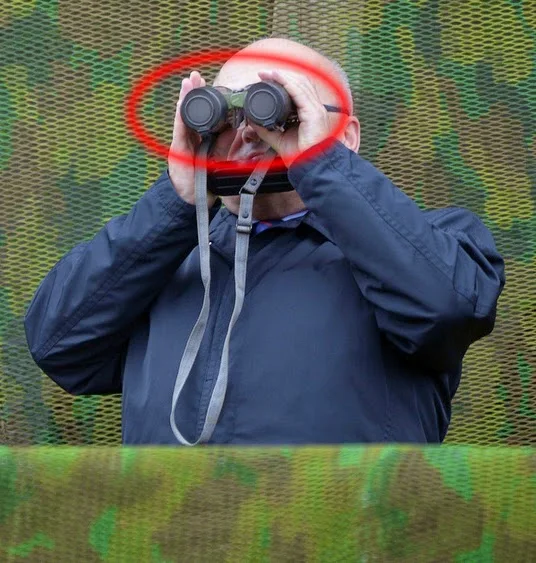



















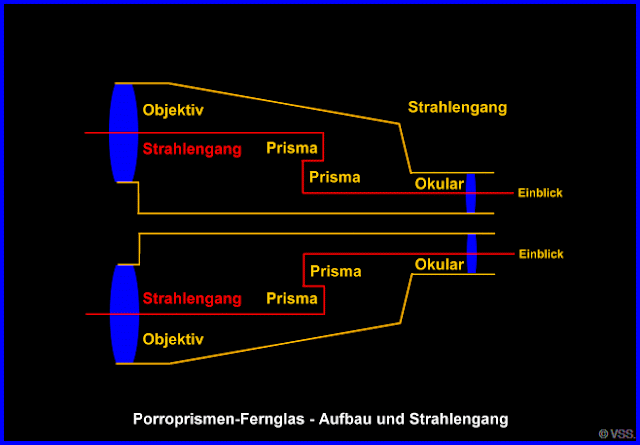
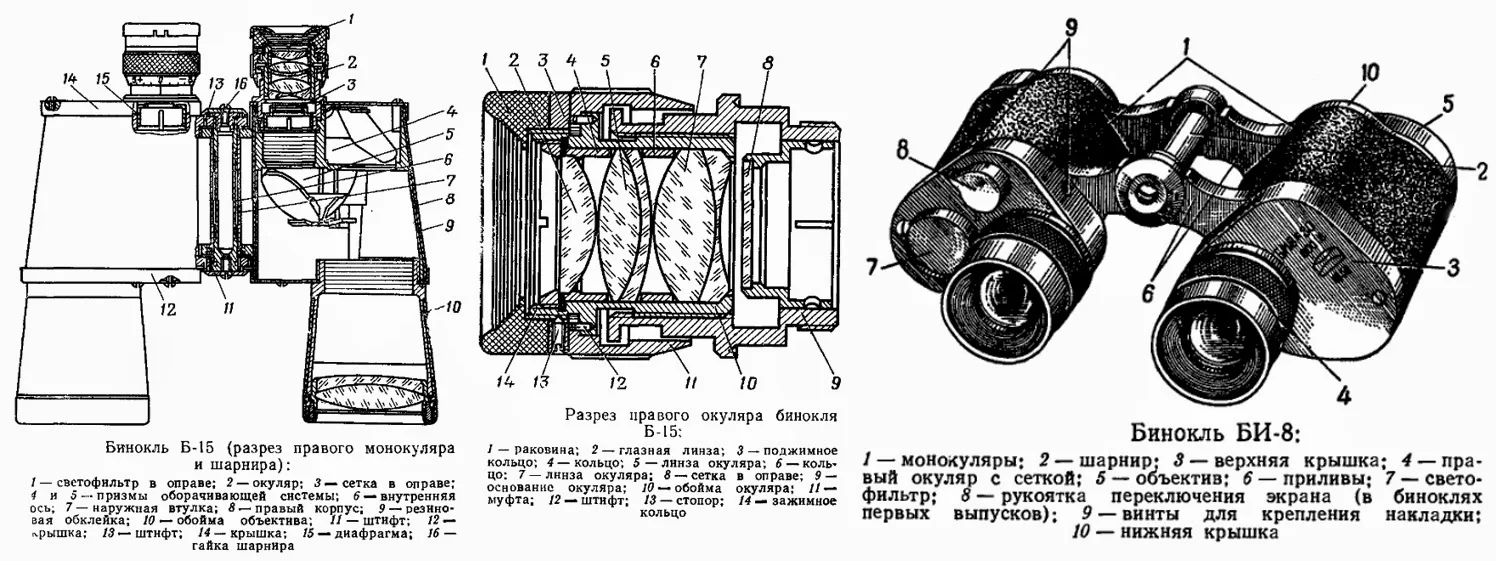

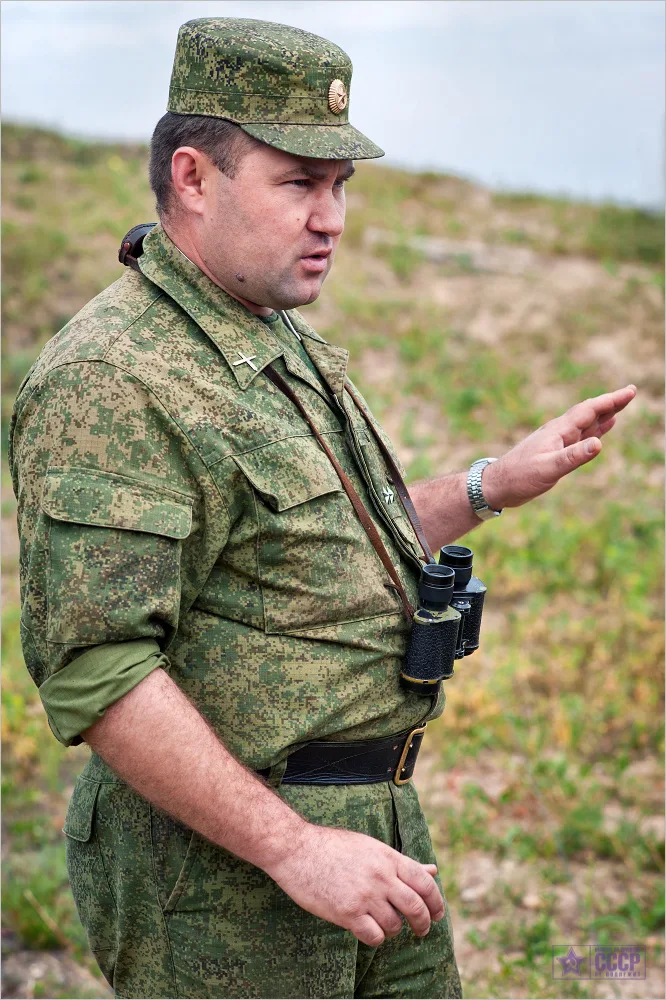





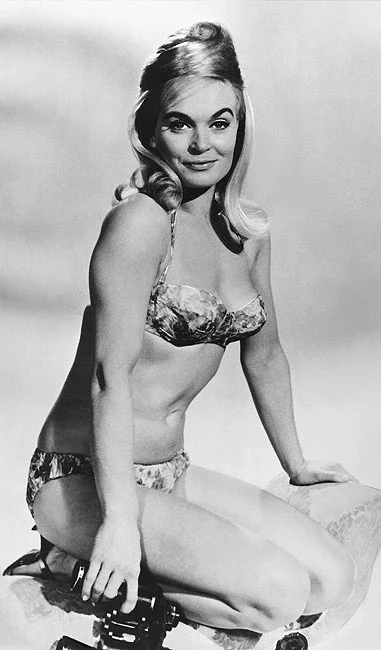

























































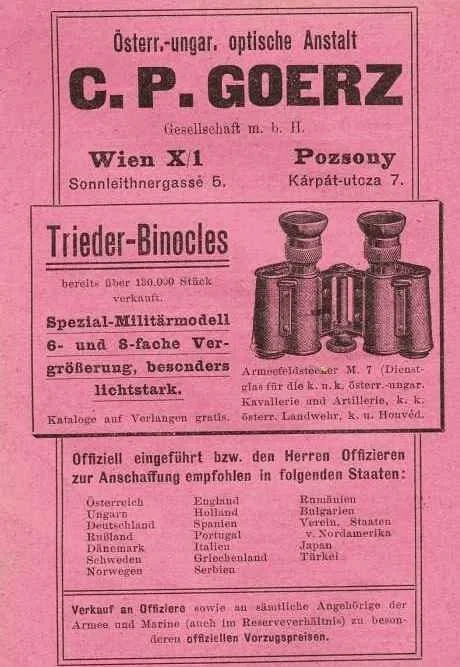








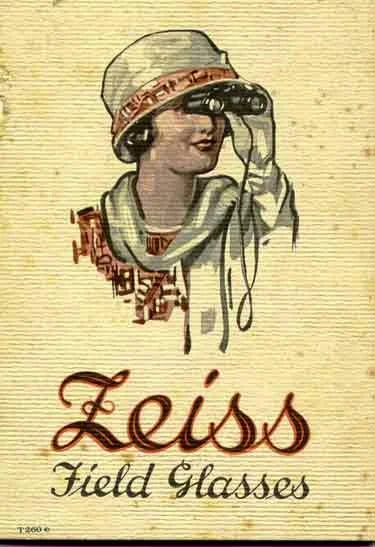




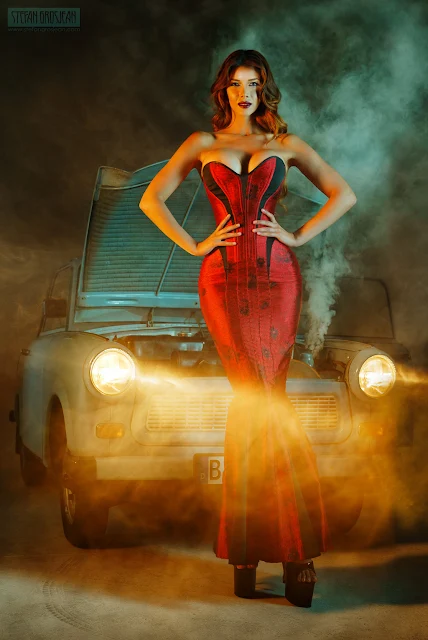











.png)





































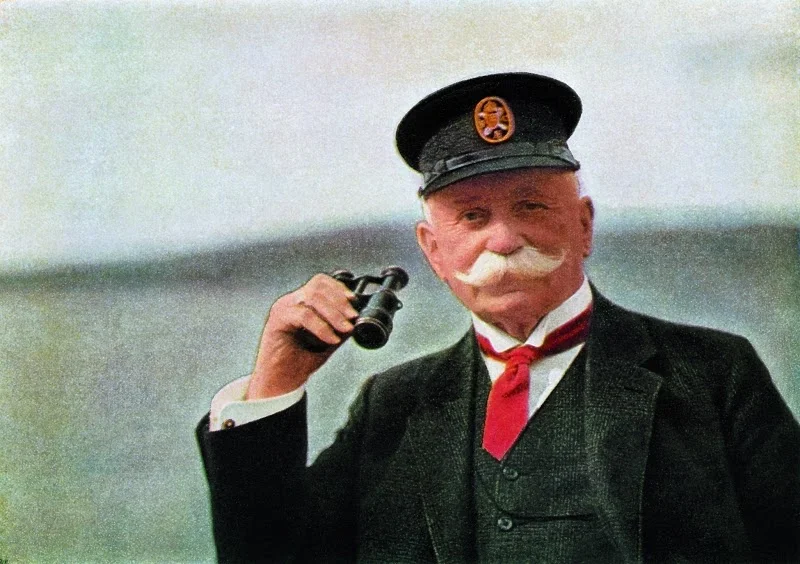


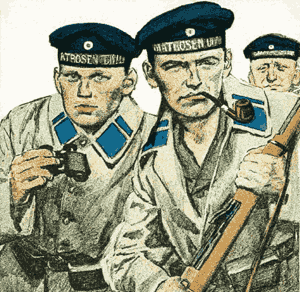


























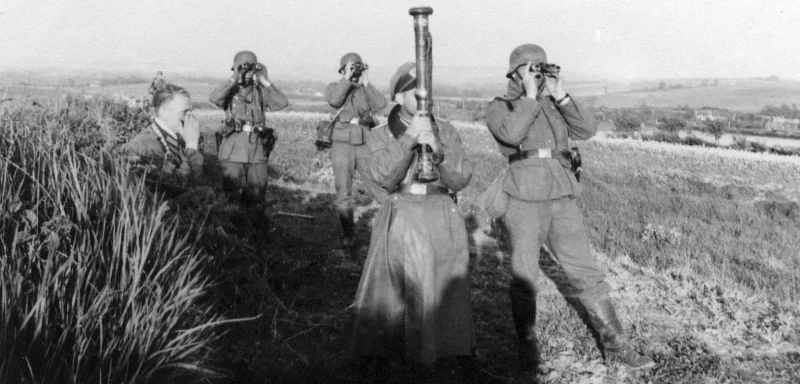








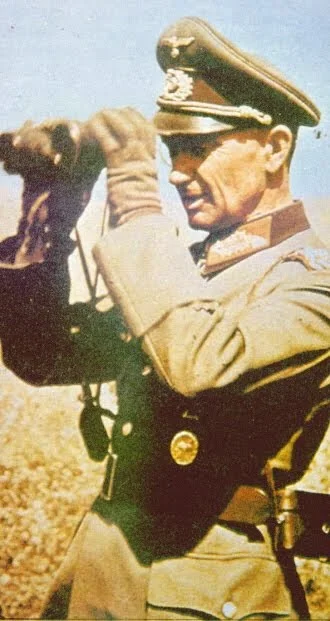





























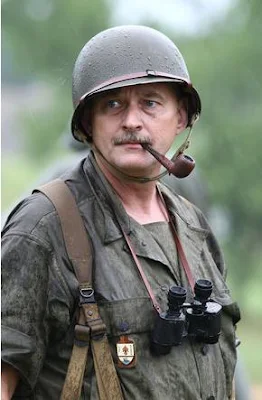





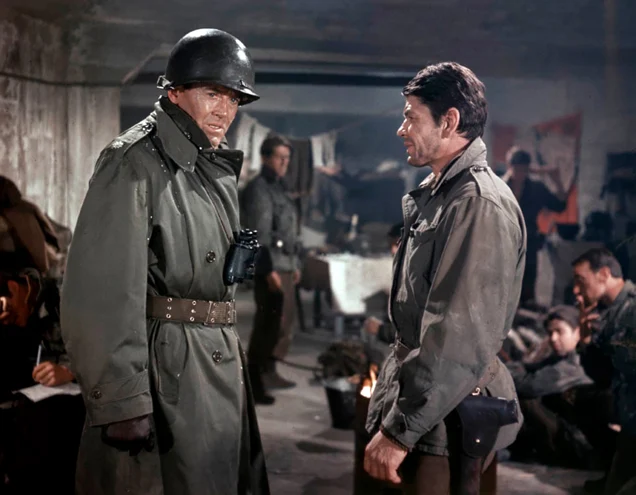






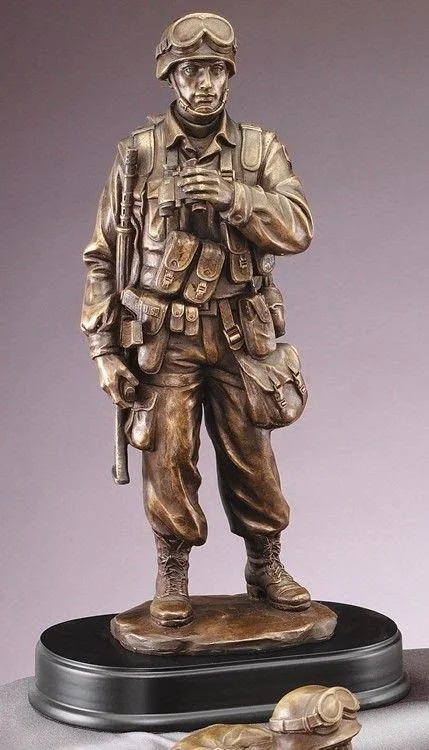








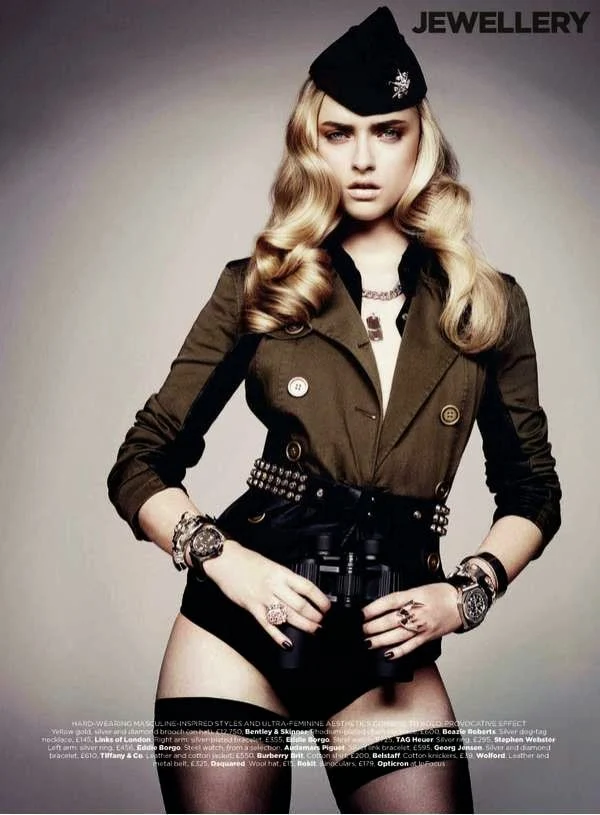










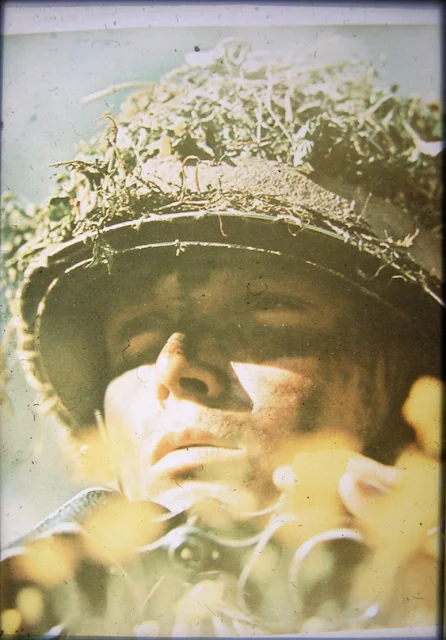







































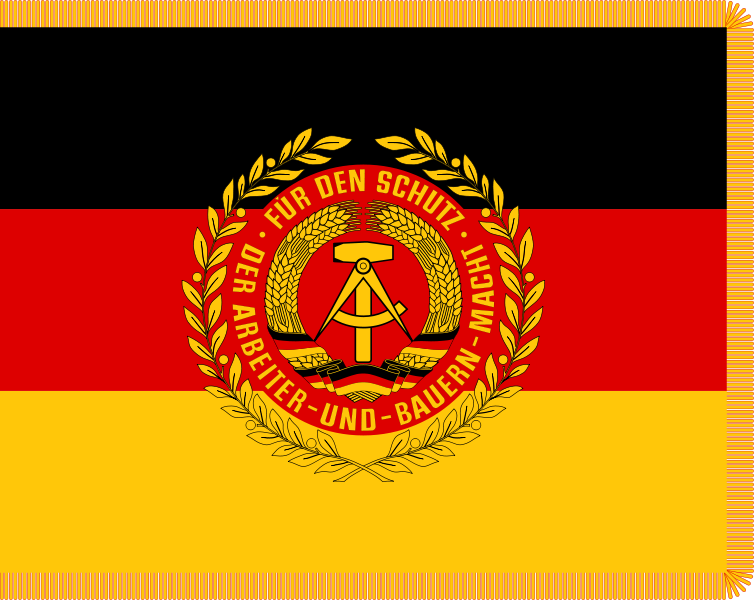














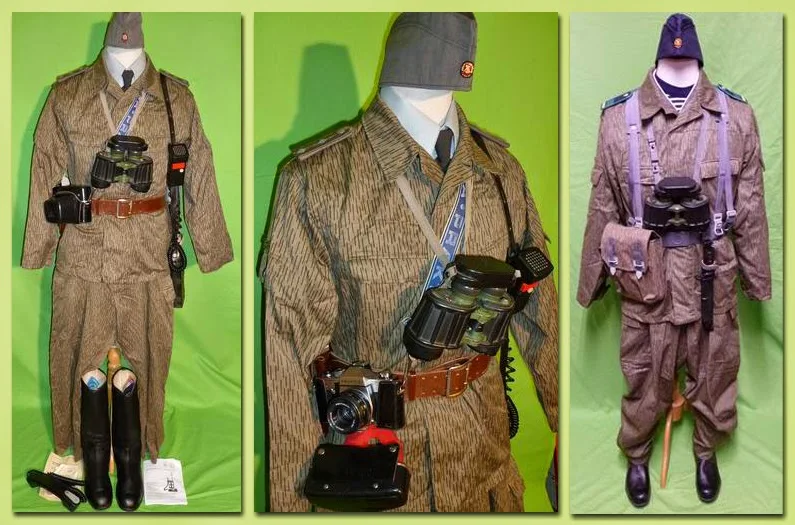

















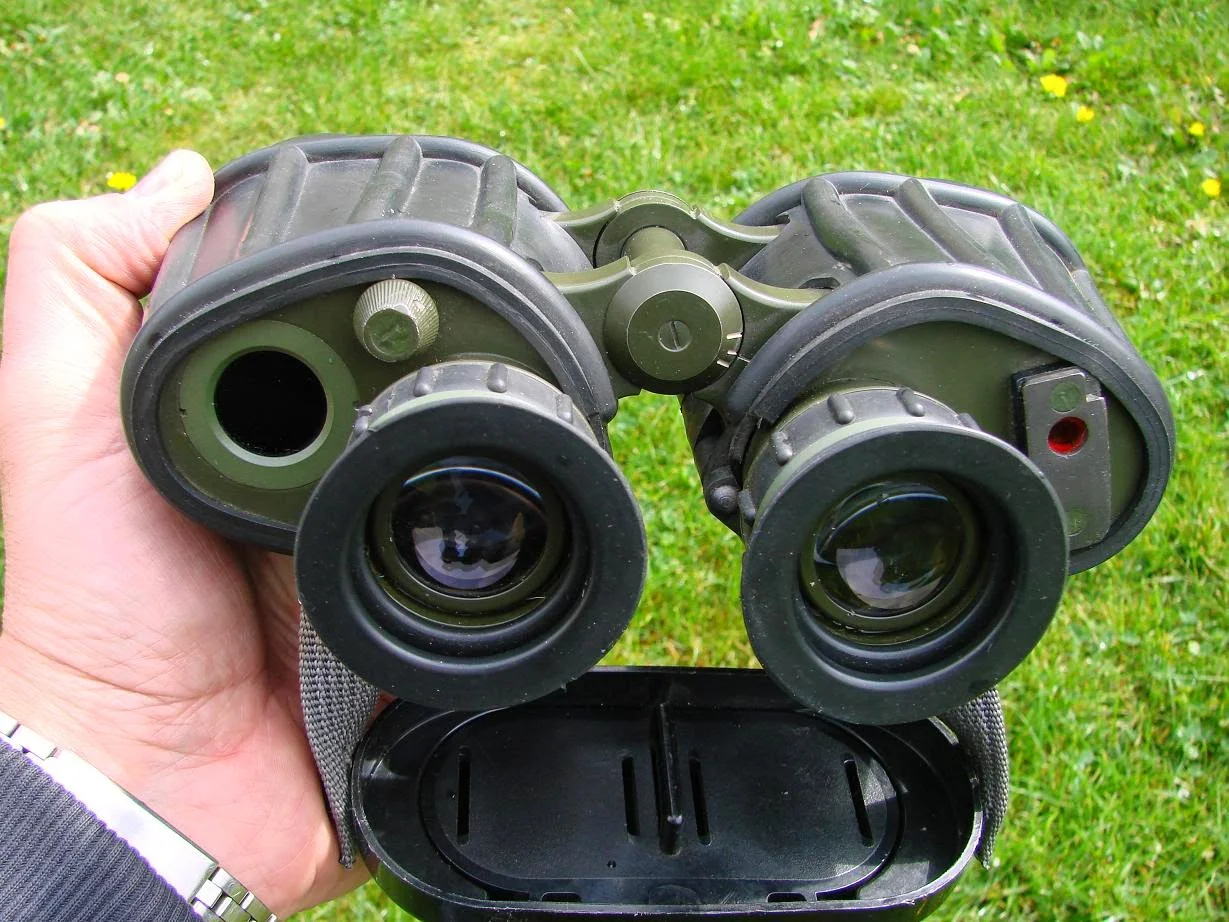











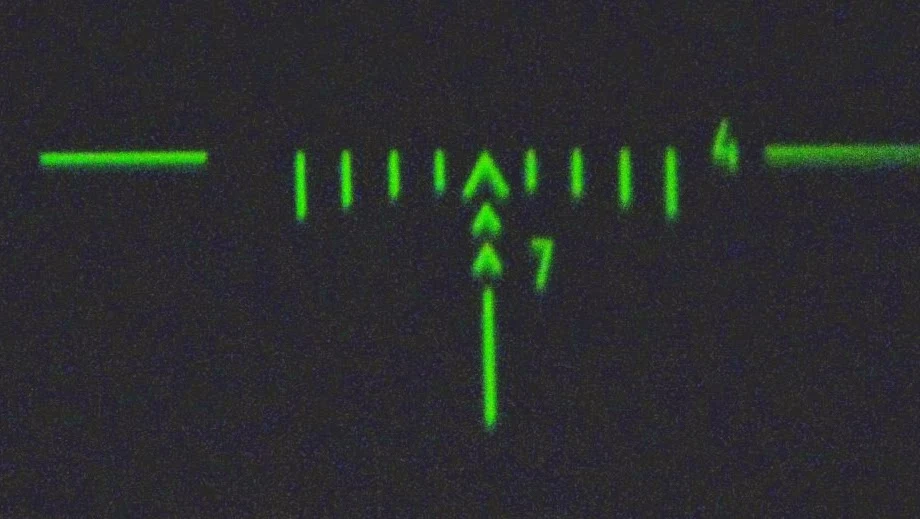
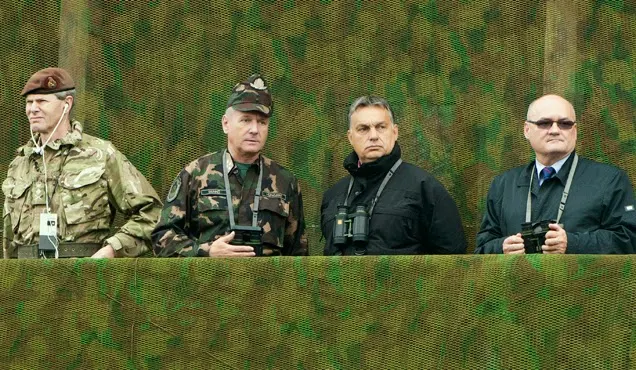








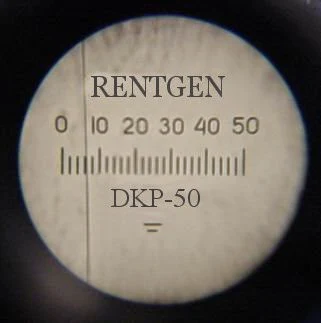







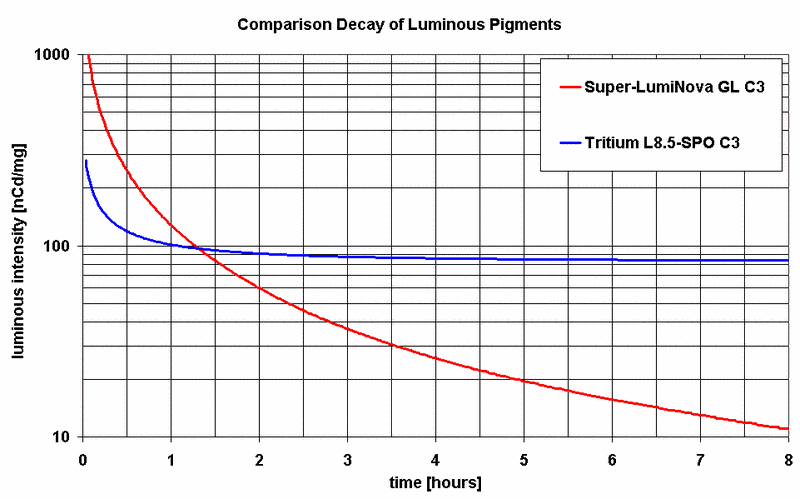


























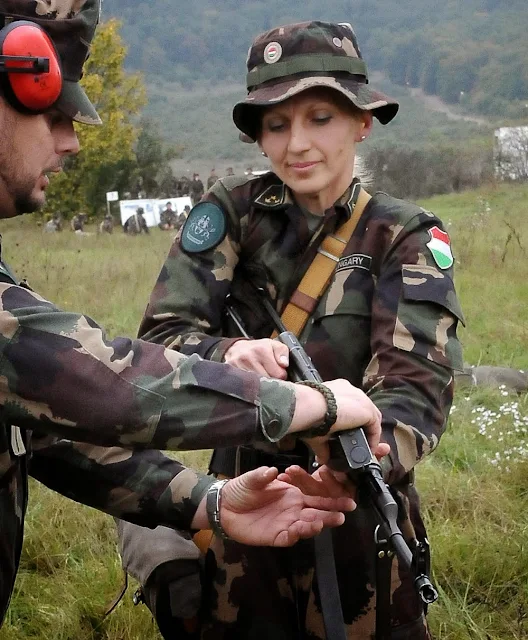









BN(KO-D)y!~~_3.jpg)














































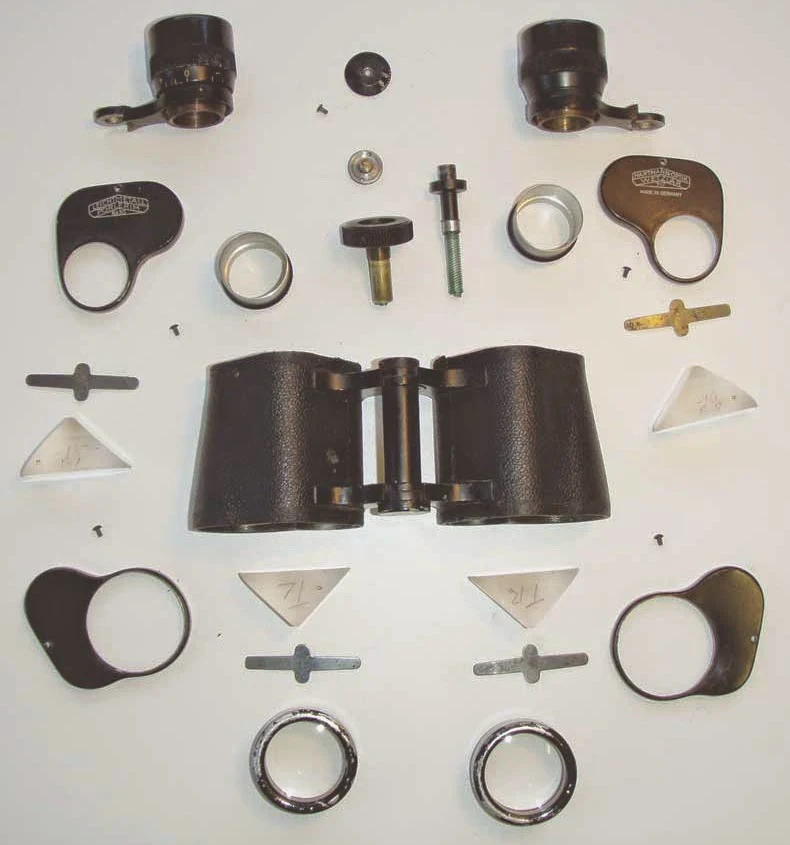




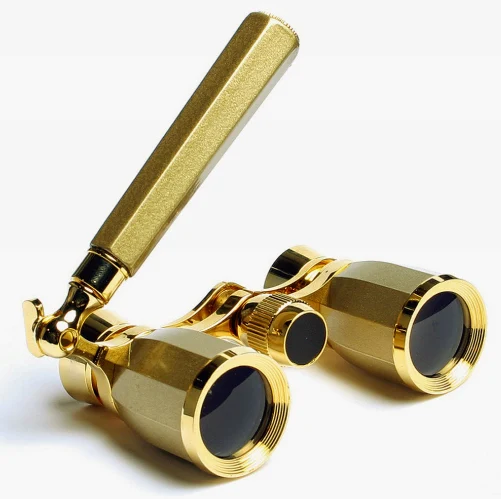






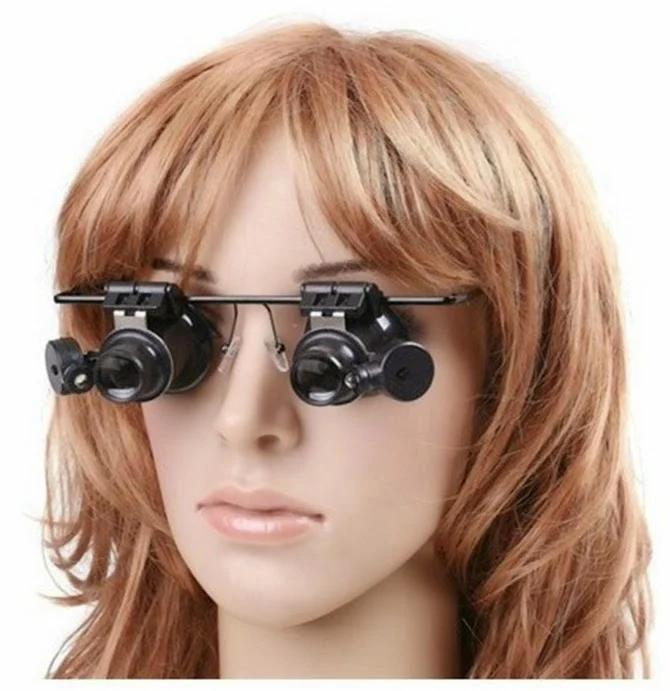









Ezt a megjegyzést eltávolította a blog adminisztrátora.
VálaszTörlés